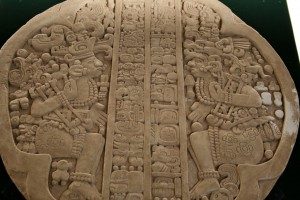
The Motmot Marker Stone. Father and son together. ''Motmot'' = nickname of the son. A link to the ''twin'' tail feathers of such birds as the Kingfisher and BEE-eater. Tiahuanaco {central} - Copan {S/E] - ALL as a means...?
"A thing has no existence relatively to ourselves before we become conscious of its existence...The term consciousness signifies realization of existence relative to a certain thing. Consciousness in the absolute sense is unconsciousness in relation to things... Consciousness means knowledge and life, unconsciousness is ignorance and death..." Quotes taken from the book by F. Hartman.
Remember - metaphorically speaking.
Example: 'To spit {snake?} in the face of ignorance'.
"Analogy is the quintessence of the 'philosophical' stone." Enlarged elsewhere and throughout.
And/or... 'The Son is the consciousness of the Father.' The 'Father' is the Mystery...the dazzling darkness of UNconscious Consciousness." Quote by Clement of Alexandria.
"We live in dynamic times when humanity is waking up to the implication of a greater transformation and the reality that we are a part of a much greater consciousness universe. The keys of Enoch [and/or 'keys of Solomon'] reveal the past, present and future of life on our planet and how our human nature is non-local and multidimensional, having vast capabilities and endowments of a divine birthright coded within us, that reveals how we are universal beings working within a higher evolutionary plan." [First page, first paragraph,'The Keys of Enoch' by J. J. Hurtak]. And...
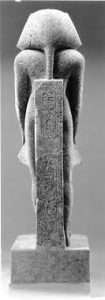
"Behind Will, stands desire."
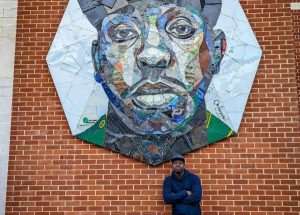
''I'M just glad he got his FLOWERS while he was alive.'' {BBC NEWS/21.2.22}.
"Life is a manifestation of power of the unimaginable cause of all existence. It must be a substantial principle, else it could not exist, because no activity can take place without substance. It has no forms, but is manifested in forms; it continually advances from lower to higher forms, and as it advances the character of forms advances with it. The building of the ''Temple of Solomon'' goes on unceasingly." [Quote taken from the book by F. Hartman].
Understand what is implied by the 'Divine bit' relative to A/B/C defines those statements. it also touches on incarnation / reincarnation - its true meaning, i.e., relative to the present moment, i.e., ''advances from lower to higher...'' As it does with the following...
"...everything alive is really alive in the fullest and most dynamic sense of the word. It twitches, searches, throbs, organises and seems aware of an upward movement.....

This foundation would be familiar to nature philosophie, and Prometheus Rising could be seen as continuing in that tradition of synthesis. Indeed, Wilson leaves the reader with a quote from the futurologist Barbara Marx Hubbard: 'The future exists first in imagination, then in Will, then in reality'." [Extract from the book 'The Magister'].
"The worker is hidden in the workshop."
"As time passed, the learned men of each culture became known as sages or wise men - 'one of those who knows'. It was Pythagoras who apparently invented the terminology - philosophy - meaning 'one who is attempting to find out'. " [From the book by Kevin Gest].

Funnel shape?
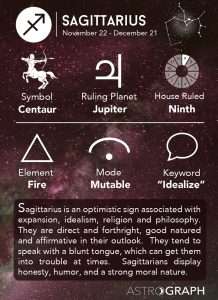
'Heart' of the scorpion to enlarge.
A practical {work in progress?} example..."The great centaur Chiron was associated with the hero Jason as well as with Heracles. There are deep mysteries connected with him and he may be equated with the human condition that expresses higher intelligence in animal form. However, there are risks in this condition for the 'intelligence' can still be expressed in contending forms {i.e.,link to the word ''gnosis'' OVER 'intelligence' - benefit of, i.e.,what it implies. This readers input. Enlarged elsewhere - and throughout} - This is represented in the Heracles legend by a great battle {'struggle/wrestle/submit' links - enlarged elsewhere} - of the centaurs {i.e.,'lower' state. Representation / expression of} - which in fact starts as a result of Heracles opening up the 'wine' store of the centaurs - a gift from Dionysos but one that the centaurs did not understand and found difficult to handle. It may be taken to mean the intoxication that can result from direct spiritual awareness. In this 'battle', which we may be assumed to be the historical human condition, the most wise and righteous of the centaurs, Chiron, is wounded by one of Heracles arrows. These {in his previous 'test'} had now been dipped in the Hydra's blood, which meant that there was no cure for anyone 'scratched' by them {i.e.,'serpent' in relation to the word ''kundalini'' i.e., what it implies relative to a learning curve - if only in the 'spiritual' sense of the word, i.e., this subject material. Therefore 'higher' {overcoming?} 'lower' }. Chiron {i.e., still in the 'lower' state - indicative of} undergoes prolonged 'suffering', for he can neither live fully nor die; a condition portraying the immortal human spirit bound to the wheel of life and death {i.e., another expression could be the 'relationship' between something Unmanifested becoming Manifested and/or 'known/UNknown'}. Eventually Chiron's suffering is ended when he is allowed to take the place of Prometheus, who can in turn be 'released' from his bondage as a consequence. In other words, the centaur is a transitional human condition, that passes when the Promethean {'higher' link?} given spirit is fully expressed in 'divine' man - an achievement which fully justifies and 'releases' Prometheus." {Manifested?}. [Extract from the book by G. Knight. All emphasis, this readers].
Keys in relation to 'manifest' - if only in defining a subject.
Food for thought..."One aspect of lodge manifestation has certainly changed over time. That is the significance given to King Solomon and his temple. It is difficult to know whether Solomon's reputation, masonically speaking, has more to do with his being an epitome of wisdom, than his commissioning a temple for the Jewish priesthood." [Extract from the book 'Freemasonry: The Reality' by T. Churton].
Think on it, in relation such books as 'A Test of Time'. Enlarged elsewhere.
And/or: " Its more of an ideology project...." {Quote by Hebrew archaeologist Israel Finkelstein. 'Jerusalem' / Sat. TV}.
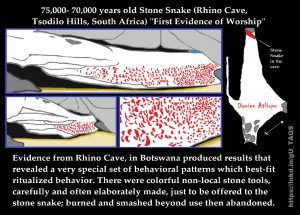
"In archaeology sometimes the smallest of finds tell the grandest of stories. Tiny marine shells found in caves all over South Africa. To small to have been collected for meat. Holes purposely made through them. Probably strung {'hung'} and worn around the neck. These were emblems, symbols of meaning - shared and understood by everyone. They found pigment on them and it was ALWAYS the same same colour - that of red ochre. Even though ochre comes in red, yellow or black." {'Human' / S1 EP1 / BBC2}.
Or chapter 'nine' [page '120'], in relation to the tale of 'Atlantis'. Lots of 'keys' used such as Poseidon, islands, red ochre, hot/cold, chariot, six winged horses, Dolphins, 'giants' before the flood, 'ten' kings, or number symbolism relative to inner/outer in relation to 'seven' and 'three', all of which when understood, explains to the reader that tales true intent. Explained within.
As does: "Yes, you did see it. And yes, she does feel it. And no, they will not remain separate. They will unite at the end of the age.
''That will be a catastrophe! And to my world I think. Not to Pans. What of the animals?"
"Yes, a catastrophe, and yes, to your world and not to Pan's. And the Animals? They will all die''
"Then what?"
"They will then forever be alive, and you shall know them as they truly are, for you too shall be alive." [Page 122/3 'Sword in the Sun' / A. Duncan].
Something to ponder on: "These types of men, the one hairless and the other shaggy, recall the old Hindu tradition that speaks of the former as a people originally from Lemuria {a continent submerged, with the exception of certain islands - Madagascar, Indonesia, Ceylon, etc.,}, who were reputed to have been beardless, that is, 'sexually' still in a phase of determination {the 'third' race}, while the Atlanteans {the 'fourth' race} were sexually determined and the men bearded. According to this view, traces of Lemures would remain on the eastern coast of Africa, while populations of the western region would hark back to Atlanteans." ['Sacred Science'].
''Poseidon who was 'master' of Atlantis.'' Question. What does it represent?

''Transforming fingers'' ? Enlarged throughout. Question. In 'profile' or 'face on' ?

Coat of Arms of Morocco. ONE of the pillars of Hercules. 'Long' tails + raised arms? In 'profile' or 'face' on?
"Your house of many mansions is not built by hands. It is situated within yourself and is an essential and permanent part of you. It is your citadel. Picture yourself standing within its portals and take conscious possession of your property." [From the book 'The Silent Road' by W. T. Pole].
Analogy: BETH {2nd letter of Hebrew Alphabet} = ''House''.
And/or: ''Pharoah'' = 'Great House'.
A {practical?} example...
Dear You,
I write this letter in the early hours of the morning thinking if my words help one person then that is something...
 Often I wish I could exchange my mind for another one, a spotless one that is seeped in eternal sunshine, instead of the dented one that feels chronically polluted. But this is the mind that I have and I know that there is good within it, in the paintings that I create, the poems that bubble and grow out of the debris...
Often I wish I could exchange my mind for another one, a spotless one that is seeped in eternal sunshine, instead of the dented one that feels chronically polluted. But this is the mind that I have and I know that there is good within it, in the paintings that I create, the poems that bubble and grow out of the debris...
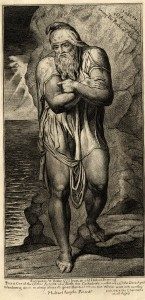
Right foot anchored.
To dispel the blocks of mental rubbish that clog up my brain I have started a happy book, which is small and easy to carry. It contains drawings and paintings and upon each new page I date it and write my achievements of the day, such as ‘read book to my child’, ‘watered the plants’, ‘worked on painting’, ‘went to the post office’, and these little moments build up to create a picture of my day that is contrary to the one in my head. These small moments help to remind me of who I am and where I am going and what I hope to achieve and do, they keep me anchored to the present...
The mind can become a suffocating prison without a ‘tent of blue’ to peer out of, I choose to unlock the door and walk out of that prison towards the meadows, towards the light and lie down in the grass, look up at the sky, see the shapes in the clouds or the patterns in the stars and dream that life can get better, if I let it. Indeed, it can, if only a tiny bit – a tiny bit is something to cherish...
Please don’t feel stuck in the darkness, I know what it’s like; you are not alone. May your life get that little bit brighter, I believe that it can and it will...
Side note: "Meaning 'tent' in Farsi, the chador is a full length outer garment worn in the Middle East." {'The Chase'}.
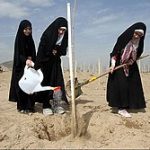
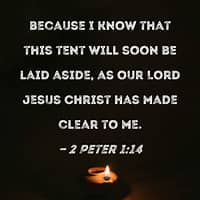 A chador[a][b] is an outer garment or open cloak worn by many women in the Persian-influenced countries of Iran, Afghanistan, Azerbaijan, Pakistan, and to a lesser extent Tajikistan, as well as in Shia communities in Iraq, Bahrain, Lebanon, India and Qatif in Saudi Arabia in public spaces or outdoors.
A chador[a][b] is an outer garment or open cloak worn by many women in the Persian-influenced countries of Iran, Afghanistan, Azerbaijan, Pakistan, and to a lesser extent Tajikistan, as well as in Shia communities in Iraq, Bahrain, Lebanon, India and Qatif in Saudi Arabia in public spaces or outdoors.
A chador is a full-body-length semicircle of fabric that is open down the front. The garment is pulled over the head, and is held closed at the front by the wearer; the chador has no hand openings, buttons, or clasps. It may also be held closed by being tucked under the wearer's arms. The word in Classical Persian could be used in reference to almost any cloth, headscarf, or even tents.[3][failed verification] This definition is mostly retained in the Eastern Persian varieties Tajiki and Dari, which commonly use reflexes of chādar in reference to almost any cloth or scarf,[4][5] including loosely worn scarves that would be inappropriate to call a chador in Iranian Persian.
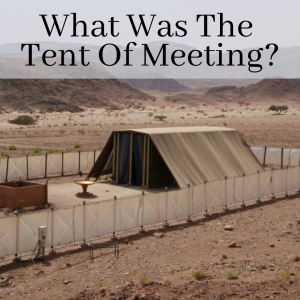
The Tent of Meeting, also known as the Tabernacle, {pitched outside the camp} is a significant biblical location where God met with His people, the Israelites. It was a temporary dwelling place for the Ark of the Covenant and the other holy items used in worship. ....
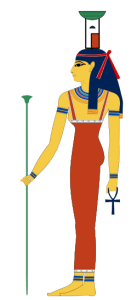
Nephthys {'dark' aspect to the 'light' of her sister Isis} - was normally portrayed as a young woman, wearing a headdress in the shape of a house and basket. Nephthys is the Greek form of an epithet (transliterated as Nebet-hut, Nebet-het, Nebt-het, from Egyptian nbt-ḥwt). The origin of the goddess Nephthys is unclear but the literal translation of her name is usually given as Lady of the House or Lady of the Temple.
Before the 1978–1979 Iranian Revolution, black chadors were reserved for funerals and periods of mourning; colorful, patterned fabrics were the norm for everyday wear. Currently, the majority of Iranian women who wear the chador use the black version outside, and reserve light-colored chadors for indoor use.
Fadwa El Guindi locates the origin of the veil in ancient Mesopotamia, where "wives and daughters of high-ranking men of the nobility had to veil".[6] The veil marked class status, and this dress code was regulated by sumptuary laws.
One of the first representation of a chador is found on Ergili sculptures and the "Satrap sarcophagus" from Persian Anatolia.[7]
The Sarcophagus of the Satrap is an ancient marble funerary monument discovered at the Ayaa Necropolis in Sidon, present-day Lebanon, and is believed to originate from the Achaemenid Persian Empire period (the mid-5th century BCE). The reliefs are believed to depict a Persian Satrap, whose body is assumed to have inhabited the tomb.
It holds historical significance for its artistic craftsmanship and cultural insights, particularly the cultural mixing in the area at the time, between Greek, Persian and Levantine cultures.
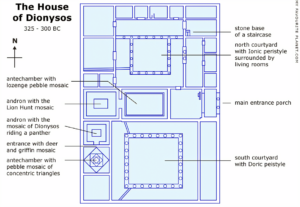
Any baskets?
The primary artistic feature is the intricate bas-reliefs on the sides of the sarcophagus: a banquet scene on one end, and a journey scene and a hunt scene on either of the two long sides. The banquet scene, where the satrap is reclining on a lavish couch, partaking in feasting and merrymaking, shows the satrap depicted regally, alluding to his high status. His exact identity remains a matter of historical debate.
Scholars offer various interpretations of the banquet scene. Some suggest it represents the satrap's celebration of his earthly life and his perceived divine power in the afterlife. Others argue it simply portrays indigenous nobles enjoying life.
Ornamental details, such as the palmettes and lotus flowers, are considered to align with Ionic decorative motifs.
It is considered to reflects interactions between Greek and Persian cultures in the ancient Mediterranean world.

When God gave Moses the Law at Mount Sinai, God also gave him instructions for making a sacred tent of meeting, also known as the “tabernacle” (Exodus 25:1–27:21; 36:1–38:31). This sacred tent was to be Israel's place of worship, where the people would bring gifts and sacrifices to God. Flat top = 'horizon' ?

Open Hand Monument, rotating in the wind.....Chandigarh, India...
Refresher: I think it is right to refresh your memory as long as I live in the tent of my body, 14because I know that this tent will soon be laid aside, as our Lord Jesus Christ has made clear to me. 15And I will make every effort to ensure that after my departure, you will be able to recall these things at all times.…
Forgetting/Remembering.
Jesus asked a third time, “Simon son of John, do you love Me?” Peter was deeply hurt that Jesus had asked him a third time, “Do you love Me?” “Lord, You know all things,” he replied. “You know I love You.” Jesus said to him, “Feed My sheep. 18Truly, truly, I tell you, when you were young, you dressed yourself and walked where you wanted; but when you are old, you will stretch out your hands, and someone else will dress you and lead you where you do not want to go.” 19Jesus said this to indicate the kind of death by which Peter would glorify God. And after He had said this, He told him, “Follow Me.”…

In general, memory involves the confluence of Chokhmah and Binah. Chokhmah is past and Binah is future. To bring something to the present in memory, they must be together. However, when each of them goes back to its own place, they are both in the aspect of “back to back.” This aspect results in forgetting (Etz Chaim, Shaar Shevirath HaKelim 2). {'The Lost Princess' / Rebbe Nachman}.
Serapis?
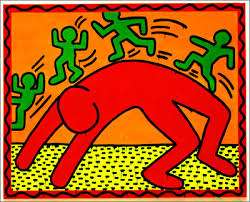 CONTINUED: You have to look at each day like a new canvas and decide the painting you want your day to be rather than paint the same old dark picture that just compounds that sense of doom, gloom and hopelessness. You have to choose the colours you want your painting to be even if your default stance is to go for morose shades of grey and black. There are flecks of light and colour in each day, tiny ones like a bright ochre, or a crimson scarlet. These iridescent colours shine and smile out at us all. They are friendly and warm. These colours can guide you towards a brighter place and help you paint a different sort of painting. A painting that when you look at it speaks to you like an old friend, inspires, comforts and stirs something deep inside, you just have to open your eyes a little wider and let those colours in.''
CONTINUED: You have to look at each day like a new canvas and decide the painting you want your day to be rather than paint the same old dark picture that just compounds that sense of doom, gloom and hopelessness. You have to choose the colours you want your painting to be even if your default stance is to go for morose shades of grey and black. There are flecks of light and colour in each day, tiny ones like a bright ochre, or a crimson scarlet. These iridescent colours shine and smile out at us all. They are friendly and warm. These colours can guide you towards a brighter place and help you paint a different sort of painting. A painting that when you look at it speaks to you like an old friend, inspires, comforts and stirs something deep inside, you just have to open your eyes a little wider and let those colours in.''
Side note: ''A painter that only uses red''. {Jaime Lannister}.
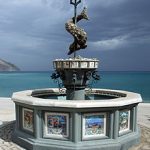 Continued: "Take good care of yourself, be kind to yourself, be your number one ally, and keep searching for that fleck of light sleeping in the shadows. It is there, I can see that tiny fleck right now – put it in your pocket and cherish it.''[Q. S. Lam]. Question. 'See' any keys?
Continued: "Take good care of yourself, be kind to yourself, be your number one ally, and keep searching for that fleck of light sleeping in the shadows. It is there, I can see that tiny fleck right now – put it in your pocket and cherish it.''[Q. S. Lam]. Question. 'See' any keys?
Try the Mona Lisa - to 'see' something from a different perspective. The above example from an 'unknown' position - the 'Mona' from a 'known' one - yet both contain those common factors. Question. What does that imply?
Was the Mona Lisa created under a psychosis?
''Tent of blue'' and ''colours'' in relation to: "It is essential to understand thoroughly what the word 'Neter' {key} means. We have seen that in every month of each seasonal period of the year, every hour of the day has its Neter, because each one of these hours has its own character. It is known that the blue morning-glory blooms at sunrise and closes at midday like the lotus flower. This is observed but not understood. More easily understood is the fact that certain fruits require afternoon sun in order to ripen and to colour..." ['Sacred Science'].
''Blue'' {morning}, ''fruit'' {afternoon} - ALL in relation to the 'fruit of ones labours' - as a means...? REPRESENTED {beginnings of} - with the 'lotus' flower. Try ''blue'' for other examples.
Aquarius?
Amenhotep III / Hatshepsut to enlarge.

''The Birth of the New Man.'' 'Egg/Incarnation' to enlarge.
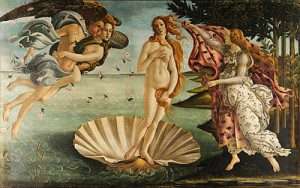 A working example: ''Oh Unas you are not dead. You are alive to sit on the Throne of Osiris. Your Scepter is in your hand that you may give orders to the living. The Handle of the Lotus shaped Scepter is in your hand....The Pavilion of Unas is woven with Reeds...The water of Unas is wine, like that of Re....The abomination of Unas is hunger. He does not eat it. The abomination of Unas is thirst. He does not eat it. Unas it is indeed....His Nurse is the Milk goddess. It is She who makes Him live again. She gives him birth. Unas is conceived at night. He is born at night. For he belongs to the Followers of Re, who are before the Morning Star. He is conceived and born in the Watery Abyss. He has come. He has brought your Bread which he has found there. The Eye of Horus trickles on the bush of the Yew Plant. Khentiamenti comes to him indeed. He has brought him the 'food' of Horus, who is at the Head of his Houses....Of what he eats, Unas eats.....One joint and one cake, this is his offering...'' [Page 34 'The Pyramid Texts' / W. Budge].
A working example: ''Oh Unas you are not dead. You are alive to sit on the Throne of Osiris. Your Scepter is in your hand that you may give orders to the living. The Handle of the Lotus shaped Scepter is in your hand....The Pavilion of Unas is woven with Reeds...The water of Unas is wine, like that of Re....The abomination of Unas is hunger. He does not eat it. The abomination of Unas is thirst. He does not eat it. Unas it is indeed....His Nurse is the Milk goddess. It is She who makes Him live again. She gives him birth. Unas is conceived at night. He is born at night. For he belongs to the Followers of Re, who are before the Morning Star. He is conceived and born in the Watery Abyss. He has come. He has brought your Bread which he has found there. The Eye of Horus trickles on the bush of the Yew Plant. Khentiamenti comes to him indeed. He has brought him the 'food' of Horus, who is at the Head of his Houses....Of what he eats, Unas eats.....One joint and one cake, this is his offering...'' [Page 34 'The Pyramid Texts' / W. Budge].
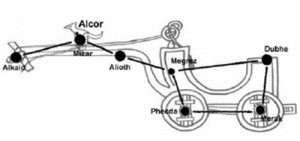 Side note: "His death on the first Sunday in August—called Lugh tiasadh ('Commemoration of Lugh'), later altered to 'Lugh-mass' or 'Lammas'—was until recently observed in Ireland with Good Friday-like mourning and kept as a feast of dead kinsfolk, the mourning procession being always led by a young man carrying a hooped wreath. Lammas was also observed as a mourning feast in most parts of England in mediaeval times; which accounts for the extraordinary popular demonstrations when William Rufus's body was brought up from the New Forest for burial. The peasants were bewailing a mythical Lugh when along came the body of their own red-headed king laid on a harvest cart. Nowadays the only English Lammas celebrated is the Lancashire Wakes Week, the dismal meaning of which has been forgotten among the holiday distractions of Blackpool." {'The White Goddess' / R. Graves}.
Side note: "His death on the first Sunday in August—called Lugh tiasadh ('Commemoration of Lugh'), later altered to 'Lugh-mass' or 'Lammas'—was until recently observed in Ireland with Good Friday-like mourning and kept as a feast of dead kinsfolk, the mourning procession being always led by a young man carrying a hooped wreath. Lammas was also observed as a mourning feast in most parts of England in mediaeval times; which accounts for the extraordinary popular demonstrations when William Rufus's body was brought up from the New Forest for burial. The peasants were bewailing a mythical Lugh when along came the body of their own red-headed king laid on a harvest cart. Nowadays the only English Lammas celebrated is the Lancashire Wakes Week, the dismal meaning of which has been forgotten among the holiday distractions of Blackpool." {'The White Goddess' / R. Graves}.
Northern or Southern hemisphere?
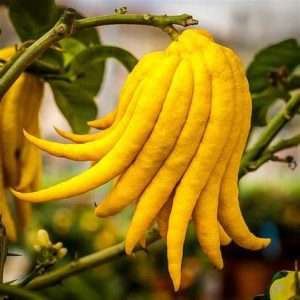
Citrus medica var. sarcodactylis, or the fingered citron, is an unusually-shaped citron variety whose fruit is segmented into finger-like sections, resembling those seen on representations of the Buddha. It is called Buddha's hand in many languages including English, Chinese, Japanese, Korean, Vietnamese, and French.
The outpouring of the Holy Spirit came during the Jewish feast of harvest, of fruits, called Shavuot. The Spirit wants to bear fruit in us, a varied and distinct fruit in each of us, but one that builds unity and communion. What are the fruits of the Holy Spirit, and how can I recognize them? And how can I better prepare my personal "soil" so that the Spirit may bear fruit in me?
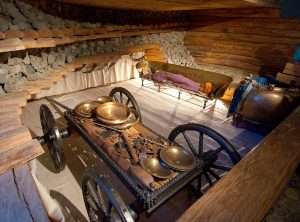 Lammas (from Old English hlāfmæsse, "loaf-mass"), also known as Loaf Mass Day, is a Christian holiday celebrated in some English-speaking countries in the Northern Hemisphere[citation needed] on 1 August. The name originates from the word "loaf" in reference to bread and "Mass" in reference to the Eucharist.[3] It is a festival in the liturgical calendar to mark the blessing of the First Fruits of harvest, with a loaf of bread being brought to the church for this purpose.[2] Lammastide falls at the halfway point between the summer solstice and the autumn equinox.[4][5] Christians also have church processions to bakeries, where those working therein are blessed by Christian clergy.[6]
Lammas (from Old English hlāfmæsse, "loaf-mass"), also known as Loaf Mass Day, is a Christian holiday celebrated in some English-speaking countries in the Northern Hemisphere[citation needed] on 1 August. The name originates from the word "loaf" in reference to bread and "Mass" in reference to the Eucharist.[3] It is a festival in the liturgical calendar to mark the blessing of the First Fruits of harvest, with a loaf of bread being brought to the church for this purpose.[2] Lammastide falls at the halfway point between the summer solstice and the autumn equinox.[4][5] Christians also have church processions to bakeries, where those working therein are blessed by Christian clergy.[6]
While Lammas is traditionally a Christian holy day, some neopagans have adopted the name and date for one of their harvest festivals in their Wheel of the Year. It is also the same date as the Gaelic harvest festival Lughnasadh.[7]
Continued: Khenti-Amentiu, also Khentiamentiu, Khenti-Amenti, Kenti-Amentiu and many other spellings, is an ancient Egyptian deity whose name was also used as a title for Osiris and Anubis. The name means "Foremost of the Westerners" or "Chief of the Westerners", where "Westerners" refers to the dead.[1]
 Khenti-Amentiu was depicted as a jackal-headed deity at Abydos in Upper Egypt, who stood guard over the city of the dead. Khenti-Amentiu is attested early at Abydos, perhaps even earlier than the unification of Egypt at the start of the Early Dynastic Period (c. 3100–2686 BC). The name appears on the necropolis cylinder seals for the First Dynasty pharaohs Den and Qa'a, naming each of their predecessors with the title "Horus Khenti-Amentiu", starting with "Horus Khenti-Amentiu Narmer". A temple dating to predynastic times was also founded in Abydos for this god. Toby Wilkinson suggests that, even at this early stage, Khenti-Amentiu's name may have been simply an epithet of Osiris.[2]
Khenti-Amentiu was depicted as a jackal-headed deity at Abydos in Upper Egypt, who stood guard over the city of the dead. Khenti-Amentiu is attested early at Abydos, perhaps even earlier than the unification of Egypt at the start of the Early Dynastic Period (c. 3100–2686 BC). The name appears on the necropolis cylinder seals for the First Dynasty pharaohs Den and Qa'a, naming each of their predecessors with the title "Horus Khenti-Amentiu", starting with "Horus Khenti-Amentiu Narmer". A temple dating to predynastic times was also founded in Abydos for this god. Toby Wilkinson suggests that, even at this early stage, Khenti-Amentiu's name may have been simply an epithet of Osiris.[2]
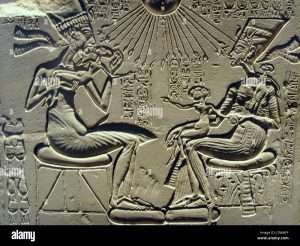
"When Ra weeps, the water that flows from his eyes upon the ground, turns into working bees." Cancer?
Venus is in Earth's sky bright enough to be visible without aid, making it one of the classical planets that human cultures have known and identified throughout history, particularly for being the third brightest object in Earth's sky after the Sun and the Moon. Because the movements of Venus appear to be discontinuous (it disappears due to its proximity to the sun, for many days at a time, and then reappears on the other horizon), some cultures did not recognize Venus as a single entity;[192] instead, they assumed it to be two separate stars on each horizon: the morning and evening star.[192] 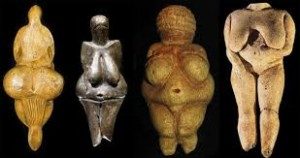 Nonetheless, a cylinder seal from the Jemdet Nasr period and the Venus tablet of Ammisaduqa from the First Babylonian dynasty indicate that the ancient Sumerians already knew that the morning and evening stars were the same celestial object.[193][192][194]
Nonetheless, a cylinder seal from the Jemdet Nasr period and the Venus tablet of Ammisaduqa from the First Babylonian dynasty indicate that the ancient Sumerians already knew that the morning and evening stars were the same celestial object.[193][192][194]
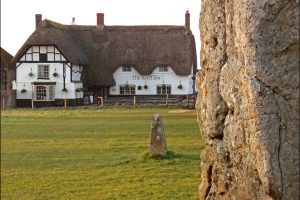
Red Lion Pub: Located in a unique spot in the centre of the Avebury stone circle, The Red Lion, surrounded by Neolithic stone monuments. What about the Green lion? Silbury?
In the Old Babylonian period, the planet Venus was known as Ninsi'anna, and later as Dilbat.[195] The name "Ninsi'anna" translates to "divine lady, illumination of heaven", which refers to Venus as the brightest visible "star". Earlier spellings of the name were written with the cuneiform sign si4 (= SU, meaning "to be red"), and the original meaning may have been "divine lady of the redness of heaven", in reference to the colour of the morning and evening sky.[196]
The Chinese historically referred to the morning Venus as "the Great White" (Tàibái 太白) or "the Opener (Starter) of Brightness" (Qǐmíng 啟明), and the evening Venus as "the Excellent West One" (Chánggēng 長庚).[197]
''In the Christian tradition it is the twentyfifth of March - the date that Mary was told she would give birth to Jesus.''

Rungs of a ladder? 'Shaded' top?

Kiosk at Philae facing east. Trajan's Kiosk, also known as Pharaoh's Bed {'COUCH'?} (Arabic: سرير فرعون) by the locals, is a hypaethral temple currently located on Agilkia Island in southern Egypt. The unfinished monument is attributed to Trajan, Roman emperor from 98 to 117 AD, due to his depiction as pharaoh seen on some of the interior reliefs.[1] However, the majority of the structure dates to an earlier time, possibly to the reign of Augustus.[2][3] The temple was originally built on the island of Philae, near the lower Aswan Dam, and served as main entrance to the Philae Island Temple Complex from the Nile river.[4] It was relocated to Agilika Island in the 1960s as part of the International Campaign to Save the Monuments of Nubia to save it from the rising waters of the Nile that followed the construction of the Aswan High Dam.
This 15-x-20 metre kiosk is 15.85 metres high; its function was likely "to shelter the bark {'barque'?} of Isis at the eastern banks" of Philae island.[3] Its four by five columns each carry "different, lavishly structured composite capitals that are topped by 2.10-metre-high piers" and were originally intended to be sculpted into Bes piers, similar to the birthhouses of Philae, Armant, and Dendera though this decoration was never completed.[3]
The structure is today roofless,[5] but sockets within the structure's architraves suggest that its roof, which was made of timber, was indeed constructed in ancient times.[3] Three 12.50-metre-long, presumably triangulated trusses, "which were inserted into a ledge at the back of stone architecture, carried the slightly vaulted roof."[3] All the fourteen columns are connected by a screening wall, with entrances in the eastern and western facades.[4] This building represents an example of the unusual combination of wood and stone in the same architectural structure for an Egyptian temple.[3] The attribution to Emperor Trajan is based on a carving inside the kiosk structure, depicting the emperor burning incense before Osiris and Isis.[4] 'nose' to enlarge.

Bootes to enlarge.
Something extra: Philae Island, originally near the expansive First Cataract of the Nile River, was a site of religious significance long before the construction of the Temple of Isis. The island was revered as one of the burial places of Osiris, making it a sacred site of pilgrimage for the worshipers of the Osirian religion. The temple itself was constructed primarily during the Ptolemaic dynasty, { Nectanebo began it with a "huge stone arch dedicated to Isis" / 'Blowing Up History' / S9 EP6} - which ruled from 305 to 30 BC, although construction continued into the Roman period. This era marked a time of significant Greek influence on Egyptian culture, as evidenced by the mixed architectural styles seen in the temple complex. The Temple of Isis was dedicated to the goddess Isis, a major deity in ancient Egyptian religion who was associated with motherhood, magic, and fertility. Isis was believed to have magical powers that could restore life to the dead, including her husband Osiris, making her a central figure in Egyptian mythology and religion.

"I bring up an individual type as a point of departure to talk about. The one {'emotion'?} that is strongest will pull you first." [Page 4 'Stopping and Seeing' / Translated by T. Cleary].
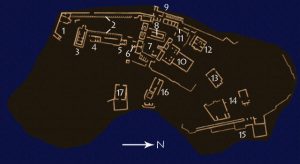
1: Nectanebo’s Kiosk
3: Temple of Ary-hes-nefer (Hor–Anhur)
4: Chapel of Mandulis
5: Chapel of Imhotep
12: Temple of Horus the Avenger
13: Temple of Augustus
14: Roman Gate
15: Roman Quay
16: Temple of Hathor
17: Trajan’s Kiosk
Temple of Isis
2: West and East Colonnades
6: Gate of Ptolemy II
7: Outer Courtyard
8: Mammisi (birth house)
9: Nilometer
10: Temple of Isis
11: Hadrian’s Gate
AND/OR: Built to honour the goddess Isis, this was the last temple built in the classical Egyptian style. Construction began around 690 BC, and it was one of the last outposts where the goddess was worshipped. The cult of Isis continued here until at least AD 550. The boat leaves you near the Kiosk of Nectanebo, the oldest part, and the entrance to the temple is marked by the 18m-high first pylon with reliefs of Ptolemy XII Neos Dionysos smiting enemies.
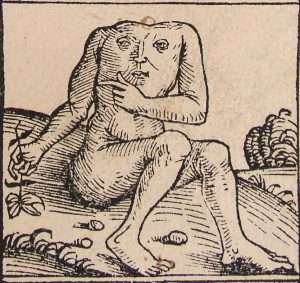
Naked = 'birth' = child?
In the central court of the Temple of Isis, the mammisi (birth house) is dedicated to Horus, son of Isis and Osiris. Successive pharaohs reinstated their legitimacy as the mortal descendants of Horus by taking part in rituals celebrating the Isis legend and the birth of her son Horus in the marshes. The second pylon leads to a hypostyle hall, with superb column capitals. Note also the reuse of the temple as a Christian church, with crosses carved into the older hieroglyph reliefs, and images of the Egyptian gods carefully defaced. Beyond lie three vestibules, leading into the Inner Sanctuary of Isis. Two granite shrines stood here, one containing a gold statue of Isis and another containing the barque in which the statue travelled, but these were long ago moved to Florence and Paris, and only the stone pedestal for the barque remains, inscribed with the names of Ptolemy III and his wife, Berenice. Take a side door west out of the hypostyle hall to the Gate of Hadrian where there is an image of the god Hapi, sitting in a cave at the First Cataract, representing the source of the river Nile.
East of the second pylon is the delightful Temple of Hathor, decorated with reliefs of musicians (including an ape playing the lute) and Bes, the god of childbirth. South of this is the elegant, unfinished pavilion by the water’s edge, known as the Kiosk of Trajan (‘Pharaoh’s Bed’), perhaps the most famous of Philae’s monuments and one that was frequently painted by Victorian artists, whose boats were moored beneath it.

'ten' ?
And/or: ''Located at the N/W edge of the Arabian Desert, the ancient city of Petra recieved less than 4 iches of rain each year....The capital of the Nabataean Kingdom {1st century BC - 1st century AD}. The crossroads of the caraven trade routes connecting Arabia and the Mediterranean....On a terrace in the middle of the city evidence of a pool, hewn from bedrock. In the middle an island with a pavilion, decorated with imported marble {'foreign/abroad'?} and painted stucco - an ideal spot for banqueting. Doors on all four sides that can 'see' anyone approaching.'' [Page 26 'Archaeology' / March/April 2023].
'Overhang'?
Side note: According to Egyptian myth, when Ra became too old and weary to reign on earth he relinquished and went to the skies.[1] Ra was said to travel through the sky on the barge, providing light to the world.[2] Each twelfth of his journey formed one of the twelve Egyptian hours of the day, each overseen by a protective deity. When the sun set and twilight came, he and his vessel passed through the akhet, the horizon, in the west, and traveled to the underworld.[3]

'153'? Hands without the thumb?

Isle of 'glass'.
At times the horizon is described as a gate or door that leads to the Duat. There he would have to sail on the subterrestrial Nile and cross through the twelve gates and regions,[3] with each hour of the night considered a gate overseen by twelve more protective deities. Every night enormous serpent Apophis, the god of chaos (isfet) attempted to attack Ra and stop the sun-boat's journey. After defeating the snake, Ra would leave the underworld, returning emerging at dawn, lighting the day again.
He was said to travel across the sky in his falcon-headed form on the Mandjet Barque through the hours of the day, and then switch to the Mesektet Barque in his ram-headed form to descend into the underworld for the hours of the night.[4] The progress of Ra upon the Mandjet was sometimes conceived as his daily growth, decline, death, and resurrection and it appears in the symbology of Egyptian mortuary texts.
'Cloud by day and fire by night'?
One of the most well known examples of this is the Khufu ship, which was built and then buried at Giza along with Khufu and the rest of the items he would take with him to the afterlife.[5] The ship was originally displayed in the specially-built Giza Solar boat museum, but was subsequently moved to the Grand Egyptian Museum.[6][7]

Atlas = ''the first cervical vertebrae.''
 ''Wisdom - a secret contemplation - is like a ladder. Men mount by means of ladders to climb up to possessions and treasures and things in strong places {'fortress' or 'pavilion'?}. By means of this secret contemplation, without knowing how, the soul ascends and climbs up to a knowledge and possession of the good things and treasures of Heaven....This is the treasure of the strong place of Sion - which is happiness...In order that men may mount, it has them also that they may descend {exalt/humble links}....This is the ordinary course of the state of contemplation until the soul arrives at a state of quietness; it never remains in the same state for long together, but is ascending and descending continually...Eventually to become united {with 'him'}, which comes to pass at the summit of this ladder, for the ladder rests and leans upon him. For this ladder of contemplation from god to man and man to god, ascending and descending - who himself is leaning UPON the end of the ladder....We observe then that the steps of this ladder of love by which the soul mounts, then, one by one, to God, are ten. The first step causes the soul to lanquish. The Bride speaks from this first step of 'love': 'I adjure you, daughters of Jerusalem, that you find my Beloved....'' [Pages 91-3 'Dark Night of the Soul' / St. John].
''Wisdom - a secret contemplation - is like a ladder. Men mount by means of ladders to climb up to possessions and treasures and things in strong places {'fortress' or 'pavilion'?}. By means of this secret contemplation, without knowing how, the soul ascends and climbs up to a knowledge and possession of the good things and treasures of Heaven....This is the treasure of the strong place of Sion - which is happiness...In order that men may mount, it has them also that they may descend {exalt/humble links}....This is the ordinary course of the state of contemplation until the soul arrives at a state of quietness; it never remains in the same state for long together, but is ascending and descending continually...Eventually to become united {with 'him'}, which comes to pass at the summit of this ladder, for the ladder rests and leans upon him. For this ladder of contemplation from god to man and man to god, ascending and descending - who himself is leaning UPON the end of the ladder....We observe then that the steps of this ladder of love by which the soul mounts, then, one by one, to God, are ten. The first step causes the soul to lanquish. The Bride speaks from this first step of 'love': 'I adjure you, daughters of Jerusalem, that you find my Beloved....'' [Pages 91-3 'Dark Night of the Soul' / St. John].
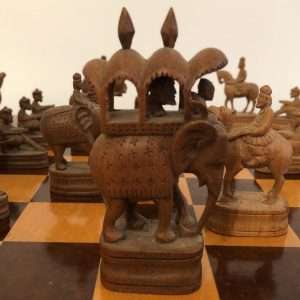
 Anima or Animus?
Anima or Animus?
Ladder mate, also known as a lawnmower mate, is a checkmate pattern given with two major pieces. They can be two Queens, two Rooks, or one rook and one queen. These pieces are used to force the enemy King to one side of the board cutting off two files resulting in checkmate.
This mate pattern is one of the most common you’ll see in games. It is one of the most simple mates to give because you’re only using two pieces that cover a lot of squares. It’s also described as a clean way of ending the game because your pieces cover every square in the file they are in so the King has many squares to move to but are all covered by the Rooks or Queens.
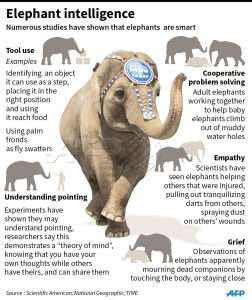
Which one likes dappled sunlight?

A magnificent tile layout with the Tree of life at it's center, which is surrounded by a beautiful floral pattern, and a surrounding cobalt blue border....found in the lobby of the Ambassador hotel in Jerusalem.
And/or: "Jasper: The usual English form of the name assigned in Christian folklore to one of the three magi or 'wise men', who brought gifts to the infant Christ at his birth (Matthew 2:1). The name [Jasper] does not appear in the Bible, and is first found in medieval tradition. It seems to be ultimately of Persian origin, from a word meaning 'treasurer'. There is probably no connection with the English vocabulary word jasper denoting a gemstone, which is of Semitic origin."
The name means "spotted or speckled stone," and is derived via Old French jaspre (variant of Anglo-Norman jaspe) and Latin iaspidem (nom. iaspis) from Greek ἴασπις iaspis (feminine noun),[6] from an Afroasiatic language (cf. Hebrew ישפה yashpeh, Akkadian yashupu).[7] This Semitic etymology is believed to be unrelated to that of the English given name Jasper, which is of Persian origin,[8][a] though the Persian word for the mineral jasper is also yashp (یَشم).
'White quartz pebble'?

Who's supporting / leaning on who?
Green jasper was used to make bow drills in Mehrgarh between 4th and 5th millennium BC.[9] Jasper is known to have been a favorite gem in the ancient world; its name can be traced back in Arabic, Persian, Hebrew, Assyrian, Greek and Latin.[10] On Minoan Crete, jasper was carved to produce seals circa 1800 BC, as evidenced by archaeological recoveries at the palace of Knossos.[11]

Female figure that supports the couch.
Although the term jasper is now restricted to opaque quartz, the ancient iaspis was a stone of considerable translucency including nephrite.[2] The jasper of antiquity was in many cases distinctly green, for it is often compared to emerald and other green objects {'Emerald Tablet'?}. Jasper is referred to in the Nibelungenlied as being clear and green. The jasper of the ancients probably included stones which would now be classed as chalcedony, and the emerald-like jasper may have been akin to the modern chrysoprase. The Hebrew word may have designated a green jasper.[12] Flinders Petrie suggested that the odem – the first stone on the High Priest's breastplate – was a red jasper, whilst tarshish, the tenth stone, may have been a yellow jasper.[13]
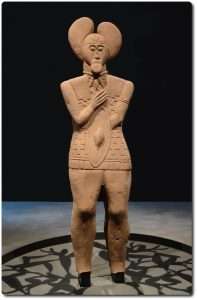
Happy or Sad?
A working example: ''But Thou knowest that i am; in ascending this pillar, i lean on thee alone. And that to thee alone i look for the happy issue of mine undertaking. Accept then, my object. Strengthen me, that i may finish this painful course. Give me the grace to end it in holiness.''
Obelisks?
''This is where holiness comes from. Leaning on him alone {in, or by way of - silence}. [Kathleen Nichols: Magdala: Day 33 {thirtythree}: Desert Father: Simon Stylites: Seeking Silence: Pilgrimage of Freedom: Lent 2023].
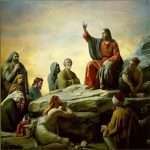
Seated on what?
Side note: ''This question was posed by Jesus to his apostles in the region of Caesarea Philippi, on or near the feast of Yom Kippur, when the name of the Lord was pronounced by the High Priest in the Temple. He asked his disciples, “who do people say the Son of Man is?” (Matt. 16:13) The identity of the Lord was originally revealed to Moses in the Burning Bush on Mt Sinai when he inquired about God’s identity. “…Tell them I AM has sent me to you.” (Exodus 3:14)
Jesus’ question makes a direct reference to his identity: do the people recognize him as the Messiah? After giving him a number of answers, Jesus made the question personal asking, “who do you say that I am?” Peter proclaims Jesus as the Christ, the Son of the living God, receiving a blessing in return. (Matt 16:15-17)
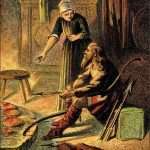
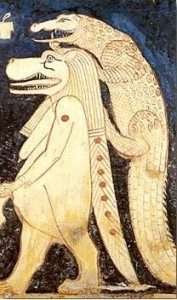 From a different perspective {that mindset one}: Osiris! Long have | searched for the severed and scattered pieces of who | AM. | have erected temples of sand that melted in high tides. | have built shrines of stone engulfed by twining vines and adorned with the nests of birds. | brought offerings and sacrifices to altars of gods long forgotten. | wrestled with crocodiles and carried the sword in battle. | gave birth to rosy-cheeked children and baked bread in earth ovens. Let it be enough. Osiris. Bring me home, and | will bathe my feet in your ancient waters and fill the niches of your temple with honeysuckle and wine.
From a different perspective {that mindset one}: Osiris! Long have | searched for the severed and scattered pieces of who | AM. | have erected temples of sand that melted in high tides. | have built shrines of stone engulfed by twining vines and adorned with the nests of birds. | brought offerings and sacrifices to altars of gods long forgotten. | wrestled with crocodiles and carried the sword in battle. | gave birth to rosy-cheeked children and baked bread in earth ovens. Let it be enough. Osiris. Bring me home, and | will bathe my feet in your ancient waters and fill the niches of your temple with honeysuckle and wine.
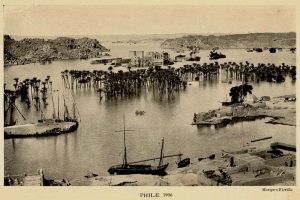 And/or: Ivy and holly were both associated with the Saturnalia, holly being Saturn's club, ivy being the nest of the Gold Crest Wren, his bird; on Yule morning, the last of his merry reign, the first foot over the threshold had to be that of Saturn's representative, a dark man, called the Holly Boy, and elaborate precautions were taken to keep women out of the way. Thus Ivy Girl and Holly Boy became opposed; which gave rise to the Yule custom in which 'holly boys' and 'ivy girls' contended in a game of forfeits for precedence, and sang songs, mainly satirical, against each other.)
And/or: Ivy and holly were both associated with the Saturnalia, holly being Saturn's club, ivy being the nest of the Gold Crest Wren, his bird; on Yule morning, the last of his merry reign, the first foot over the threshold had to be that of Saturn's representative, a dark man, called the Holly Boy, and elaborate precautions were taken to keep women out of the way. Thus Ivy Girl and Holly Boy became opposed; which gave rise to the Yule custom in which 'holly boys' and 'ivy girls' contended in a game of forfeits for precedence, and sang songs, mainly satirical, against each other.)

The ivy motif is in general far more frequent than the vine motif in Greek art and in the Etruscan art that derives from it. Why should this be? The problem is still more radical in Minoan art where, amid the manv plant designs occurring in murals and vase paintings, not a single example of the vine has been found to this day. But ivy is frequent, both in representations of nature and in stvlized form as an ornament. Sir Arthur Evans was impressed by this fact, in which he found a testimony to the Minoan religion. Concerning the so-called House of Frescoes at Knossos he writes: "Among the designs depicted on the frescoes a special place must be reserved for what mav be not inaptly termed the 'sacral ivy.' . .
And/or: "What happens to the ivy is no less remarkable. Its cycle of growth gives evidence of a duality which is quite capable of suggesting the two-fold nature of Dionysos. First it puts out the so-called shade-seeking shoots, the scandent tendrils with the well-known lobed leaves. Later, however, a second kind of shoot appears which grows upright and turns toward the light. The leaves are formed completely differently, and now the plant produces flowers and berries. Like Dionysos, it could well be called the 'twice-born.' But the way in which it produces its flowers and fruit is both strikingly similar to and yet startlingly different from that found in the vine.
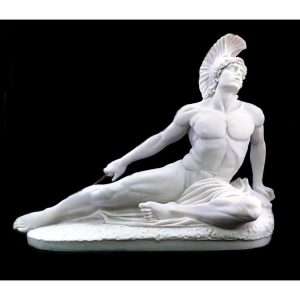
The oldest account of a wine harvest in European literature carries a note of grief. In Homer, Hephaistos adorned the shield of Achilles with a picture of a wine harvest. The vineyard is surrounded by a trench and a fence. A single path leads through them to the vines, which stand in rows supported by stakes. At the time of the wine harvest the carriers, all young girls and boys, are striding down the path, carrying baskets full of sweet grapes. A boy walks among them with a lyre, singing the linos, the song of lamentation. They accompany him in dance steps, with songs and cries. This is no expression of sentimentalism, but a rite based on a myth. As in Minoan Crete and present-day Greece, the next step was assuredly performed indoors. Here the lenos— later called pateterion—was set up for treading the grapes. In his description of the happy life of the Phaiakians in the Odyssey, Homer mentions the act of pressing, in which probably, as in Egypt, the mash of treaded grapeskins was put into sacks and wrung out with a device called a tropeion in Greek. Here again, Homer makes no mention of treading. In Works and Days, Hesiod also passes over the treading of the grapes. He indicates the time of the wine harvest, describes in detail the making of sweet wine from dried grapes, but stops before the pressing, whether performed by treading or with the help of the tropeion.
It blooms, namely, in the autumn, when the grapes of the vine are harvested. And it produces its fruit in spring. Between its blooming and its fruiting lies the time of Dionysos' epiphany in the winter months. Thus, after its shoots have opened out and up, it shows its reverence, as it were, to the god of theestatic winter festivals as a plant transformed with a new spring growth.
"While the vine of Dionysos needs as much light and heat from the sun as it can get, the ivy of Dionysos has surprisingly little need for light and warmth, and grows green and fresh in the shade and in the cold, too. In the middle of winter when the riotous festivals are celebrated, it spreads its jagged leaves out boldly over the forest floor or climbs up the tree trunks precisely as if it wished to welcome the god and dance around him as the maenads do. It has been compared to the snake, and the cold nature ascribed both to it and to the snake has been advanced as a reason for their belonging to Dionysos. The way in which it creeps over the ground or winds itself around trees can really suggest the snakes which the wild women accompanying Dionysos wind around their hair or hold in their hands.
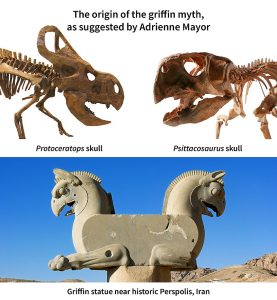
Later, Pliny the Elder became the first to state explicitly that griffins have wings and long ears. In one of the two passages, Pliny also located the "griffons" in Æthiopia. According to Adrienne Mayor, Pliny also wrote, "griffins {gryphon} were said to lay eggs in burrows on the ground and these nests contained gold nuggets". Apollonius of Tyana,[t] who was nearly coeval with Pliny, gave a different account of the griffin, claiming them to be lion-sized and having no true wings, instead having paws "webbed with red membranes" that gave them the ability to make leaps of flight over short distances.The Gryphes are so called because they are winged quadrupeds. This kind of wild beast is found in the Hyperborean Mountains. In every part of their body they are lions, and in wings and heads are like eagles, and they are fierce enemies of horses. Writers after Aelian (3rd century AD) did not add much new material to griffin lore, except for the later idea that griffins deposited agate stone among the eggs in their nest.[citation needed]
Pliny placed the griffins in Æthiopia and Ctesias (5th century BC) in greater India. Scholars have observed that legends about the gold-digging ants of India may have contaminated griffin lore.[citation needed]
In the Christian era, Isidore of Seville (7th century AD) wrote that griffins were a great enemy of horses. This notion may have developed from the tradition that horseback-riding Arimaspians raided the griffin gold....The derivation of this word remains uncertain. It could be related to the Greek word γρυπός (grypos), meaning 'curved', or 'hooked'. Greek γρύφ (gryph) from γρύφ 'hook-nosed' is suggested.[5]
And/or: The festival name "Lenaia" is derived from lenos, "pressing vat," and lenaion, "the place where the wine was pressed and preserved until fermentation was complete." The nature of such a place is indicated by an early nineteenth-century report from Cyprus, where the word for wine cellar is still linos. "The grapes, which have previously been shoveled into a pile, are brought to the linos, where they are crushed and then placed under the press. The juice is poured into large earthenware jars which are half buried in the ground. Here the wine ferments and is not moved until it is poured into skins and taken to the markets."
The new, static view of the world was represented on sarcophagi of a particular t*.pe in the form of a lenos, the pressing vat where the new wine was kept. The lion's heads in the marble reproductions seem to have taken the place of the taps. This view of the world shows the earthly and heavenly nature of the wine god. In both the examples shown the composition is divided into two parts. In the lower part an emasculated old man lies beside an open vat in which the grapes are being trodden by satyrs. As a pendant-on the sarcophagus in Salerno — he has a drunkenly dancing maenad, or-on the one in the Museo Chiaramonti in Rome — a sleeping Dionysian woman. When a sarcophagus was adorned only with thiasoi of dancing maenads and satyrs, these groups of figures represented the happiness that arises when zoe is enhanced by wine. Such representations expressed the possibility of a supraterrestrial existence, free from crude conceptions of the afterlife. But though such a possibility finds expression on many sarcophagi, it is not taken into account in these two examples. In the upper part of these reliefs, we have an example of a higher beatitude, far above the earthly enjoyment of wine: Dionysos and Ariadne are joined in a "higher marriage." It is a heavenly marriage, to be sure, but not without sensuality-here again a mystery aim growing out of the Cretan myth. {'Dionysos: Archetypal Image of Indestructible Life' / C. Kerenyi}.
 REFRESHER: "There is a mosque whose foundation was laid from the first day on piety; it is more worthy of thy standing forth therein." [i.e., in relation to ''The original mosque of piety built by the Muhammad himself]..."Which then is best? - he that layeth his foundation on piety to God and his good pleasure? - or he that layeth his foundation on an undermined sand cliff ready to crumble to pieces?" [Quran 9:108/109].
REFRESHER: "There is a mosque whose foundation was laid from the first day on piety; it is more worthy of thy standing forth therein." [i.e., in relation to ''The original mosque of piety built by the Muhammad himself]..."Which then is best? - he that layeth his foundation on piety to God and his good pleasure? - or he that layeth his foundation on an undermined sand cliff ready to crumble to pieces?" [Quran 9:108/109].
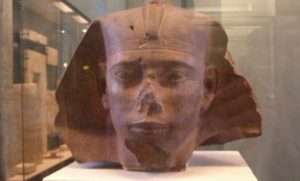
He is the king who introduced the royal title Sa-Rê (meaning “Son of Ra”) and the first to connect his cartouche name with the sun god Ra.
And/or: The story of Isis and the story of Osiris represent but two ways of contacting the Divine. Osiris is the story of everyman: Life unfolds but in the midst of it death strikes, bringing a return to Source. The story of Isis is different. It is one of radical knowing, a departure from personal grief into an embodiment of the great divine narrative. With her words of power—a magic she has gained from the depth of her experiences—Isis chooses to transform while she is on Earth. She has penetrated the heart of Re the solar god, the supraconsciousness, and made contact with the shining spark of her own intelligence. As with Isis, in our own lives are the secrets of our true gifts, the mysteries of our transformation, the life that is hidden from us until we pull back and settle down to look into that still pool during meditation {and/or study}....

Lady of the lake?
Too often we do not take the time to relinquish our day-to-day social and business biographies. If we are not still enough during the day, the reflection comes to the surface during dreams of the night, psychic breaks, or other events that call us abruptly back to ourselves. There, in these meditative trances or dream states, upon the unruffled water, our true face looks back. ['Invoking the Scribes of Ancient Egypt'].
Refresher: 'Feminine' aspect {'soul'} in relation to: "Gudea made offerings of honey and butter when the foundations were laid; when the building was finished an auspicious day was waited for, and when it came the image of the god was removed to the new temple, and Gudea sprinkled the ground with oil, and set out offerings of honey, butter, wine and dates, grain mixed with milk, food untouched by 'fire', for the gods." [ Chapter 3, 'The Sacred Bee'].
What are the common factors?

I AM: {C}alliope - Chief muse. A link to the number 'nine'. WHY?
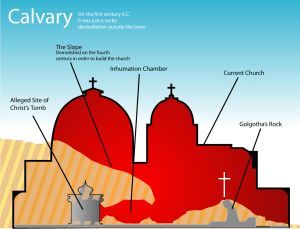 The 9th annual Women’s Encounter at Magdala places this question in the mouth of women. In answer, the world offers an abundance of explanations about feminine identity. Many prefer not to specify, others guess, some speak from a variety of ideologies or personal experiences, and there is a growing number who declare the question unanswerable. A number of individuals make this inquiry about the femininity of philosophy and religion. What does reason say I am? Who does God say I am? Time and space are needed both to ask this question and to formulate a satisfying answer.
The 9th annual Women’s Encounter at Magdala places this question in the mouth of women. In answer, the world offers an abundance of explanations about feminine identity. Many prefer not to specify, others guess, some speak from a variety of ideologies or personal experiences, and there is a growing number who declare the question unanswerable. A number of individuals make this inquiry about the femininity of philosophy and religion. What does reason say I am? Who does God say I am? Time and space are needed both to ask this question and to formulate a satisfying answer.
Providing this time and space – for reflection, conversation and celebration of feminine identity – is what the 9th Annual Women’s Encounter at Magdala seeks to provide.'' ['Magdala' / Israel].
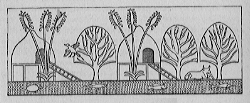
Shelter? What's the ladder made from?
Continued: ''The Philosophical Tree: The outward form can change over time, but the richness and vitality of a symbol are expressed more in its change of meaning. Taken on average, the commonest associations to its meaning are growth, life unfolding of form in a physical and spiritual SENSE, development, growth from below upwards and from above downwards, the maternal aspect i.e., protection {Sycamore bark?}, shade {'Sun-shade'?}, shelter, nourishing fruits, source of life, solidity, permanence, firm-rootedness, but also being ''rooted to the spot'', old age, personality, and finally death and rebirth.'' [Page 272 'Alchemical Studies' / C. G. Jung].
What's the common factor between Tree, Bush and Ladder?
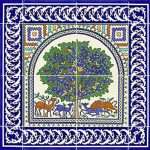
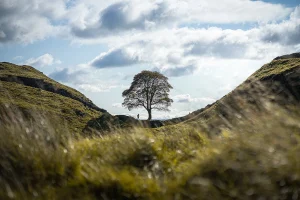
The Sycamore Gap Tree or “Robin Hood Tree” is a sycamore tree (Acer pseudoplatanus) standing next to Hadrian's Wall in Northumberland, England. The lake of Crag Lough and the village of Once Brewed are nearby, as is the Twice Brewed Pub, useful for trekkers at days end.
A working example: "I think i was stuck in the 80's but i refused to stay stuck. Those are the hard difficult times when ones stuck. And its about finding some kind of vision; some kind of clarity about where you want to go next and what you want to do and NOT do. I like to reinvent myself. Its fun!
My whole life has changed since i started to meditate. The journey in meditation is to find that state of equipoise - which means no matter what hits you, no matter what comes at you, no matter what throws you over either in joy or misery - you stay centered/rooted." ['Lulu' / BBC4].
Libra.
Weighing of the Heart.
Mountain low, valley high.
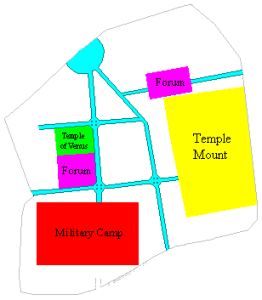
"Jerusalem after being rebuilt by Hadrian. Two main east–west roads were built rather than the typical one, due to the awkward location of the Temple Mount, blocking the central east–west route." South-North?
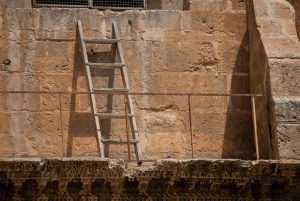
'Five'?
And/or: "One of my favourite chapels is the Chapel of the Holy Monastery of Abraham. In that monastery they have something extraordinary, and that is of course the remembrance of the ram, that got his horn stuck in the bush. And that is the ram {Aries?} that Abraham offered up instead of Isaac. And, so they say, the bush is right there and they built the chapel around it. They are now renewing that chapel, which brings us back to the meaning of 'sacrifice' - not only of Isaac that god stopped and said: 'You have a heart like mine, but the sacrifice of his son Jesus, who won for us salvation through his death and resurrection. Also here below, we have a birds eye view - a unique view - of the entrance; a modern entrance into the Holy Sepulchre here on the SIDE of the church {new 'flooring' being put down}. And you can see the infamous LADDER that everyone points out.....You can also see the entrance to the 10th Station - the Chapel of the Franks. With its Double Entrance. ['Day eleven: Pilgrimage of Prayer' / Lent 2024 / Magdala].
Isaac's Point? Oak Island.
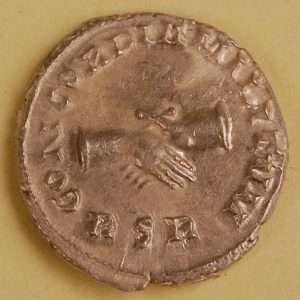
Side note: ''The word tumulus is Latin for 'mound' or 'small hill', which is derived from the Proto-Indo-European root *teuh2- with extended zero grade *tum-, 'to bulge, swell' also found in tomb, tumor, tumescent, thumb, thigh, and thousand.''
Refresher: Sacrifice something of the lower for the higher.
In Greek, these words refer to a crab, most likely applied to the disease because the finger-like spreading projections from a cancer called to mind the shape of a crab {i,e., tumor}. The Roman physician, Celsus (25 BC - 50 AD), later translated the Greek term into cancer, the Latin word for crab.
Herod?
A work in progress: "Çatalhöyük {the oldest 'city' in the world} was composed entirely of domestic buildings with no obvious public buildings. While some of the larger rooms have rather ornate murals, the purpose of others remains unclear.[8]
Initial estimates suggested an average population of between 5,000 and 7,000. However, more recent work using revised information on residential building distribution, and archaeological and ethnographic data estimate between 600 and 800 people in an average year lived at Çatalhöyük between 6700 and 6500 BC.[19]
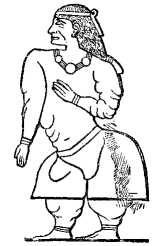
Land of punt.
 The sites were set up as large numbers of buildings clustered together {bee hive?}. Households looked to their neighbors for help, trade, and possible marriage for their children.[20] The inhabitants lived in mudbrick houses that were crammed together in an aggregate structure. No footpaths or streets were used between the dwellings, which were clustered in a honeycomb-like maze. Most were accessed by holes in the ceiling and doors on the side of the houses, with doors reached by ladders and stairs. The rooftops were effectively streets. The ceiling openings also served as the only source of ventilation, allowing smoke from the houses' open hearths and ovens to escape. Houses had plaster interiors accessed by squared-off timber ladders or steep stairs. These were usually on the south wall of the room, as were cooking hearths and ovens. The main rooms contained raised platforms that may have been used for a range of domestic activities. Typical houses contained two rooms for everyday activity, such as cooking and crafting.[20] All interior walls and platforms were plastered to a smooth finish.[8] Ancillary rooms were used as storage, and were accessed through low openings from main rooms.
The sites were set up as large numbers of buildings clustered together {bee hive?}. Households looked to their neighbors for help, trade, and possible marriage for their children.[20] The inhabitants lived in mudbrick houses that were crammed together in an aggregate structure. No footpaths or streets were used between the dwellings, which were clustered in a honeycomb-like maze. Most were accessed by holes in the ceiling and doors on the side of the houses, with doors reached by ladders and stairs. The rooftops were effectively streets. The ceiling openings also served as the only source of ventilation, allowing smoke from the houses' open hearths and ovens to escape. Houses had plaster interiors accessed by squared-off timber ladders or steep stairs. These were usually on the south wall of the room, as were cooking hearths and ovens. The main rooms contained raised platforms that may have been used for a range of domestic activities. Typical houses contained two rooms for everyday activity, such as cooking and crafting.[20] All interior walls and platforms were plastered to a smooth finish.[8] Ancillary rooms were used as storage, and were accessed through low openings from main rooms.

Dung Gate.
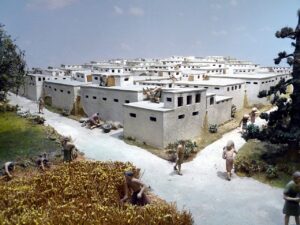
No doors. Looking in or out?
All rooms were kept scrupulously clean. Archaeologists identified very little rubbish in the buildings, finding middens outside the ruins, with sewage and food waste, as well as significant amounts of ash from burning wood, reeds, and animal dung.[21] In good weather, many daily activities may also have taken place on the rooftops, which may have formed a plaza. In later periods, large communal ovens appear to have been built on these rooftops. Over time, houses were renewed by partial demolition and rebuilding on a foundation of rubble, which was how the mound was gradually built up.
As many as eighteen levels of settlement have been uncovered.
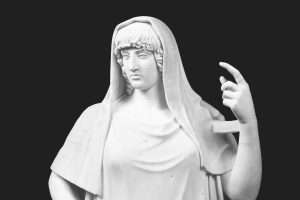
Hestia: Guardian of the hearth. N/W?
'Upper room'?
As a part of ritual life, the people of Çatalhöyük buried their dead within the village.[20] Human remains have been found in pits beneath the floors and especially beneath hearths, the platforms within the main rooms, and under beds. Bodies were tightly flexed before burial and were often placed in baskets or wound and wrapped in reed mats. Disarticulated bones in some graves suggest that bodies may have been exposed in the open air for a time before the bones were gathered and buried. In some cases, graves were disturbed, and the individual's head removed from the skeleton. These heads may have been used in rituals, as some were found in other areas of the community. In a woman's grave, spinning whorls were recovered and in a man's grave, stone axes.

Found at the bottom of a basket of grain. 'Fat of the land'. Avebury to enlarge.
 Some skulls were plastered and painted with ochre to recreate faces, a custom more characteristic of Neolithic sites in Syria and Neolithic Jericho than at sites closer by. Vivid murals and figurines are found throughout the settlement on interior and exterior walls. Distinctive clay figurines of women, notably the Seated Woman of Çatalhöyük, have been found in the upper levels of the site.[23] Although no identifiable temples have been found, the graves, murals, and figurines suggest that the people of Çatalhöyük had a religion rich in symbols.
Some skulls were plastered and painted with ochre to recreate faces, a custom more characteristic of Neolithic sites in Syria and Neolithic Jericho than at sites closer by. Vivid murals and figurines are found throughout the settlement on interior and exterior walls. Distinctive clay figurines of women, notably the Seated Woman of Çatalhöyük, have been found in the upper levels of the site.[23] Although no identifiable temples have been found, the graves, murals, and figurines suggest that the people of Çatalhöyük had a religion rich in symbols.

Coming or going?
Rooms with concentrations of these items may have been shrines or public meeting areas. Predominant images include men with erect phalluses, hunting scenes, red images of the now extinct aurochs (wild cattle) and stags, and vultures swooping down on headless figures.[8] Relief figures are carved on walls, such as of lionesses facing one another.
Heads of animals, especially of cattle, were mounted on walls. A painting of the village, with the twin mountain peaks of Hasan Dağ in the background,[24] is frequently cited as the world's oldest map,[25] and the first landscape painting.[8] However, some archaeologists question this interpretation. Stephanie Meece, for example, argues that it is more likely a painting of a leopard skin instead of a volcano, and a decorative geometric design instead of a map.[26]
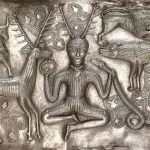
A different perspective.
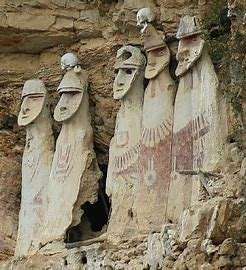
Cloud People. S/E?
And/or: ''We have put together a picture of the international metropolis in the Song and Yuan Dynasties. Many inscriptions from different religions appeared at this time....One such inscription was within a stone relief in a city wall. The figure seems to be a Christian angel {cross-legged} with its wings and a cross on its chest. Clouds above... On closer examination it throws up some mysteries. The cross rises from a lotus flower...A French scholar published his discovery of this stone carving....He called it the Zai Tun Cross. It caused quite a stir.'' ['Return to Zai Tun' i.e., S/E China. Nat Geo / 3.12.21].
Question. Any 'flowers' on the Narmer Palette?
'Lords of the Left Hand Path' / S. E. Flowers.

Female aspect {Mary Magdalene} touching the hem of 'Jesus'. A linen one.
"Noon indicates the beginning of the battle against the powers of Seth. Noon, the sun's culminating moment of the day, marks the transition between rising and decline; it is the critical hour during which all of nature becomes silent. In Chinese acupuncture, noon is the passing from solar {Yang} to lunar {Yin}. ['Sacred Science'].
Try ''noon'' and/or ''silence'' all as a means...? Since the dawn of human thought?
'The Quest of Seth' / E. C. Quinn.
A working example: ''Though centuries of floods reduced the temple to no more than looted ruins, these statues have withstood any disaster nature throws their way. In 27 B.C., an earthquake shattered the northern colossus, collapsing its top and cracking its lower half. But strangely, the damaged statue did more than merely survive the catastrophe: After the earthquake, it also found its voice.
'Bells' {Gareth Knight} to enlarge.
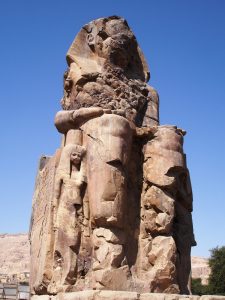
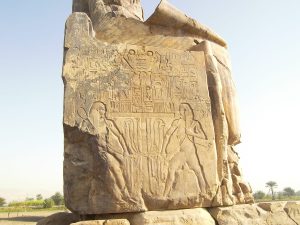
Hapi the river god on its side panel. A balance of something {''within the heart''}? Famine Stela to enlarge.
At dawn, when the first ray of desert sun spilled over the baked horizon, the shattered statue would sing. Its tune was more powerful than pleasant; a fleeting, otherworldly song that evoked mysterious thoughts of the divine. By 20 BC, esteemed tourists from around the Greco-Roman world were trekking across the desert to witness the sunrise acoustic spectacle. Scholars including the likes of Pausanias, Publius, and Strabo recounted tales of the statue’s strange sound ringing through the morning air. Some say it resembled striking brass, while others compared it to the snap of a breaking lyre string.
The unearthly song is how these ancient Egyptian statues wound up with a name borrowed from ancient Greece. According to Greek mythology, Memnon, a mortal son of Eos, the goddess of Dawn, was slain by Achilles. Supposedly, the eerie wail echoing from the cracked colossus’ chasm was him crying to his mother each morning. (Modern scientists believe early morning heat caused dew trapped within the statue’s crack to evaporate, creating a series of vibrations that echoed through the thin desert air).''
'Misty' to enlarge.
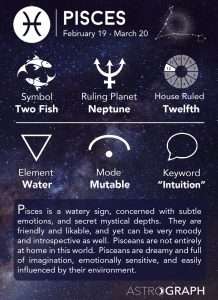
Stylized 'H'?

A work in progress: "I first became interested in the idea of self analysis when i was fifteen....The turning point came a year later when i saw for the second time, a trilogy of tele programmes on Jung. For some reason i had been unaffected by the first showing but the second time around i felt as if struck by lightening and began to study Jungs works....Some months later i spent a long a sleepless night. I only got about an hours sleep because i was 'waiting' for something to happen.

Completed? No 'gaps'?
I had no idea what it was but eventually it emerged as two brief dreams. The first was two fish rushing around in a circle, trying to bite each others' tails and neither succeeding. I took this to relate to my attempts at analysing myself - that i was going round and round in circles not getting anywhere. The second dream, though, had enormous feeling to it. It consisted of a brief glimpse of a benign yet frightening Merlin figure dressed entirely in black {'shadow' aspect}. To his left was a large Chinese gong and in his right hand was a large stick with a large globe at the end with which he beat the gong. The figure then stood stock still and said: 'Turn away from me for i am the Echo Maker.'......
Side note: "....the sacred kings of Bronze Age Ireland, who were solar kings of a most primitive type , to judge by the taboos which bound them....were buried beneath these barrows; but their 'spirits' went to Caer Sidi, the castle of Ariadne, namely Corona Borealis. Thus the pagan Irish could call Newgrange 'Spiral Castle'.....A revolving wheel before the door of a castle is common in Goidelic legend. According to Keating , the magic fortress of the enchantress Blanaid {'primrose' link?} - in the Isle of Man, was protected by one - Nobody could enter UNTILL IT WAS STILL." [Page 103 'The White Goddess' / R. Graves].
2:1 to enlarge.

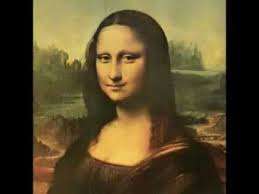
''Curtained'' = Veiled or UNveiled?
Continued: "At that time i had only ever written about ten poems but i was so affected by this dream that i wrote the following poem about it entitled, 'I meet the Echo Maker'.....
'Frightened he turned away. The withered plant, his soul. The beautiful flower - his imagination. Here, curtained from the darkness of the night sky - the echo maker struck another note. Stick in hand he screamed. The piercing laugh echoed the desperate dance between man and silence. A dance to the death. 'Turn away from me', he screamed - for i am the Echo Maker'.....
"Although i continued to read Jung and to apply his ideas, the grip he had upon me began to diminish and this dream had a lot to do with it. It was a clear message that i had to find my own voice and stop being an echo of someone else." [Pages 5-6 'Apollo Versus the Echo Maker' / A. Lunt].
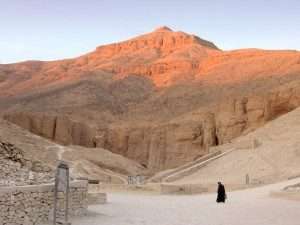
'She who loves silence'.
'Synchronistic' or AN ECHO THROUGH THE AGES?
In the mythical SENSE of the word: Galadriel in relation to Frodo Baggins.
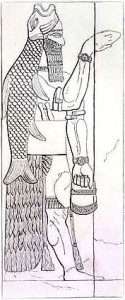
BAG END?
''Hapi (Ancient Egyptian: ḥꜥpj) was the god of the annual flooding of the Nile in ancient Egyptian religion. The flood deposited rich silt (fertile soil) on the river's banks, allowing the Egyptians to grow crops.[1] Hapi was greatly celebrated among the Egyptians. Some of the titles of Hapi were "Lord of the Fish and Birds of the Marshes" and "Lord of the River Bringing Vegetation". Hapi is typically depicted as an androgynous figure with a prominent belly and large drooping breasts, wearing a loincloth and ceremonial false beard,[2] depicted in hieroglyphics as an intersex person.''
''Taweret and other closely related goddesses were created from a blending of lion, hippo, crocodile, and human attributes. The three animals were some of the fiercest species found in ancient Egypt and combining their strengths produced a most potent deity and therefore amulet.''
In Ancient Egyptian religion, Taweret is the protective ancient Egyptian goddess of water... "Mistress of Pure Water", and "Lady of the Birth House".
Question. Birth of what?
'Quintessence' to enlarge.

'Big bird'? Ostrich?
 Side note: ''Emptyness is a virginal quality which for want of a better word i call 'emptyness'. It is emptyness like the hollow in a reed, open to recieve the breath of the musician ready too utter the song in his heart. An emptyness like that of a hollow in a cup shaped to recieve water or wine. An emptyness like that of a birds nest built in a round warm ring ready to recieve the little bird:'' This is the kind of emtyness she calls 'virginity' - an openness to recieve.'' [Kathleen Nichols / 1st Sunday of Advent {'Emptyness and Openness'} / Star of Wonder / Magdala / Dec 2021: - taken from the book 'The Reed of God' by Caryll Houslander].
Side note: ''Emptyness is a virginal quality which for want of a better word i call 'emptyness'. It is emptyness like the hollow in a reed, open to recieve the breath of the musician ready too utter the song in his heart. An emptyness like that of a hollow in a cup shaped to recieve water or wine. An emptyness like that of a birds nest built in a round warm ring ready to recieve the little bird:'' This is the kind of emtyness she calls 'virginity' - an openness to recieve.'' [Kathleen Nichols / 1st Sunday of Advent {'Emptyness and Openness'} / Star of Wonder / Magdala / Dec 2021: - taken from the book 'The Reed of God' by Caryll Houslander].
Open aired? i.e., Amarna.

'Reed' huts?
Westward leading still proceeding guide us to......?
''So what shape is that virginal emptyness of our own being; and of what material are we made. Are we reed pipes, are we chalice's or are we nests. Is he waiting to work lyrically through us, does he ask us to be 'sacrificed' in us, or does he desire of us a warm sweet abiding in a domestic life at home.'' [Same].
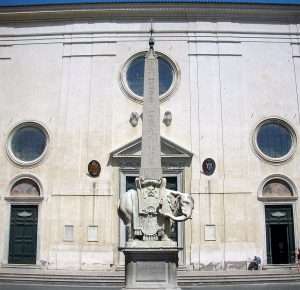 "Lake Moeris (Ancient Greek: Μοῖρις, genitive Μοίριδος) is an ancient artificially-fed endorheic lake in the northwest of the Faiyum Oasis, 80 km (50 mi) southwest of Cairo, Egypt. In prehistory, it was a freshwater lake, with an area estimated to vary between 1,270 km2 (490 sq mi) and 1,700 km2 (660 sq mi). It persists today as a much smaller saltwater lake called Birket Qarun.[2] The lake's surface is 43 m (141 ft) below sea-level, and covers about 202 square kilometres (78 sq mi). The lake and surrounding area is a protected area and has been designated as a Ramsar site since 2012. It is a source for tilapia and other fish from the local area. The prehistoric mammal Moeritherium was found in this area....
"Lake Moeris (Ancient Greek: Μοῖρις, genitive Μοίριδος) is an ancient artificially-fed endorheic lake in the northwest of the Faiyum Oasis, 80 km (50 mi) southwest of Cairo, Egypt. In prehistory, it was a freshwater lake, with an area estimated to vary between 1,270 km2 (490 sq mi) and 1,700 km2 (660 sq mi). It persists today as a much smaller saltwater lake called Birket Qarun.[2] The lake's surface is 43 m (141 ft) below sea-level, and covers about 202 square kilometres (78 sq mi). The lake and surrounding area is a protected area and has been designated as a Ramsar site since 2012. It is a source for tilapia and other fish from the local area. The prehistoric mammal Moeritherium was found in this area....

Antique Indian elephant chess piece representing the king. Any Bishops?
When the Mediterranean Sea was a hot dry hollow near the end of the Messinian Salinity Crisis in the late Miocene, Faiyum was a dry hollow, and the Nile flowed past it at the bottom of a canyon (2,400 m deep or more where Cairo is now).
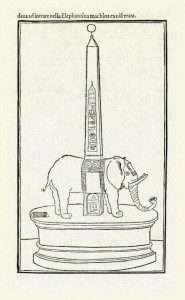
'Prince' link?
After the Mediterranean reflooded at the end of the Miocene, the Nile canyon became an arm of the sea reaching inland farther than Aswan. Over geological time that sea arm gradually filled with silt and became the Nile valley. Eventually, the Nile valley bed silted up high enough for the flooding Nile to overflow into the Faiyum hollow, making a lake in it; however, for the most part it could only be fed intermittently, by high flood waters. The lake was bordered by neolithic settlements, and the town of Shedet grew up on the south where the higher ground created a ridge. The lake is first recorded from about 3000 bce, around the time of Narmer (Menes)."
In 2300 bce, the waterway from the Nile to the natural lake was widened and deepened to make a canal, now known as the Bahr Yussef, to better feed the lake. The project was started by Amenemhat III, or perhaps by his father Senusret III.

Female figure lightly touching {supporting?} big male one {'leaning'?}. And/or: 'Little toe of big one = N/W angle of the pylon'. [Page 24].

Nipple? Put the ''images'' together. 'See' anything?
From a different perspective: ''The head stands for the 'Covered Temple' {veil?} the sanctuary of the human body where all the control centers are gathered. It has the same symbolic meaning in the temple....Egyptian figurations carefully mark - with a headband, crown, diadem, or joint - a dividing line for the top of the skull thus separating the crown of the skull.'' [Chapter entitled 'Significance of the Crown of the Skull' : from the book 'The Temple In Man'].
Recall ''all things gathered'' in the tomb of Tut.
Any pine cones?
Define {'see'} the above to get an idea {''hang on''?} - the following: The Cerrigydrudion Crown. A Celtic piece of ancient artwork. Bronze {'red'?} and leather {'cow'?] headpiece. ''Possibly signifies 'warrior' headgear - with palm leaf and lotus designs - neither of which are common to these islands {UK}.'' ['Inside Museums: St. Fagan/Cardiff. Sat.TV].
A working example: Recall 'King' Odysseus journey back to his homeland.
And/or: ''Beloved goddess Isis, come as the scent of the Lotus. Charge {change?} this sacred fire and our hearts with your mystery and magic.''
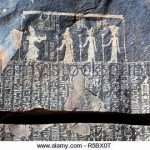
Any moister in there? '80'?
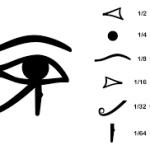
Blind?
Side note: Jericho {'The City of Palm Trees'}: before the crossover = 'fire' {i.e., ''wilderness years'' i.e., in a 'desert'}. AFTER the crossover = Jericho; root of which in Arabic = ''fragrant'' {soul? i.e., by way of the moon which is also related to same word - THEREFORE Water link}. [Day 20 'Healing of a blind Beggar' - ''outside the city gates of Jericho'' / K. Nichols / Magdala / Sep. 2021].
Question. Thirsty?
N.B. Baptism of Christ with John also took place just 'outside those gates'.

"Sawn palm stem: Palms do not form annual tree rings." Width stays the same?
 Side note: Tanis in the Nile Delta , the newly established capital city of Psusennes II, may have been called the 'City of Palms'. The temple complex is comprised solely of carved, pink granite date-palm columns....It is mentioned in the Bible that the Israelites were driven out of a City of Palms for a period of Eighteen years...In the Phoenician / Greek languages that date palm is known as the Phoenix..like the rising of a New City...Phoenicians a link to the colour purple....In the Concordance Phoenicia is refered to as the 'Land of Date Palms'....A possible reference to the two palm fronds that were placed over the entrance-way to all temples in Egypt - an image of the flying sun disk of Ra {authors hypothesis, as is his interpretation of it being linked to Zechariah 'flying scroll' - 20 in length, 10 wide}....A link to Palm Sunday {the day of the Sun} as Christ rides into Jerusalem on a donkey... [Pages 100-105 ['Scota: Egyptian Queen of the Scots'].
Side note: Tanis in the Nile Delta , the newly established capital city of Psusennes II, may have been called the 'City of Palms'. The temple complex is comprised solely of carved, pink granite date-palm columns....It is mentioned in the Bible that the Israelites were driven out of a City of Palms for a period of Eighteen years...In the Phoenician / Greek languages that date palm is known as the Phoenix..like the rising of a New City...Phoenicians a link to the colour purple....In the Concordance Phoenicia is refered to as the 'Land of Date Palms'....A possible reference to the two palm fronds that were placed over the entrance-way to all temples in Egypt - an image of the flying sun disk of Ra {authors hypothesis, as is his interpretation of it being linked to Zechariah 'flying scroll' - 20 in length, 10 wide}....A link to Palm Sunday {the day of the Sun} as Christ rides into Jerusalem on a donkey... [Pages 100-105 ['Scota: Egyptian Queen of the Scots'].
“Then I turned, and lifted up mine eyes, and looked, and behold a flying roll . . . the length thereof is twenty cubits, and the breadth thereof ten cubits.” (Zechariah 5:1-2)

Ukraine carpet. 'Knots' to enlarge.

'Tomb' or gateway?
And/or: "In ancient Israelite iconography, the scroll is normally protrayed as being rolled up and seen edge on; in other words we see a circle with two wings attached, or the symbol of Aton-Ra. However, the rectangular dimensions given in this verse convinced some ancient scholars that the scroll had been unwound and opened, thus representing a rectangular image. It was from this symbology that the Persian flying carpet was derived." [Page 102].
Continued: ''To be sure, twenty is not exactly interesting for mystical or magical pursuits, but on the other hand {left or right one?}, it is extremely important in the formation of number systems. For the simple reason that the fingers and toes add up to 20, this number forms the basis of counting sytems in many cultures. Among the Celts, for eample, 40 is called two times 20. The Ainu, in northern Japan have a very similar way of counting and express, for instance, 80 as 4 times 20, which corresponds exactly to the French quatre-vingts.'' ['Mystery of Numbers' / A. Schimmel].
Raised hands?
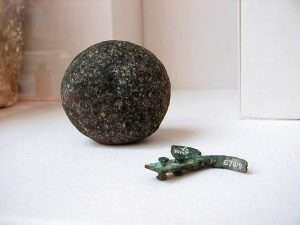
Dixon relics. Found in the shafts of the 'Queens'' chamber. Dated 500 years prior to the construction of same. Could there be an error of construction date? Wooden parts also found. ''Alchemy'' to enlarge.
End of cycle, beginning of another? Hence: ''Now the gates of Jericho were securely barred {'bolted'?} because of the Israelites. No one went out and no one came in.

Beginning or end of a cycle? Linear A or B?
Then the Lord said to Joshua, “See, I have delivered Jericho into your hands, along with its king and its fighting men. 3 March around the city once with all the armed men. Do this for six days. Have seven priests carry trumpets of rams’ horns in front of the ark. On the seventh day, march around the city seven times, {total therefore of '13'}, with the priests blowing the trumpets. When you hear them sound a long blast on the trumpets, have the whole army give a loud shout; then the wall of the city will collapse and the army will go up, everyone straight in.” [Joshua 6].
Question. 'Six' = ''gates'' link?
Working example: Colleen Darnell gives a description within the temple of Abu Simbel of a painting of Ramesses { ''a peculiar image''} offering two vases of water to his {higher} self. On a table, similar to the one that the jackel is normally seen resting on {lower}, can be seen food offerings - ''two baskets of fruit'' and the lotus flower. Below the table ''two loaves of bread''. Dividing the picture is the 'Uas' staff {and/or 'Was'}.The conclusion being: ''The temple was built there because Nubia was where the gold was.'' AND/OR: ''This is Ramesses the king, offering to himself as Ramesses the god. To be remembered and worshipped for eternity''. ['Lost Treasures of Egypt: Ramses Rise to Power' / 21.11. 21].
Up river /Down river as a means...?
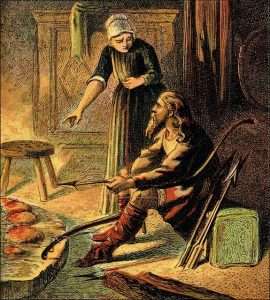
Leavened or UNleavened? "They examined the residues in the Lindow Man's gut, and concluded that, unlike the Danish bog victims, he had eaten a carefully burned portion of unleavened barley bread, not a coarse porridge or cereal....It did not look as if the burning had been caused by careless cooking {ESR analysis}, it seemed rather to be the result of a deliberate and rapid scorching or searing of a particular part of the cake, possibly after baking. It would appear that the 'cake' could only have been touched quickly with something very hot indeed, almost as if it had been branded." {'The Life and death of a Druid Prince' / A. Ross and D. Robins}. 'Echo' / 'Sealed' / 'Stamped' / 'Passover' to enlarge. Question. Whats the difference between barley and wheat?
 A working example: "The alchemical 'gold' symbolises a state of inner transformation which relates to an awareness of one's divine nature, what the alchemists called, among other names, the lapis, or philosophers stone, and Jung termed the Self....Another alchemical symbol for both the prima materia and the lapis is the fish and it occurs in the next dream in association with the process of purification.
A working example: "The alchemical 'gold' symbolises a state of inner transformation which relates to an awareness of one's divine nature, what the alchemists called, among other names, the lapis, or philosophers stone, and Jung termed the Self....Another alchemical symbol for both the prima materia and the lapis is the fish and it occurs in the next dream in association with the process of purification.
It was dreamt by a woman: She was cleaning out a fish tank with dirty water. There is a piece of mercury in the tank that she feels she cannot disturb. While cleaning she finds another fish, places them in a bath and joins them. The fish then have babies and the bath becomes full of 'thousands' of fish: CLEANING out the fish tank suggests the purification of the psyche, which is one of the most fundamental stages of the opus, primary involving work on the shadow....

Back to back? 'H'?
ONCE the individual begins to dig within themselves - to work with the contents of the subconscious - then the alchemical transformation really commences and the unconscious reveals its fertility and abundance: in the dream the self proliferation of the fish echoes the miracle of the loaves and fishes, and the fish can be seen as the 'miraculous food' of the eucharist 'drawn from the deep in order to nourish the needy ones of the earth'. The 'fish' is the nourishing effect of the unconscious, reminding the dreamer that all the necessary energy and understanding lies within herself, born from something humble and overlooked." [Pages 39-51 'The Lover and the Serpent' / Llewellyn Vaughan-Lee].
Recall the phallus of Osiris that was 'eaten' by a fish.
'Fire' to enlarge.
Side note: The various contradictory versions of the Danaid myth help us to understand the ritual from which it originated. Pindar in his Fourth Pythian Ode says that the brides were pardoned, purified by Hermes and Athene and offered as prizes to the victors of public games. Later authorities, such as Ovid and Horace, say that they were not pardoned but condemned everlastingly to pour water into a vessel full of holes. Herodotus says that they brought the mysteries of Demeter to Argos and taught them to the Pelasgian women. Others say that four of them were worshipped at Argos because they provided the city with water. The real story seems to be that the Danaids were an Argive college of fifty priestesses of the Barley goddess Danae, who was interested in giving rain to the crops and was worshipped under four different divine titles; pouring water through a vessel with holes so that it looked like rain was their usual rain-bringing charm. Every four years at the fiftieth lunar month a contest was held as to who should become the Hercules, or Zeus, of the next four years and the lover of these fifty priestesses. This term was afterwards prolonged to eight years, with the usual yearly sacrifice of a child. Danaan Argos was captured by the Sons of Aegyptus who invaded the Peloponnese from Syria, and many of the Danaans who resisted them were driven northward out of Greece; as has already been mentioned. ['The White Goddess'].
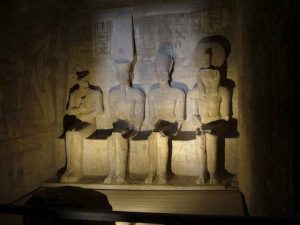
Ptah = quarter aspect of the whole. Always in 'shadow'. A grounding of something. Roots of a 'tree'?
![]() Continued: Closer to that mind set would be: Horizontal {'table'} / Vertical {staff} in relation to: "The symbol of Thebes is the 'uas' {prosperity} and is called ''key of the Nile'', the principle that makes for reuniting the Horian issued from Ptah of origin {Horus the Elder} with the completed work of gestation {Horus, son of Isis}...The uas, is represented in tut-ankh-amon's panoply of canes and scepters; in its natural form = the branch of a tree covered in gold {''Golden Bough'' link?}...The uas scepter is placed in the hands of all the Neters and plays a very important role. In fact, it pertains to a living branch {'living water'?} conducting the vivifying sap, but this sap only ascends without again descending, as it must do in order to take on body beneath the bark {'khonsu'?}. This is one of the reasons for choosing the object as symbol, and a particular regarding the intention: the flux of the Word - the nourishing sap - is not yet manifested. It pertains to an activity, the 'creative' function, which is not yet created..." ['Sacred Science'].
Continued: Closer to that mind set would be: Horizontal {'table'} / Vertical {staff} in relation to: "The symbol of Thebes is the 'uas' {prosperity} and is called ''key of the Nile'', the principle that makes for reuniting the Horian issued from Ptah of origin {Horus the Elder} with the completed work of gestation {Horus, son of Isis}...The uas, is represented in tut-ankh-amon's panoply of canes and scepters; in its natural form = the branch of a tree covered in gold {''Golden Bough'' link?}...The uas scepter is placed in the hands of all the Neters and plays a very important role. In fact, it pertains to a living branch {'living water'?} conducting the vivifying sap, but this sap only ascends without again descending, as it must do in order to take on body beneath the bark {'khonsu'?}. This is one of the reasons for choosing the object as symbol, and a particular regarding the intention: the flux of the Word - the nourishing sap - is not yet manifested. It pertains to an activity, the 'creative' function, which is not yet created..." ['Sacred Science'].
Question. Branch of a sycamore?
And/or: ''Five loaves and two fish'' {i.e., feeding of the 'five thousand'}. 'Thousands' would be represented in the Ramesses example as the many 'enemies' seen defeated as 'pictured' within the larger rooms. The above picture within a smaller one. Exterior/ Interior { i.e., inner sanctum} as a means...? {i.e., that ''duality'' clause}.
To defeat one internal 'enemies' and/or old habits, especially those 'bad' negative ones- to gain the upper hold. Higher over lower. Using actual individual events alongside the spiritually intended ones {metaphysical?}.
One relates to the individual effort, the other the collective {i.e., 'sharing'}. Which and why?
Clue: Fisher of men.'

Broad as long?
''The Great Temple was constructed keeping in mind the position of the sun on February 22 and October twentytwo. On these days, sunlight penetrates 55 meters (180 feet) into the inner sanctuary to illuminate the statues along the back wall. Only Ptah, the god of the Underworld, remains in darkness all year round. Why those specific dates were chosen remains a mystery and some believe they might represent Ramses II’s birthday or his coronation.'' ['Ancient Egypt Online'].
'Lengthening' of light?
'Ducks' to enlarge.
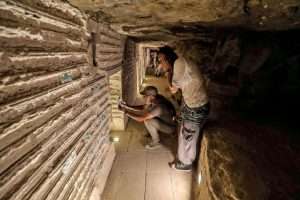
Corridor of the Step Pyramid.
Side note: ''The so-called “22 rooms” in the basement of the Taj Mahal are not really rooms, rather a long arched corridor along which doors were fixed so the space could be utilised better, sources in the Archaeological Survey of India (ASI) who have seen the basement area on several occasions, said.''
'Corridor' to enlarge.
''Avenue of Sphinxes or The King's Festivities Road, also known as Rams Road (Arabic: طريق الكباش) is a 2.7 km (1.7 mi) long avenue (dromos) which connects Karnak Temple with Luxor Temple having been uncovered in the ancient city of Thebes (modern Luxor), with sphinxes and ram-headed statues lined up on both flanks. Construction some believe to have begun with Hatshepsut - who ruled for 22 years.''
Amenhotep III?
''This road was used once a year during the Opet festival when the Egyptians paraded along it carrying the statues of Amun and Mut in a symbolic re-enactment of their marriage. On 'twentyfifth' November 2021, the avenue was opened to the public having concluded restoration works that took over 'seven' decades to complete.''

Nike in right hand. Solid gold.
And/or: ''The annunciation to the virgin Mary was made, at least symbolically, on 22nd September 8 BC...{by the 'angel' Gabriel}....On this day Sirius reached the meridian at dawn {i.e., its highest point}, the sun was conjunct with spica....In the original Egyptian version of Justitia, Virgo as Maat, Spica would probably have been either a feather of justice or a lotus flower. The association of the lotus with the birth of Horus as the incarnation of the Solar Logos.'' [Page 234/5 'Magi: The Quest for a Secret Tradition'].
The author A. Gilbert attempting to place the birth of the Jesus' child' in summer {i.e., July 29th} rather than winter.
Recall the upside down figure of Orion in the Southern Hemisphere.
Question. Did the Egyptians use the southern hemisphere?
''He has travelled around the whole of the two skies, he has circumambulated the Two Banks.'' [Pyramid Text utterance 273-274 - insert from the book 'Shamanic Wisdom in the Pyramid Texts' / Page 119].
Recall the upside down statues of Khafre found purposely in pits in the Sphinx temple. The beginning of the journey.
Upstream or downstream to continue?

Sad or joy?
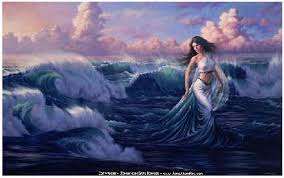
Eurynome
And/or: ''Melusina comes into the same category as the nymphs.....the watery realm. ...They 'dwell' in the blood - being a primitive symbol for the soul. Descended from the whale in whose belly the prophet Jonah beheld great mysteries. The birthplace of Melusina is therefore the 'womb' of the mysteries - what we call today the unconscious. They have no genitals - like Adam and Eve - representing paradisal beings. Which is beneath the water and still is, where the 'devil' glided into the tree of paradise {sea snake?} and ''saddened'' it, and Eve was seduced by the eternal Basilisk - whereupon they aquired 'genitals' {i.e., 'fire' link i.e., that duality clause, as in one example sad/joy - because of that {now} turbulence of the mind}....She is an anima figure..a variant of the mercurial serpent, sometimes shown as a snake woman. The redemption of this 'monstrocity' of which is depicted as the assumption and coronation of the Virgin Mary.''
Continue: The twentytwo Major Arcana of the Tarot in relation to a ''living tradition''. [Intro: 'Meditations on the Tarot' / Tomberg].
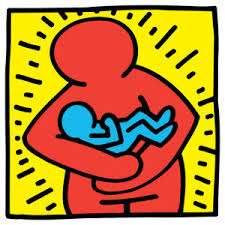
A 'birthing'?
'Living water'?
Side note: ''Champollion read his famous letter announcing his findings on 22 September 1822 in Paris.'' ['World Archaeology' / Issue 116].
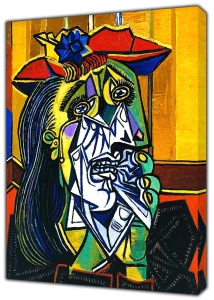
The violence and misery a woman has suffered are conveyed by the jagged lines and abstract facets of her face. In her clenched teeth is the handkerchief with which she also wipes her eyes, her tears are crystallized and caustic. As if her sorrow were inconsolable, Picasso painted this and other versions of the weeping woman in his mural Guernica to protest the slaughter of civilians on April 26, 1937, when German aircraft supporting Franco’s Fascists bombed the Basque town.
And/or: Myrtle, whose full name was Myrtle Elizabeth Warren, was a Ravenclaw (JKR) student at Hogwarts in 1943 when she was killed by the Basilisk from the Chamber of Secrets. She had been hiding in that bathroom because she was being teased by Olive Hornby, when she heard someone come in and heard that person speaking. She realized it was a boy, so she opened her stall to tell him to get out of the girls’ bathroom, only to find herself face to face with the Basilisk. (CS16). It was hours before anybody found her body (GF25). Her murder was used to create the Diary Horcrux (BLC).
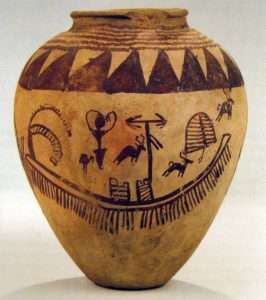
"The Rump is part of the Arabian megaconstellation of the Lion (al-asad). It lies well south of the rest of the Lion, so it may have been a later addition to the figure." Happy or sad?
After her death, Myrtle decided to haunt Olive Hornby to make her pay for teasing her, and followed Olive around until the Ministry had to step in and stop her (GF25). She then returned to the site of her death, a toilet, which she has haunted ever since, crying and splashing water whenever she feels the least bit miserable. Peeves in particular loves to pick on her and make her cry (CS8), and Ron seems particularly adept at causing offense (CS9).
Myrtle took quite a shine to Harry Potter, offering to share her toilet with him if he died (CS17) and spying on him when as he bathed in the prefects’ bathroom (GF25). She has been meeting Draco Malfoy, too, in the boys’ bathroom. Although she is a rather strange confidant, Draco complains to her that he’s lonely and people pick on him (HBP21, HBP24).
Myrtle was pleased when Albus Potter and Scorpius Malfoy visit her bathroom many years later “….Boys. In my bathroom. In my girls’ bathroom…. I always did have a soft spot for the Potters. And I was moderately partial to a Malfoy too.
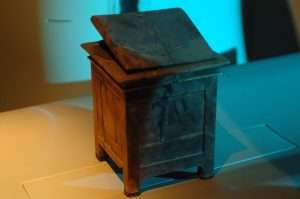
Solitary 'tooth' {and liver} found in a 'square' box belonging to Hatshepsut.
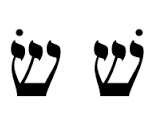
"Shin represents the number 300. Shin also stands for the word Shaddai, a Name of God. A kohen forms the letter Shin with each of his hands as he recites the Priestly Blessing. In the mid-1960s, actor Leonard Nimoy used a single-handed version of this gesture to create the Vulcan hand salute for his character, Mr. Spock, on Star Trek.[16][17]....Shin (also spelled Šin (šīn) or Sheen) is the 21st {'twentyone'} and penultimate letter....based on a "tooth"...Shin is also one of the seven letters which receive “crowns” (called tagin) in a Sefer Torah. (See Gimmel, Ayin, Teth, Nun, Zayin, and Tzadi)." 7x3?
Side note: Harry Potter defeats the Basilisk { and Mr Riddle} with a tooth from the same. After defeating it with the 'sword from the hat'. Which only returns 'to its true Master' when required. The Phoenix bird {fawkes} - which "can carry immensely heavy loads and their tears have healing powers." 'blinds' the Basilisk and heals the 'wounded' Harry.
And/or: The Biblical Luke = Beloved physician.
'Eighteen'.

"When Ra weeps, the water that flows from his eyes upon the ground, turns into working bees." 'Cancer' to enlarge.
The Sword of Godric Gryffindor is Goblin-made, and as such takes in the strengths of whatever it touches. Because of this, it can destroy horcruxes after taking in basilisk venom when Harry stabbed the Basilisk in The Chamber of Secrets.
And/or: "....and then there is me, Zapan, keeper of the legendary Damascus Blade. Honed to a monomolecular edge. It slices armour like butter. Forged before The Fall, by the lost arts of URM metallurgy." {Alita: Battle Angel / 2019}.
Mind set?
In the final scene Alita is seen looking into a mirror - tears in her eyes - {thinking about her lost boyfriend}. A tear falls from her face, but before it falls to the ground she slices it in two.
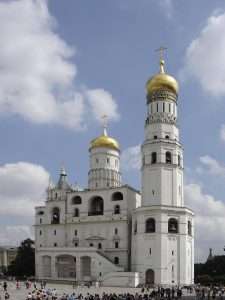
Onions. 'Corner' plot?

Swollen?
And/or: "So valuable are tears as a psychic factor that they have been depicted in myth and in dreams as precious jewels, golden amber, rain and the life-giving rays of the sun. Spontaneously, they overflow the swollen reservoirs of feeling, and the feelings may be as diverse as grief, joy, pain, excitement, compassion, relief or fear. We are not the only ones who cry. Primates, elephants and beavers are among the animals known to cry when they are upset. Human beings, however, “cry over onions, over spilled milk, over the frustration of threading a needle. We weep from unbearable sadness and simple boredom, from the thought of the future and the memory of the past”.....

In North Germany Alkor, as there written, has been der Hinde, the Hind, or Farm Hand; in Lower Germany, Dumke; and in Holstein, Hans Bumken, Hans the Thumbkin, — the legend being that Hans, a wagoner, having given the Saviour a lift when weary, was offered the kingdom of heaven for a reward ; but as he said that he would rather drive from east to west through all eternity, his wish was granted, and here he sits on the highest of the horses of his heavenly team.
Indeed, tears of mourning are imagined by the Dagara people of Burkino Faso to carry the dead to the realm of the ancestors. “Tears” as tree saps made into incense, myrrh, olive oil or other resins and unguents for the dead were thought by the ancients to compensate the life sap that the dead had lost. Tears ritually spilled for the gods of eternal return, like Attis or Osiris, were believed to help bring about the regeneration of nature . The saltiness of tears intimately connects us to the primordial seawater, the containing matrix of being. In alchemy, tears belong to the operation of solutio; they represent a softening or melting of those aspects of the personality that have hardened and become inflexible. And as a form of the areanum sal, or salt, tears are emblems of both bitterness and of the bitterness that in being shed can be transmuted into wisdom." [The Book of Symbols' / Taschen].

"Its going to be a bloodbath." Did he get one right? Question. CAN KARMA BE BOUGHT WITH DOLLARS, CENTS AND DIMES?
Continued: The crown jewels consists of over 0nehunderd and forty objects {140} - including a spoon and walking stick and in 1671 Thomas Blood attempted to steal them. Been in the Tower since the 1600s. Used in the coronation of British monarchs. ['Lightening' / BBC2 /S2 E27].
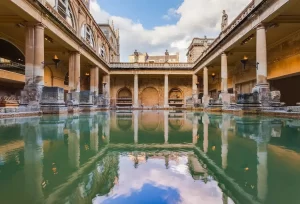 ''Henry VII's personal guards were the first 'Beefeaters', so named as they were permitted to eat as much beef as they wanted from the King's table, and Henry VIII decreed that some of them would stay and guard the Tower permanently.''
''Henry VII's personal guards were the first 'Beefeaters', so named as they were permitted to eat as much beef as they wanted from the King's table, and Henry VIII decreed that some of them would stay and guard the Tower permanently.''
'Fire on fire'?
''What is interesting about this proposed etymology is that youngman is in turn related to Old Norse ungmenni (youths); North Frisian ongman (lad, fellow); Dutch jongeman (youngman); and German Jungmann (deckhand, ordinary seaman);[5] cf. also German Junker ⇐ jung[er] Herr. Thus this etymology provides a plausible semantic link from yongerman to youngman, while at the same time providing most of the earliest definitions of yeoman (see Historical Meanings below).''
'Abaton' by H. Junker.
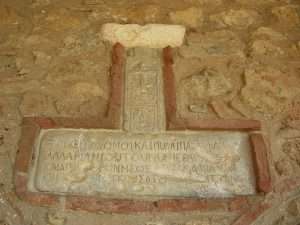
Twice as broad as long? Sealed?
''Luckily for the Crown Jewels, those applying for Beefeater jobs must meet high standards. In order to qualify as a Yeoman Warder any candidate must have served for at least 22 years in the armed forces, be a former warrant officer or senior non commissioned, plus hold the Long Service and Good Conduct medal.''
Question. Why twentytwo?
''Warrant officers rank between specialists and commissioned officers. They ordinarily serve as battalion or brigade regimental sergeant majors...Ensign is a junior rank of a commissioned officer in the armed forces of some countries, normally in the infantry or navy. As the junior officer in an infantry regiment was traditionally the carrier of the ensign flag.''
''The so-called “22 rooms” in the basement of the Taj Mahal are not really rooms, rather a long arched corridor along which doors were fixed so the space could be utilised better, sources in the Archaeological Survey of India (ASI) who have seen the basement area on several occasions, said.''
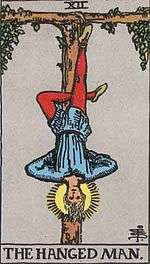
'Flower' pot head?

That universal mindset? ''Director Harold Ramis, commenting on the premise in a special feature of the movie, estimated that Phil was stuck in the time loop for about 10000 years, before later saying it was probably more like 10 years.'' R.I.P
A work in progress: ''I think i-m a god. Not thee god, just a god. I have been stabbed, shot, poisoned. frozen, hung, electrocuted and burned - and yet every morning i wake up without a scratch.''
''Why are u telling me this?''
''Because i want you to believe in me.''
''Believe ME! You are not a god. This comes from 'twelve' years of Catholic schooling.''
''I wake up every day, right here in punxsutawney - and its always Febuary 2nd {i.e., 2nd of the 2nd} - and i cant do anything about it. If you still cant believe me, listen, in ten seconds Larry will come through that door and take you away from me - but you cant let him. He will say: 'We had better get going if we are to stay ahead of the weather.''
''Maybe i should spend the day with you ....as an OBJECTIVE WITNESS...just to see what happens.'' [Bill Murrey/Andie MacDowell: 'Groundhog Day' / 1993].
And/or: ''The word Catholic is derived from the Greek adjective, katholikos, meaning "universal," and from the adverbial phrase, kath' holou, meaning "on the whole."
Caroline?
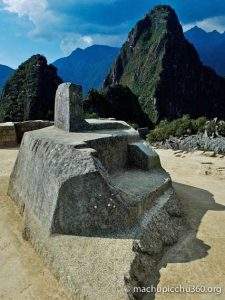
Where have you seen it before?
 Headscratch: ''A bishop of Rome identified the woman seeking Christ in the garden with Solomon's bride or Shulamite seeking her bridegroom, a link which continues to be celebrated even today during the feast day of Mary Magdalene on 22 of July, when the verse beginning 'Place me as a seal upon your heart' is sung to celebrate her love for Christ. It was a seal, that for centuries, an ancient Egyptian goddess queen had placed upon the heart of her beloved king at the New Year.'' [Page 88/141 'Egypt's Anointing Mysteries' / A. Roberts].
Headscratch: ''A bishop of Rome identified the woman seeking Christ in the garden with Solomon's bride or Shulamite seeking her bridegroom, a link which continues to be celebrated even today during the feast day of Mary Magdalene on 22 of July, when the verse beginning 'Place me as a seal upon your heart' is sung to celebrate her love for Christ. It was a seal, that for centuries, an ancient Egyptian goddess queen had placed upon the heart of her beloved king at the New Year.'' [Page 88/141 'Egypt's Anointing Mysteries' / A. Roberts].
Wife's birthday and/or coronation?
'Blessed'?
Nefertiti/Nefertari?
'Gift of tears'? {Page 36 'Meditations on the Tarot'].
And/or: ''The seven archetypal 'miracles' - two of which is the Wedding of Cana {lower Galilee} - 'water into wine'- and the Healing of the Nobleman's son.'' [Page 150 'Meditations on the Tarot'].
'Rainbow' to enlarge.
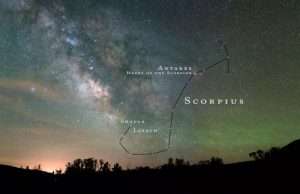
The tail end of the ''stinger'' = two swimming ducks.

Sealed? A golden one?
Continued: ''Solomon's kingship is itself confimed by a woman during the legendary visit of the Queen of Sheba, a foreign woman who travels from the south to HIS court....Curiously, this episode follows closely after Solomon has established 'Pharaoh's daughter' in HER house near his temple which he had built in Jerusalem with the help of Phoenician craft expertise and wisdom - 'a foreign wife and her own house'....'' [same].
Question. Was the wife of Ramses a 'foreigner'?
And/or: ''The biblical city of Tamar or Tamara. Mentioned in 1st Kings. It was built over an oasis by the great King Solomon - after he became one of the wisest persons in the kingdom. On the northern incense route. It was one of the fortresses that guarded the copper mines further south. Its in the middle {'midst'} of the Arabah desert in the Great Rift Valley meaning 'a desolate and dry place'. It marked the place of the southern kingdom of Israel....This is where the Isralites wandered {Exodus} ...within it is the Scorpion ascent route...because of its zigzag nature.'' [Day twentytwo: 'Pilgrimage of Freedom: Lent' / Magdala].
Side note: ''The books of Kings were originally one volume in the Hebrew text.'' [Page 550 'Holy Bible'].
Hebrews {north} Judah {south}.
''The modern English word "Hebrew" is derived from Old French Ebrau, via Latin from the Ancient Greek Ἑβραῖος (hebraîos) and Aramaic 'ibrāy, all ultimately derived from Biblical Hebrew Ivri (עברי), one of several names for the Israelite (Jewish and Samaritan) people (Hebrews). It is traditionally understood to be an adjective based on the name of Abraham's ancestor, Eber, mentioned in Genesis 10:21. The name is believed to be based on the Semitic root ʕ-b-r (עבר) meaning "beyond", "other side", "across".
''The Hebrew name for Judah, Yehuda (יהודה), literally "thanksgiving" or "praise," is the noun form of the root Y-D-H (ידה), "to thank" or "to praise."[3] His birth is recorded at Gen. 29:35; upon his birth, Leah exclaims, "This time I will praise the LORD/YHWH," with the Hebrew word for "I will praise," odeh (אודה) sharing the same root as Yehuda. Alternatively, Edward Lipiński connected Hebrew yĕhūdā with Arabic whd / wahda "cleft, ravine".
'Gap' to enlarge.
''The tablets within the Ark of the Covenant {which also contain manna and the staff of almond blossoms} - are written upon in ancient Hebrew.'' [Day twentythree: Pilgrimage of Freedom: Lent 2023: Magdala: Israel].
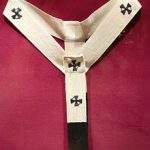
Fork in the road?
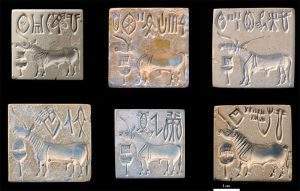
Unicorn stamp seals - found in Pakistan. Its origins. ''East a beginning. West its ending.'' Embossed/Debossed?
REFRESHER: "As a rule, the specialist's is a purely masculine mind, an intellect to which fecundity is an alien and unnatural process; therefore it is an especially ill adapted tool for receiving and bringing to birth a 'foreign' spirit. But a greater mind bears the stamp of the feminine; to it is a receptive and fruitful womb {'Venus'?} which can reshape what is strange into a familiar form. Wilhelm possessed in the highest degree the rare charism of spiritual motherhood {'Sophia'?}. To it he owed his as yet unequalled ability to make incomparable translations." [Jung on 'The Secret of the Golden Flower' / R. Wilhelm].
Side note: ''The union with the 'divine' is not the absorption of their being by Divine being, but rather the experience of the breath of Divine love, the illumination of Divine love, and the warmth of Divine love. The SOUL which receives this undergoes such a miraculous experience that it 'cries' - fire meets fire - Nothing is extinguished in the human personality but, on the contrary, everything is set ablaze. This is the experience of 'legitimate twofoldness' or the union of two SEPERATE SUBSTANCES in one sole essence. The 'substances' remain seperate as long as they are bereft of that which is the most precious of all existence: free alliance in 'love'....'' [Page 36 'Meditations on the Tarot'].
''Salt'' to enlarge.

Two triangles. 180 degrees each. 'Squaring the circle'?
Continued: ''In Cabalistic tradition, the twentytwo letters of the Hebrew alphabet are symbolized by the twentytwo almond blossoms on the 7 armed candelabrum of the temple. They are classified as 3 mothers {aleph, mim, and shin}, 7 duplicated letters, which correspond to the planetary spheres as well as the metals, and finally 12 single letters related to the zodiac. Thus the ancient sacred numbers are brought into a unified system....It seems that the 22 cards of the Tarot and there arcana, or mysteries, have grown out of such speculations....on certain basic human situations.'' ['Mystery of Numbers'].
Luke 2:22-40?
Coronation/Ducks to enlarge.
''Only 22 jungle boats were made for Disney World.'' ['Pawn Stars' / S15 EP18].
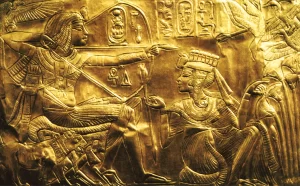
Giving directions?

The tail end of the ''stinger'' = two swimming ducks.
Working example: ''There are other items within Tut's possession that indicate he was a 'warrior'. Egyptian archers used two kinds of bows: simple and composite. The composite bow was owned only by royalty and nobility....Tutankhamun had 'thirtytwo': {'thirteen' in the Antechamber, 'sixteen' from the Annex {'added'?} and 'three' more in a box in the Treasury}. Pharaohs were often depicting themselves shooting arrows that pierced COPPER ingots....The SIMPLE bow was a single staff of wood, notched at both ends. Tutankhamun had 'fourteen' of them - most found in an unexpected place: in the Burial Chamber; between the shrines, some standing upright in a corner, most lying flat on the floor....But why? A loyal servant placing them near his master? There are plenty of scenes of Tutankhamun hunting DUCKS with his bows and arrows.'' [Pages 17/18 'Ancient Egypt' / JAN - FEB 2023].
''Fortysix'' in total?
Question. Fourteen days = 'fifteen' nights?

The Emesa temple to the sun god Elagabalus with baetyl at centre. Roman coin of 3rd century AD.

Oxhide ingots at the Numismatic Museum, Athens.
And/or: Oxhide ingots are heavy (20–30 kg) metal slabs, usually of copper but sometimes of tin, produced and widely distributed during the Mediterranean Late Bronze Age (LBA). Their shape resembles the hide of an ox with a protruding handle in each of the ingot’s four corners. Early thought was that each ingot was equivalent to the value of one ox.[1]: 138 However, the similarity in shape is simply a coincidence. The ingots' producers probably designed these protrusions to make the ingots easily transportable overland on the backs of pack animals.[1]: 140 Complete or partial oxhide ingots have been discovered in Sardinia, Crete, Peloponnese, Cyprus, Cannatello in Sicily, Boğazköy in Turkey (ancient Hattusa, the Hittite capital), Qantir in Egypt (ancient Pi-Ramesses), and Sozopol in Bulgaria.[2][3] Archaeologists have recovered many oxhide ingots from two shipwrecks off the coast of Turkey (one off Uluburun and one in Cape Gelidonya)....

Childs play?
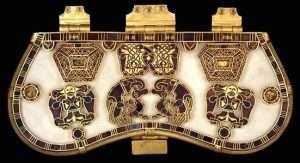
Sutton Hoo purse clasp: Wolfs / eagles and ducks.
The appearance of oxhide ingots in the archaeological record corresponds with the beginning of the bulk copper trade in the Mediterranean—approximately 1600 BC.[4]: 281 The earliest oxhide ingots found come from Crete and date to the Late Minoan IB, approximately 1500 BC to 1450 BC.[5]: 322 The latest oxhide ingots date to approximately 1000 BC, and were found on Sardinia.[4]: 283 The copper trade was largely maritime: the principal sites where oxhide ingots are found are at sea, on the coast, and on islands.[1]: 138
It is uncertain whether the oxhide ingots served as a form of currency. Ingots found in excavations at Mycenae are now part of the exhibits of the Numismatic Museum of Athens. Cemal Pulak argues that the weights of the Uluburun ingots are similar enough to have allowed "a rough but quick reckoning of a given quantity of raw metal prior to weighing".[1]:
Side note: St. Marks Gospel is the shortest of all the Gospels with sixteen chapters.
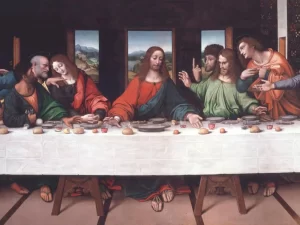
V shape? Split? 'Hands / Fingers' to enlarge.,
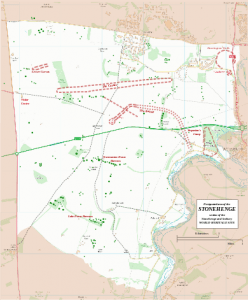
Convex / concave or both? And/or: The phrase "horses for courses" originates from horse racing, where different horses perform better on different types of 'footing' {racetracks}. The idea is that just as certain horses are suited to specific courses, people or things are better suited for particular tasks or situations.
In a broader context, the phrase means that different people have different strengths and weaknesses, and one should choose the right person or approach for a specific task. It emphasizes the importance of matching skills and abilities to the requirements of a situation. The phrase has been in use since at least the late 19th century and is often used in discussions about business, management, and team dynamics.
"The Monastery of Saint Mark {'Five' Ararat Road} (Syriac: ܕܰܝܪܳܐ ܕܡܳܪܝ̱ ܡܰܪܩܽܘܣ ܕܣܽܘܪ̈ܳܝܝܶܐ, romanized: Dayrā dMār Marqus dSūrāyē) is a Syriac Orthodox monastery and church in the Old City of Jerusalem. According to a 6th-century inscription found during a restoration in 1940, the church was built over the ancient site of the house of Mary, mother of St. Mark the Evangelist (Acts 12:12); the Syriac Orthodox and other Christians believe that Mary's house was the place of the Last Supper of Christ with His disciples. However, Catholics and other Christians believe that the Last Supper was held at the site of the nearby Cenacle, on Mount Zion."
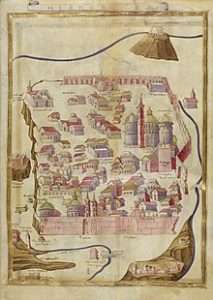
Cenacle in N/W corner. Flat?
The Cenacle (from the Latin cenaculum, "dining room"), also known as the Upper Room (from the Koine Greek anagaion and hyperōion, both meaning "upper room"), is a room in Mount Zion in Jerusalem, just outside the Old City walls, traditionally held to be the site of the Last Supper, the final meal that, in the Gospel accounts, Jesus held with the apostles..."Cenacle" is a derivative of the Latin word ceno, which means "I dine". Jerome used the Latin coenaculum for both Greek words in his Latin Vulgate translation.
Poseidon.
According to the Christian Bible, the Cenacle was a place in which the apostles continued to gather after the Last Supper, and it was also the site where the Holy Spirit alighted upon the eleven apostles on Pentecost
The site is administered by the Israeli authorities, and is part of a building holding the so-called "David's Tomb" on its ground floor."
Lower/Upper.
"In Christian tradition, the room was not only the site of the Last Supper, i.e., the Cenacle, but the room in which the Holy Spirit alighted upon the twelve apostles and other believers gathered and praying together on Pentecost. Acts 1-2 tell us that Judas had been replaced by Matthias, and 120 followers of Jesus gathered in this room after His ascension."
'120'.
'Three and Four'.
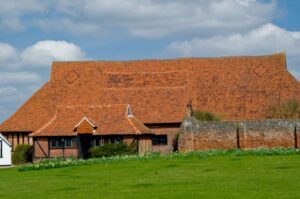
One of the two ancient barns at Cressing Temple. Lozenge shape on roof?
 And/or; "Pentecost was the celebration of the beginning of the early weeks of harvest. In Palestine, there were two harvests each year. The early harvest came during the months of May and June; the final harvest came in the Fall. Pentecost was the celebration of the beginning of the early wheat harvest, which meant that Pentecost always fell sometime during the middle of the month of May or sometimes in early June.
And/or; "Pentecost was the celebration of the beginning of the early weeks of harvest. In Palestine, there were two harvests each year. The early harvest came during the months of May and June; the final harvest came in the Fall. Pentecost was the celebration of the beginning of the early wheat harvest, which meant that Pentecost always fell sometime during the middle of the month of May or sometimes in early June.
There were several festivals, celebrations, or observances that took place before Pentecost. There was Passover, there was Unleavened Bread, and there was the Feast of Firstfruits. The Feast of Firstfruits was the celebration of the beginning of the barley harvest. Here's the way you figured out the date of Pentecost.
According to the Old Testament, you would go to the day of the celebration of Firstfruits, and beginning with that day, you would count off 50 days. The fiftieth day would be the Day of Pentecost. So Firstfruits is the beginning of the barley harvest and Pentecost is the celebration of the beginning of the wheat harvest."
Refresher: The outpouring of the Holy Spirit came during the Jewish feast of harvest, of fruits, called Shavuot. The Spirit wants to bear fruit in us, a varied and distinct fruit in each of us, but one that builds unity and communion. What are the fruits of the Holy Spirit, and how can I recognize them? And how can I better prepare my personal "soil" so that the Spirit may bear fruit in me?
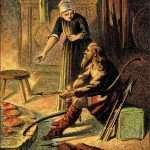
Wheat or barley?
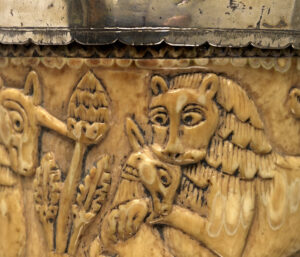
Horn of plenty?
And/or: The Pentecost Room is an immersive 360° work of art that represents the Jewish Feast of Shavuot and the first Christian Pentecost at the Cenacle at Mt. Zion. Such a gathering for Shavuot would be the norm as Jewish people traveled to Jerusalem for centuries to give thanks for the harvest first fruits, and the law....Here too, at the Cenacle on Mt. Zion, Jesus and His Apostles gathered for the Last Supper before His resurrection and again after His Ascension to wait for the gift He promised. This gift, to their surprise, was the Holy Spirit who descended upon them with power, wind, and the fire of His love!
The painting is in the Pontifical Institute Notre Dame of Jerusalem Center. It spans 217 m2 around four walls in a second- floor gathering space. The panorama is near completion. Hand-painting of the ceiling comes next....

Found at Sutton Hoo.
And/or: In Greek mythology and religion,

Which direction is the 'scarf' blowing? AND WHY?
Zephyrus (Ancient Greek: Ζέφυρος, romanized: Zéphuros, lit. 'westerly wind'), also spelled in English as Zephyr, is the god and personification of the West wind, one of the several wind gods, the Anemoi. The son of Eos (the goddess of the dawn) and Astraeus, Zephyrus is the most gentle and favourable of the winds, associated with flowers, springtime and even procreation.[1] In myths, he is presented as the tender breeze, known for his unrequited love for the Spartan prince Hyacinthus. Alongside Boreas, the two are the most prominent wind gods with relatively limited roles in recorded mythology.[2]
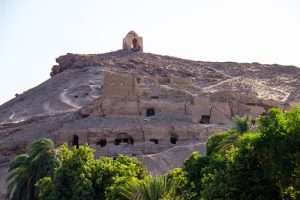
Qubbet el-Hawa or "Dome of the Wind" is a site on the western bank of the Nile, opposite Aswan, that serves as the resting place of ancient nobles and priests from the Old and Middle Kingdoms of ancient Egypt.
Zephyrus, similarly to his brothers, received a cult during ancient times although his worship was minor compared to the Twelve Olympians. Still, traces of it are found in Classical Athens and surrounding regions and city-states, where it was usually joint with the cults of the other wind gods. His equivalent in Roman mythology is the god Favonius.

When the north wind blows?
Zephyrus, like the rest of the wind gods Anemoi (Boreas, Eurus and Notus) was said to be the son of Eos, goddess of the dawn, by her husband and first cousin Astraeus, a minor god related to the stars.[10] The poet Ovid dubs the four of them 'the Astraean brothers' in reference to their paternity.[11]
He is thus brother to the rest of Eos and Astraeus's children, namely the five star-gods and the justice goddess Astraea. His mortal half-brothers include Memnon and Emathion, sons of his mother Eos by the Trojan prince Tithonus. The Athenian playwright Aeschylus in his fifth-century BC play Agamemnon writes that Zephyrus is the son of the goddess Gaia (the mother earth). The father, if one exists at all, is not named.[12]
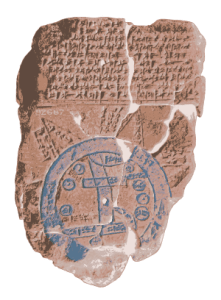
"Mount Ararat (/ˈærəræt/, ARR-ə-rat; Armenian: Արարատ, romanized: Ararat), also known as Mount Ağrı (Turkish: Ağrı Dağı); or Masis (Armenian: Մասիս), is a snow-capped and dormant compound volcano in eastern Turkey. It consists of two major volcanic cones: Greater Ararat and Little Ararat. Greater Ararat is the highest peak in Turkey with an elevation of 5,137 m (16,854 ft); Little Ararat's elevation is 3,896 m (12,782 ft). In Europe, the mountain has been called by the name Ararat since the Middle Ages, as it began to be identified with "mountains of Ararat" described in the Bible as the resting place of Noah's Ark, despite contention that Genesis 8:4 does not refer specifically to a Mount Ararat.
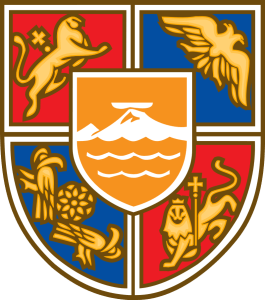
Armenia: Noah's Ark.
Despite lying outside the borders of modern Armenia, the mountain is the principal national symbol of Armenia and has been considered a sacred mountain by Armenians {'split'?}. It has featured prominently in Armenian literature and art and is an icon for Armenian irredentism. It is depicted on the coat of arms of Armenia along with Noah's Ark."
And/or: The word turquoise dates to the 17th century and is derived from the Old French turquois meaning "Turkish" because the mineral was first brought to Europe through the Ottoman Empire.[6][3][4][7][8] However, according to Etymonline, the word dates to the 14th century with the form turkeis, meaning "Turkish", which was replaced with turqueise from French in the 1560s. According to the same source, the gemstone was first brought to Europe from Turkestan or another Turkic territory.[9] Pliny the Elder referred to the mineral as callais (from Ancient Greek κάλαϊς) and the Aztecs knew it as chalchihuitl.[7]
Side note: Bursa was the first major and second overall capital of the Ottoman State between 1335 and 1363. A more recent nickname is Yeşil Bursa ("Green Bursa") referring to the parks and gardens located across the city, as well as to the vast, varied forests of the surrounding region.
Abydos/Memphis.

Robin eggs.
And/or: The kingdom of Macedonia was situated along the Haliacmon and Axius rivers in Lower Macedonia, north of Mount Olympus. Historian Robert Malcolm Errington suggests that one of the earliest Argead kings established Aigai (modern Vergina) as their capital in the mid-7th century BC.[17]

The Green Tomb (Turkish: Yeşil Türbe) is a mausoleum of the fifth Ottoman Sultan, Mehmed I, in Bursa, Turkey. It was built by Mehmed's son and successor Murad II following the death of the sovereign in 1421. The architect Hacı Ivaz Pasha designed the tomb and the Yeşil Mosque opposite to it.[1] In addition to the sultan's sarcophagus, it contains seven other tombs: those of his sons Mustafa, Mahmud and Yusuf, his daughters Selçuk, Ayşe and Sitti and his wet nurse (Daye Hatun).

Part of the dome. 'Corbelled'? 'Swell'?
Characteristically a cryptocrystalline mineral, turquoise almost never forms single crystals, and all of its properties are highly variable. Colour is as variable as the mineral's other properties, ranging from white to a powder blue to a sky blue and from a blue-green to a yellowish green. The blue is attributed to idiochromatic copper[14] while the green may be the result of iron impurities (replacing copper.)[15]: 29
Mihrab (Arabic: محراب, miḥrāb, pl. محاريب maḥārīb) is a niche in the wall of a mosque that indicates the qibla, the direction of the Kaaba in Mecca towards which Muslims should face when praying. The wall in which a mihrab appears is thus the "qibla wall".....The word mihrab originally had a non-religious meaning and simply denoted a special room in a house; a throne room in a palace, for example. The Fath al-Bari (p. 458), on the authority of others, suggests the mihrab is "the most honorable location of kings" and "the master of locations, the front and the most honorable."[full citation needed] The Mosques in Islam (p. 13),[full citation needed] in addition to Arabic sources, cites Theodor Nöldeke and others as having considered a mihrab to have originally signified a throne room.
The minbar, which is the raised platform from which an imam (leader of prayer) addresses the congregation, is located to the right of the mihrab.
In Front/Behind.
Continued: An invocation to Isis. Palm leaf also mentioned within same. Coincidence? ['The Union of Isis and Thoth'].
And/or: ''The substance that comes from almonds mixed in water is known as milk.'' ['The Chase'].
As is: ''A diet rich in almonds improves the flow of blood.''
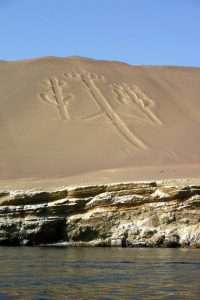
Earliest Nazca glyph?
And/or: On the ceiling of the Church of the Flagellation can be seen: "Thorns {in 'gold'} that become a blossom tree. The almond tree is the first tree that blossoms at springtime, and it is a sign of hope. It always has been. It was the decoration of the Menorah in the temple of the Jewish people." ['Day Three: First Station of the Cross' / Lent / Magdala / 2024].
"The Church of the Flagellation is a Roman Catholic church and Christian pilgrimage site located in the Muslim Quarter of the Old City of Jerusalem, near St. Stephen's Gate (also called Lions' Gate). It is part a Franciscan monastery which also includes the Church of the Condemnation and Imposition of the Cross. The monastery stands at the traditional Second Station of the Cross on the Via Dolorosa.... as the location of Pontius Pilate's judgment of Jesus (John 19:13)."
Side note: ''The hexagram is the sign and formula of 'love' - as the unity of father, son and holy Spirit; and mother, daughter, and holy Soul. The spiritual history of mankind is the WAY from the cross to the pentagram to the hexagram.'' [Page 118 'Meditations on the Tarot'].
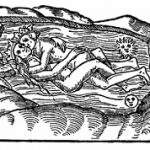
"...Because a modern man lives in 'sleep' {unknown/unaware link}, what knowledge therefore can a sleeping man have? And if you think about it and at the same time remember that sleep is the chief feature of our being, it will at once become clear to you that if a man really wants knowledge, he must first of all think about how to wake, that is, about how to change his being...Therefore a man who wants to awake must look for other people who also want to awake and work together with them. This, however, is easier said than done because to start such work and to organize it requires a 'knowledge' which an ordinary man cannot possess. The work must be organized and it must have a leader. Only then will it produce the results expected of it..." ['In Search of the Miraculous'. Parenthesis, emphasis, this readers].
The above indicative of such works by such authors {''teachers?''} as Gurdjieff. Now almost a century ago. That 'information/knowledge' that was scarce once upon a time - is these days common and accessible to all. In other words - these days - one can become - ones own teacher.
Follow the title of the book to 'see' it in its broader context.
The Papyrus of Ani?
A change of {scene?}...Why should 1616 be significant with the Rosicrucians; or 1717 in relation to Freemasonry, or 1888 in relation to the Golden Dawn, or 1919 within the book of Revelations and/or Isaiah 1919?
N.B. The stone {with hieroglyphs} went missing in 1919 from a 'book binding store' in Halifax Nova Scotia. ['Curse of Oak Island' series 4 / episode 4]. Enlarged elsewhere.
A working example: "A large, virtually empty square space stands in the center of Karnak today, as very little remains of the Middle Kingdom temple that once marked the heart of Amun-Ra’s cult. Only a series of rose granite doorway sills and a large calcite alter from the original temple can still be seen today. This area is now called the “Middle Kingdom court.”
Measurements: The temple measured 38m by 38m and stood 6m high; The rectangular chapels of Amenhotep I were 3.1m high, 2.6m wide and 3.65m deep; the small chapels along the court’s bisecting wall were 1.1m wide, 1.3 deep and 1.75m high."

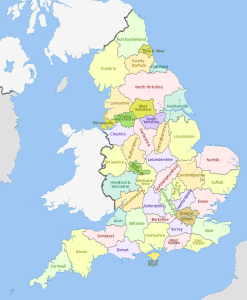 Side note: ''The counties used for purposes other than local government, such as lieutenancy, also changed, being either a single administrative county or a grouping of administrative counties and associated county boroughs. The one exception was the City of London, which alone among counties corporate retained a separate lieutenancy and although part of the administrative County of London was also a county of itself for all other purposes. In legislation after 1888 the unqualified use of the term "county" refers to these entities, although the informal term "geographical county" was also used to distinguish them from administrative counties. They were shown on Ordnance Survey maps of the time under both titles, and are equivalent to the modern ceremonial counties.''
Side note: ''The counties used for purposes other than local government, such as lieutenancy, also changed, being either a single administrative county or a grouping of administrative counties and associated county boroughs. The one exception was the City of London, which alone among counties corporate retained a separate lieutenancy and although part of the administrative County of London was also a county of itself for all other purposes. In legislation after 1888 the unqualified use of the term "county" refers to these entities, although the informal term "geographical county" was also used to distinguish them from administrative counties. They were shown on Ordnance Survey maps of the time under both titles, and are equivalent to the modern ceremonial counties.''
And/or: "The Football League First Division between 1888 and 1992 was the top tier in English football. From the start of the 1992–93 season, the first division became the second tier in English football. The champions would now be promoted to the Premier League."
Shrovetide to enlarge.
Continued: {synchronistic?} ''The papyrus of Ani was found by W. Budge in 1888.'' [Wiki].
And/or: ''The German author Hermann Hesse; a contemporary of Jung, in his first noted work Demian, written under the pseudonym of Sinclair - repeatedly refers to Abraxas - published in 1919.'' [Page 93 'The Gnostic Jung' / S. Hoeller].
Abraxas?
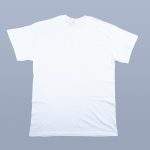
'T' shaped Garment?
''It is I who have entered into the house of Asar and I have clothed myself with garments of the one who is within. It is I who has entered into Rostau and I have seen the secrets which are within. Hidden was I, but I found a way. " Chapter thirtythree. [Page 123 'Egyptian Book of the Dead' / M. Ashby].
Understanding subject material gives clues to the grave site of Asar {Osiris}.
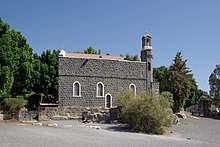
Red tiled. "Sixes and sevens" to enlarge. 'Wattle'?
And/or: ''The place was uninhabited at the time of Jesus just palm trees etc - known because of its seven springs {Tabgha link }- but it was on this shore in the MIDDLE of nowhere that jesus came after the resurrection. A basalt stone church made from dark volcanic stone built after the Franciscans purchased the site in 1933. Seven volcanic steps lead up to the doorway.'' [Church of the Primacy of St. Peter: Forgiveness and Mission: Pilgrimage of Grace: Lent 2022].
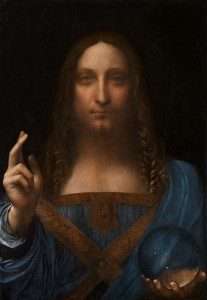
Multiplication?
Tabgha is the name of a site on the northwestern shore of the Sea of Galilee where Jesus appeared after his resurrection (John 21), and where he multiplied loaves and fishes to feed the crowds gathered to hear him teach. The name, Tabgha, has its roots in the Greek term for “seven springs"
Side note: The Arecaceae (/ærəˈkeɪsiaɪ/) is a family of perennial, flowering plants in the monocot order Arecales. Their growth form can be climbers, shrubs, tree-like and stemless plants, all commonly known as palms. Those having a tree-like form are called palm trees.
The word Arecaceae is derived from the word areca with the suffix "-aceae". Areca is derived from Portuguese, via Malayalam അടയ്ക്ക (aṭaykka), which is from Dravidian *aṭ-ay-kkāy ("areca nut"). The suffix -aceae is the feminine plural of the Latin -āceus ("resembling").
Palm originates from Latin palma semantically overlapping with sense of "hand front" (due to similar splayed shape) ultimately from Proto-Indo-European *pl̥h₂meh₂, a direct descendant folm once existed in Old English.[6]

Buddha's hand.
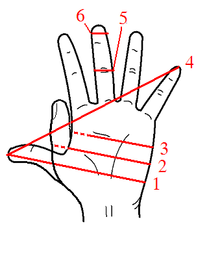
"Hands" may be abbreviated to "h", or "hh". The "hh" form is sometimes interpreted as standing for "hands high".[4][5][6] When spoken aloud, hands are stated by numbers, 15.0 is "fifteen hands", 15.2 is alternately "fifteen-two" or "fifteen hands, two inches", and so on.[5][6][7]
Continued: ''The modern structure was built in 1933 and incorporates parts of an earlier 4th century church. At the base of its walls, opposite the main altar, foundations of the 4th century church are visible. In the 9th century, the church was referred to as the Place of the Coals. This name refers to the incident of Jesus' preparation of meal for the apostles, building a charcoal fire on which to cook the fish. Also first mentioned in the year 808 are the "Twelve Thrones", a series of heart shaped stones, which were placed along the shore to commemorate the Twelve Apostles. The church survived longer than any other in the area, finally being destroyed in 1263.[1] The present Franciscan chapel was built on the site in 1933. This church was included in the itineraries of Popes Paul VI and John Paul II during their visits to Israel in 1964 and March 2000 respectively.

eight / sixteen links.
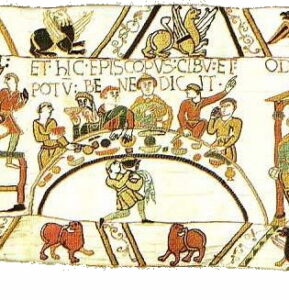
Bayeux Tapestry.
Mensa Christi (Latin for "table of Christ") contains a large rectangular block of limestone[1] (3.6 x 2.7 x 9 m)[2]) that, according to a pious legend, served as a table when Jesus had a meal with his disciples in his hometown.[3] When a biblical reference needs to be applied, the quoted passage is from the Gospel of Mark (Mark 16:14), where Jesus appears to the eleven remaining apostles after his resurrection and finds them reclining at the table and eating, and he scolds them for not believing those who had witnessed him having returned from the dead.[4]
The three decades Jesus spent in Nazareth are commonly called "the silent years", with the Gospels telling us close to nothing about that long period in his life. Over the centuries, Christians have sought for sites suitable for commemorating events from Jesus' life in his home village.[1]

The hand of Sabazios. Thumb = pinecone?
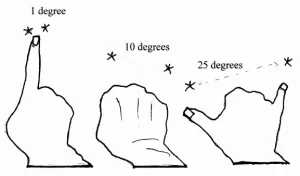 The church contains a projection of limestone rock in front of the present altar which is venerated as a "Mensa Christi", Latin for table of Christ. According to tradition this is the spot where Jesus is said to have laid out a breakfast of bread and fish for the Apostles, and told Peter to "Feed my sheep" after the miraculous catch, the third time he appeared to them after his resurrection. (John 21:1–24) It is disputed whether this table, or the one enshrined at the nearby Church of the Multiplication, is the one mentioned by the pilgrim Egeria in her narrative of the Holy Land circa 380. There is also another table of Christ enshrined at the Mensa Christi Church in Nazareth.'' [Wiki].
The church contains a projection of limestone rock in front of the present altar which is venerated as a "Mensa Christi", Latin for table of Christ. According to tradition this is the spot where Jesus is said to have laid out a breakfast of bread and fish for the Apostles, and told Peter to "Feed my sheep" after the miraculous catch, the third time he appeared to them after his resurrection. (John 21:1–24) It is disputed whether this table, or the one enshrined at the nearby Church of the Multiplication, is the one mentioned by the pilgrim Egeria in her narrative of the Holy Land circa 380. There is also another table of Christ enshrined at the Mensa Christi Church in Nazareth.'' [Wiki].
''Onehundred and fiftythree'' to enlarge.
Side note: Sterling castle also built on top of Volcanic rock.
Ferryman to enlarge.
And/or: ''Enchantment''.
''One of the main highlights of the Church of the Multiplication are its restored 5th-century mosaics. These are the earliest known examples of figurative floor mosaics in Christian art in the Holy Land. The mosaics in the two transepts depict various wetland birds and plants, with a prominent place given to the lotus flower. This flower, which is not indigenous to the area, suggests the artist's use of a Nilotic landscape popular in Roman and Early Byzantine art. All the other motifs depict plants and animals from the Galilee. The mosaic found in front of the altar depicts two fish flanking a basket containing four loaves of bread.''

Recall the dry river beds at Abydos and Petra.
 Analogy: ''I was a hidden treasure and wanted {'loved'] to be known''.....Considered as the Essence, God was a Hidden Treasure, a closed and locked chest of jewels {'Coptos'?}. These 'jewels' are the purrfections of existence represented by the divine names and attributes....but not yet manifested {i.e., ''hidden''. Egyptian equivalent = the meaning of the name ''Amun''}. Without a cosmos, the names are undistinguishable....In other words since he possessed all these perfections within himself, he wanted them to be displayed outwardly so that others could see them as well {working example = Imhotep}. In order for these names to be known, there has to be multiplicity, since no name is different from any other name at the level of absolute oneness. Through multiplicity, each name can manifest its own properties as distinct from the properties of the other names. 'Hence i created the creatures that i might be known'....meaning the creatures are the receptacles, places, or loci within which god's names are displayed {'archetypes'?}. All 10000 of them. Without them the Treasure would remain hidden.'' [Page 165-167 {Kindle}'Tao of Islam'].
Analogy: ''I was a hidden treasure and wanted {'loved'] to be known''.....Considered as the Essence, God was a Hidden Treasure, a closed and locked chest of jewels {'Coptos'?}. These 'jewels' are the purrfections of existence represented by the divine names and attributes....but not yet manifested {i.e., ''hidden''. Egyptian equivalent = the meaning of the name ''Amun''}. Without a cosmos, the names are undistinguishable....In other words since he possessed all these perfections within himself, he wanted them to be displayed outwardly so that others could see them as well {working example = Imhotep}. In order for these names to be known, there has to be multiplicity, since no name is different from any other name at the level of absolute oneness. Through multiplicity, each name can manifest its own properties as distinct from the properties of the other names. 'Hence i created the creatures that i might be known'....meaning the creatures are the receptacles, places, or loci within which god's names are displayed {'archetypes'?}. All 10000 of them. Without them the Treasure would remain hidden.'' [Page 165-167 {Kindle}'Tao of Islam'].
From a different perspective: ''Not surprisingly, the Golden Shrine's decoration, rich in allusions to the natural world and Hathorian love, finds its echo in the New Kingdom private tomb scenes and love poems strewn with imagery drawn from the MARSHES, hunting, lotus flowers, mandrakes, necklaces, and other amulets.' Hathor-Sekhmets rage and radiance {Magdalene?} pervade the chase of all youthful lovers seeking her golden blessings....Yet at the same time, there is a certain restraint running through the shrines intensity. For this is a hidden eroticism, completely veiling the couples relationship in the secret symbols of love - tender looks, the exchange of jewels {Coptos?}, the ritual gesture, the underlying word play and coded imagery, which all contribute to a refined symbolic language of royal love....the enactment of the New Years ritual 'sacred marriage' ceremonies.'' [Page 24/5 'Egypts Anointing Mysteries' / A. Roberts].

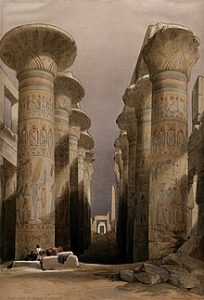
A working example: "A large, virtually empty square space stands in the center of Karnak today, as very little remains of the Middle Kingdom temple that once marked the heart of Amun-Ra’s cult. Only a series of rose granite doorway sills and a large calcite alter from the original temple can still be seen today. This area is now called the “Middle Kingdom court.”
"As Norton wrote; 'Also they wrote; not every man to teach, but to show themselves by secret speech; whereby each of his fellows were made certain; how to them he was a brother, for each of them understood another'. In this we get a hint of a secret brotherhood, much like the Rosicrucians, whose manifestos included the 'Chemical Wedding', one of the most significant allegorical tales of the initiatory system, published in 1616...Mclean suggests that this alchemical work embodies the Rosicrucianism that is the esoteric philosophy lying at the heart of Western Hermeticism which provides a path for the balancing and integration of the masculine and feminine aspects of our souls..."{ Extract from 'The Alchemical Amphitheatre' by M. Katz} - and/or "All those who were fond of the combinations and multiplications of the 4 elements and the 4 in general, as the number of orderly arrangement in time and space, have used 16 as the 'empowered' 4 to express 'perfection' - suffice it to mention the 4x4 philosophical elements of the Rosicrucians..." [Taken from the book 'Mystery of Numbers' by Annemarie Schimmel].
"...consider it an allegory of awakening to the 'mystical' path." [Extract from the book by M. Katz]. Emphasis, this readers.

"The Foundation Stone in the floor of the Dome of the Rock shrine in Jerusalem. The round hole at upper left penetrates to the Well of Souls below. The cage-like structure just beyond the hole covers the stairway entrance of sixteen steps to the cave below." 'Carpet' to enlarge.
Analogy? The 16 word mantra - Hare Krishna.
From a different perspective: "The four Hayyot are then described as one Hayyah on account of their interjoining {i.e., each had four 'faces': Lion/Ox/Eagle and 'man': i.e.,all aspects of one individual - higher/lower}….Also the Ofannim, though being four in number, as has been mentioned are called ''one ofann upon the earth,'' because they to interjoin, and ''they

Hussein Abdul-Rasoul - 'The 'Water-Boy' - whose 'heel' found the first step of 'sixteen' that led to the tomb of the 'golden child'.
four have one likeness {4x4}…." [Page 256 'Guide for the Perplexed'. Parenthesis, this readers].
Try the words in italics to take {'see'} something further.
''Synchronistic example: "I first encountered the zodiac of San Miniato al Monte some sixteen years ago. With one of those perspicacious insights, all to rare in ordinary life, i sensed from the first view of the zodiac that much of my future life would somehow be involved with solving the problems of symbolism set by its iconography and orientation." ['The Secret Zodiac' / Fred Gettings].
Follow the title of the book to 'see' it from a broader viewpoint.
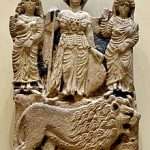
Alchemy equivalent, i.e.,something hinted at - from a different perspective {that inner one?}:"Calcium acetate likes to absorb water to it, such as the loosely held waters that caused the white-to-blue transition of copper{II} sulphate observed by Zieglerin in demonstration 9. When the dry calcium acetate is misted with water, it gains a shiny, pearl-like-appearance. Croll believed that these ''pearls'' were cures for sixteen different types of 'diseases'. Actually, as a source of calcium, they could be helpful in treating osteoporosis, but it is doubtful that this long range effect would have been recognised by the alchemists. Lovely pearls, nonetheless" ['The Chemistry of Alchemy'].

"Rested legs?" In a temple? The throne of Knossos?
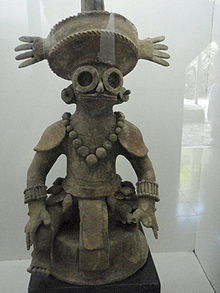
Yax K'uk Mo {1st King}. Wearing the sacred 'eye glasses' = the rain god. Represented with the symbol of the frog. Top/down {water} in relation to bottom /up {frog}. Anything? i.e., what do 'rivers' represent? Question. Where have you seen those ''glasses'' before?..."That were part of the ceremonial headdress." Question. Shoulder pads made from 'carapace'?. Turtle or tortoise? Head 'above water' or below the frost zone?
And/or the 16 Holy Kings of Copan as seen on what is labeled as - the Altar Q. The 16th King of which is called {title} 'The Sky is Newly Revealed'. The first King - who began the Mayan 9th Baktum dynasty = Yax K'uk Mo... "It BEGINS the history of Copan, 'The Lord of the West' - the outsider - accomplishes what has never been done before. He consolidates power into a single dynasty which leads to unprecedented growth and artistic achievement...The inscription on the top of the altar stone {cube?} tells how he came to Copan: 'He took the emblems of office {i.e.,associated with Teotihuacanos - enlarged elsewhere} and 153 days after he left - he rests his legs - he is a West Lord. " [ PBS - 'Lost King of the Maya'].
'Strong' or 'Weak' legs?
17x9?

Isle of 'glass'. Coincidence?
Something more local: "Hearse’s History and Antiquities of Glastonbury (1722) describes a Mr. Eyston being given information on the Thorn by a local innkeeper: "I was told by the innkeeper where I set up my horses, who rents a considerable part of the enclosure of the late dissolved abbey, that St. Joseph of Arimathea landed not far from the town, at a place where there was an oak planted in memory of his landing, called the Oak of Avalon; that he and his companions marched thence to a hill near a mile on the south side of the town, and there being weary, rested themselves; which gave the hill the name of Wearyall-Hill; and Joseph on arrival, planted his staff in the ground and it immediately blossomed."
"Glastonbury was once an inland isle, surrounded by water and only connected to the mainland by a narrow strip of land. Visitors to the Isle could sail up the tidal river Brue."

'Glass' of wine or water?
And/or: The Sceach Geal is a tree that grows in Ireland and throughout the north of the world and its name means “bright thorn” or moon thorn. It was known in Brehon law as an Aithig fedo or a Commoner of the Wood, a quickthorn like its ferocious cousin the blackthorn, and it is also called hawthorn, the gentle bush, the lone thorn, the May tree, the hedgethorn, the Beltaine tree, the Gentry tree, the May blossom, the whitethorn and many other names.
In Ireland the whitethorn is best known as the fairy tree, and it would be a brave farmer who even thought of so much as trimming one back, to this very day! This is particularly true of lone trees standing in a field or other place having never been planted by human hands. Not that long ago at all, a motorway was being built from Limerick city to Galway and it had to be rerouted because a single fairy tree stood in its path, delaying the road for years. The white blood of the fairies would sometimes appear around the tree after their battles, or so the locals said. [Internet}.

A corner of the Temple Mount.
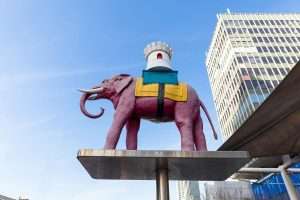 And/or: "This is the Maythorn as young woman and May Queen, Oestre. She has begun her ovulatory cycle. She falls into a deep ‘sleep’, unaware or unconscious of the creative potential of the period, the menstrual aspect of her cycle, and a great tangle of Bramble grows around her castle (defence to the Self) — this is the arrival of autumn. In her sleep, she dreams. In the dreams are visitations by her ‘inner’, dark lover {Glaucus? i.e., 3:9}, or animus, who penetrates the castle — he is Blackthorn of midwinter — and ‘pricks’ her, via the unconscious, by visiting her in such energised form in the dream. He releases her creative potential. This is actualised as the ‘marriage’ with the solar hero of spring: Gorse (the yellow sun), who cuts his way through the Bramble*° and kisses her to awaken her. This is her own extraverted creative endeavour, but also a real love affair. The lover’s kiss is then the first erotic and sexual experience, which is like waking from a dream, where blood is also spilt from the hymen broken by the penis, as the ‘prick of the thorn’'. [Fruits of the Moon Tree].
And/or: "This is the Maythorn as young woman and May Queen, Oestre. She has begun her ovulatory cycle. She falls into a deep ‘sleep’, unaware or unconscious of the creative potential of the period, the menstrual aspect of her cycle, and a great tangle of Bramble grows around her castle (defence to the Self) — this is the arrival of autumn. In her sleep, she dreams. In the dreams are visitations by her ‘inner’, dark lover {Glaucus? i.e., 3:9}, or animus, who penetrates the castle — he is Blackthorn of midwinter — and ‘pricks’ her, via the unconscious, by visiting her in such energised form in the dream. He releases her creative potential. This is actualised as the ‘marriage’ with the solar hero of spring: Gorse (the yellow sun), who cuts his way through the Bramble*° and kisses her to awaken her. This is her own extraverted creative endeavour, but also a real love affair. The lover’s kiss is then the first erotic and sexual experience, which is like waking from a dream, where blood is also spilt from the hymen broken by the penis, as the ‘prick of the thorn’'. [Fruits of the Moon Tree].
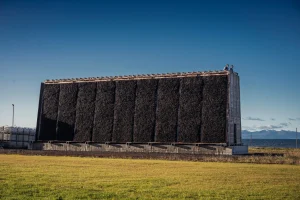 Side note: On the west coast of Scotland, facing out across the Firth of Clyde towards the Isle of Arran, there stands a wall of thorns. It is manmade, but otherworldly, like a vision from a Gothic fairy tale. Its dark tangle of barbs reaches up to a height of 30ft and stretches more than 100ft across. Is it an art installation? A giant instrument of torture on the outskirts of Ayr? The correct answer is far simpler: it makes salt.
Side note: On the west coast of Scotland, facing out across the Firth of Clyde towards the Isle of Arran, there stands a wall of thorns. It is manmade, but otherworldly, like a vision from a Gothic fairy tale. Its dark tangle of barbs reaches up to a height of 30ft and stretches more than 100ft across. Is it an art installation? A giant instrument of torture on the outskirts of Ayr? The correct answer is far simpler: it makes salt.
The history of salt production in Scotland dates back almost a millennium. Before the arrival of refrigeration, the mineral gave a vital means of preserving meat and other foodstuffs. Sea salt was, therefore, harvested along both coasts of the country — using salt pans, shallow containers in which seawater could be heated by fire and evaporated — and, by the end of the 18th century, the commodity had become Scotland’s third most valuable export, behind only wool and fish. Then came a steep decline, as demand waned and the market was overtaken by cheaper rock salt. The last Scottish salt-pan works was closed in 1959.
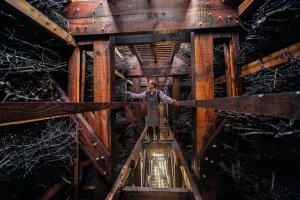 The graduation tower, to give it its proper name, works in the following way. Sieved seawater is piped up to the summit of the structure, then trickled, via wooden taps, down the tower’s web of spiny branches. Each droplet makes its own haphazard journey through the thicket, zigzagging across spike and branch, flowing from twig to thorn. The aim of this slow journey from top to bottom is to give ample time for the droplets to be evaporated by the breeze coming in from offshore. By the time the water reaches ground level, it has become an ultra-salty brine ready for crystallisation. The process is highly sustainable, requiring only wind and seawater to function. It’s also highly effective. All that remains is for the brine to be run through an even finer sieve before being transported to the next-door pan house, where a gentle heat draws out the crystals. The results are sparkling, in more ways than one.
The graduation tower, to give it its proper name, works in the following way. Sieved seawater is piped up to the summit of the structure, then trickled, via wooden taps, down the tower’s web of spiny branches. Each droplet makes its own haphazard journey through the thicket, zigzagging across spike and branch, flowing from twig to thorn. The aim of this slow journey from top to bottom is to give ample time for the droplets to be evaporated by the breeze coming in from offshore. By the time the water reaches ground level, it has become an ultra-salty brine ready for crystallisation. The process is highly sustainable, requiring only wind and seawater to function. It’s also highly effective. All that remains is for the brine to be run through an even finer sieve before being transported to the next-door pan house, where a gentle heat draws out the crystals. The results are sparkling, in more ways than one.

Salt-Cellar given by Bishop Fox to Corpus Christi College, Oxford. Illustration from A Short History of the English People by J R Green (Macmillan, 1892).
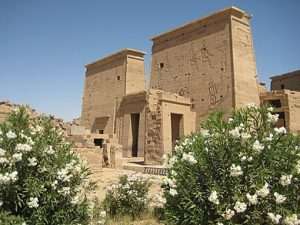
''H'' = Face to face?
The A-frame skeleton of the tower was constructed from local larch and Douglas fir — Mr Marshall, as well as previously being involved in the salt-import trade, has a background as an architect. The bushels themselves are, as the company’s name suggests, cut from blackthorn. ‘Salt actually cures wood, so the blackthorn itself is really hardy,’ explains Mrs Marshall. ‘We think it will need to be replenished every seven to 10 years.’ In preparation, they’ve planted 80 acres of blackthorn bushes nearby.
Similar salt towers were historically built in Germany and Poland. Some can still be found in spa towns, where the saline air they emit is said to benefit people with bronchial issues. The Scottish structure, by contrast, is now the only functioning salt-making tower in the world, requiring zero kilojoules of energy to operate and creating a unique culinary product. ‘Every crystal comes from pure seawater,’ adds Mrs Marshall.
Refresher: It was in this mellow autumn- - perhaps rather the Indian summer-of the ancient world, when the last gleanings of the Greek genius were being gathered in, that Pausanias, a contemporary of Hadrian, of the Antonines, and of Lucian, wrote his description of Greece.....No other people has exerted so deep and abiding an influence on the course of modern civilisation as the Greeks, and never could all the monuments of their chequered but glorious history have been studied so fully as in the second century of our era. The great age of the nation, indeed, had long been over, but in the sunshine of peace and imperial favour Greek art and literature had blossomed again. New temples had sprung up ; new images had been carved ; new theatres and baths and aqueducts ministered to the amusement and luxury of the people. Among the new writers whose works the world will not willingly let die it is enough to mention the great names of Plutarch and Lucian.
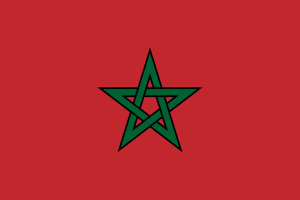
Flag of Morocco. ONE of the 'pillars' of Hercules.
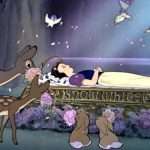
Siberia means ''sleeping land.''
Continued: ''Morocco's modern official Arabic name al-Mamlakah al-Maghribiyyah (المملكة المغربية) may best be translated as 'The Kingdom of the Western Place'.
Historically, the territory has been part of what the Muslim geographers referred to as al-Maghrib al-Aqṣā (المغرب الأقصى, 'the Farthest West [of the Islamic world]' designating roughly the area from Tiaret to the Atlantic) in contrast with neighbouring regions of al-Maghrib al-Awsaṭ (المغرب الأوسط, 'the Middle West': Tripoli to Béjaïa) and al-Maghrib al-Adná (المغرب الأدنى, 'the Nearest West': Alexandria to Tripoli).[21] Morocco has also been referred to politically by a variety of terms denoting the Sharifi heritage of the Alawi dynasty, such as al-Iyālah ash-Sharīfah (الإيالة الشريفة) or al-Imbarāṭūriyyah ash-Sharīfah (الإمبراطورية الشريفة), rendered in French as l'Empire chérifien and in English as the 'Sharifian Empire'.''
'153' to enlarge.
 Tiaret: The name means "Lioness" in the Berber language, a reference to the Barbary lions that lived in this region. Maghrebian place names like Oran (Wahran) which means "lion", and Souk Ahras which means "Market of Lions" have the same etymological source.[citation needed]
Tiaret: The name means "Lioness" in the Berber language, a reference to the Barbary lions that lived in this region. Maghrebian place names like Oran (Wahran) which means "lion", and Souk Ahras which means "Market of Lions" have the same etymological source.[citation needed]
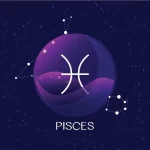
E-W?
The Lion (al-asad) of ancient Arabia was so massive that it roared from January to May, stretching across three seasons in its pre-dawn stellar settings, according to the rain star calendar of Qushayr. The cold season of winter (ash-shatawi) continues with the setting of the Two Forearms (adh-dhira’an) and then the Nose of the Lion (nathrat al-asad). The setting of the Forehead of the Lion (jabhat al-asad) marks the end of winter and the onset of the warm spring rains (ad-dafa’i). Some weeks later, the Two Shanks of the Lion (saqa ‘l-asad) set about 40 days apart, defining between them the rainy portion of the summer (as-sayf). All of this seasonal rain activity unfolds over the course of about four months, between the morning settings of the two brilliant pairs of stars (its Two Forearms and its Two Shanks) that roughly define the boundaries of the Lion.
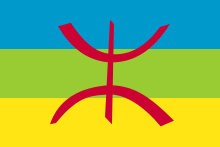
N-S?
''The word Morocco is derived from the name of the city of Marrakesh, which was its capital under the Almoravid dynasty, the Almohad Caliphate, and the Saadian dynasty.[24] The origin of the name Marrakesh is disputed,[25] but it most likely comes from the Berber phrase amur n Yakuš, where amur can have the meanings "part, lot, promise, protection"[26] and Yakuš (and its variants Yuš and Akuš) means "God".[27] The expression amur n Ṛebbi where Ṛebbi is another word for God (borrowed from Arabic رَبِّي (rabbī) "My Lord") means "divine protection".[28] The modern Berber name for Marrakesh is Mṛṛakc (in the Berber Latin script). In Turkish, Morocco is known as Fas, a name derived from its ancient capital of Fes. However, in other parts of the Islamic world, for example in Egyptian and Middle Eastern Arabic literature before the mid-20th century, the name commonly used to refer to Morocco was Murrakush.''

 Side note: ''It is called a 'king pair' if the batsman gets out for a golden duck (getting out on the first ball he faced) in both innings. The name originates from the two noughts together being thought to resemble a pair of spectacles; the longer form is occasionally used.''
Side note: ''It is called a 'king pair' if the batsman gets out for a golden duck (getting out on the first ball he faced) in both innings. The name originates from the two noughts together being thought to resemble a pair of spectacles; the longer form is occasionally used.''
''Binoculars comes from the Latin for having two eyes.''
''Clear vision''?
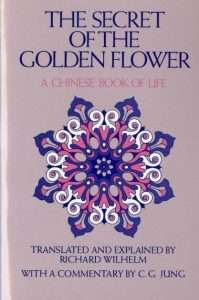
'Quintessence'? Philae?
Continued: 'Stone' in relation to a {pearl}. 'Pearl' in relation to {West}. Nova Scotia in relation to {scallops}. All as a means...?

SIDE NOTE: "The ancient custom of taking a cutting from the Holy thorn bush {St. John's Churchyard in Glastonbury} - by the eldest child - each year, from the LOCAL primary school - to be sent off to Buckingham Palace or to the Monarch who has that on their breakfast table {'dawn'?} as a symbol of them being the head of the Church of England....That 'Holy' bush that is reputed to flower twice a year; Easter and Xmas - that represents the Resurrection and Birth." { Luke Loader: 'Weird Britain: Somerset' / 14 mins / S1 EP5}. 'HEAD OF THE CORNER STONE'? REFRESHER: "Monarchy of the eye in relation to the democracy of the nose."
N.B. '153' pages to the book 'The Secret of the Golden Flower' / T. Cleary.
''Among the writings of the early Christians, Pope Clement I said that Paul was "Herald (of the Gospel of Christ) in the West", and that "he had gone to the extremity of the west".''
And/or: ''The old St. Pauls Cathedral dated from the 11th century. Took 153 years to complete...One of the largest buildings in Europe.'' ['Mirthy' /July 2022].
"The Golden Legend (Latin: Legenda aurea or Legenda sanctorum) is a collection of 153 hagiographies by Jacobus de Voragine that was widely read in Europe during the Late Middle Ages. More than a thousand manuscripts of the text have survived.[1] It was likely compiled around 1259–1266, although the text was added to over the centuries...The book sought to compile traditional lore about saints venerated at the time of its compilation, ordered according to their feast days. Jacobus de Voragine for the most part follows a template for each chapter: etymology of the saint's name, a narrative about their life, a list of miracles performed, and finally a list of citations where the information was found."
REFRESHER: “Again, the kingdom of heaven is like unto a net, that was cast into the sea, and gathered of every kind: which, when it was filled, they drew up on the beach; and they sat down, and gathered the good into vessels, but the bad they cast away.”
(.Matthew XIll 47-48).
'Thirteen'?
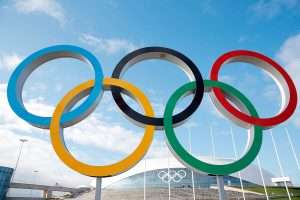
''In the official symbol of the Olympics; blue is the primary colour furthest to the left.'' ['Impossible' / S6 EP41]. West? N/W?
 Side note: "His name was openly spoken in the age corresponding with his realization in humanity. Having been the ''first of the Westerns'' he had to instruct men in the possibility of regeneration. Isis was the great redeemer in this mystery, but her part is as hard to understand as that of Osiris..." ['Her-Bak: Egyptian Initiate']. Question. Why West?
Side note: "His name was openly spoken in the age corresponding with his realization in humanity. Having been the ''first of the Westerns'' he had to instruct men in the possibility of regeneration. Isis was the great redeemer in this mystery, but her part is as hard to understand as that of Osiris..." ['Her-Bak: Egyptian Initiate']. Question. Why West?
Any '153'?
Side note: "The Book of Nut (original title: The Fundamentals of the Course of the Stars) is a collection of ancient Egyptian astronomical texts, also covering various mythological subjects. These texts focus on the cycles of the stars of the decans, the movements of the moon, the sun, and the planets, on the sundials, and related matters. This title was given to the book because of the depiction of the sky goddess Nut arching over the earth in some copies of the text. She is supported by the god of the air Shu. Texts in the Book of Nut include material from different periods of Egyptian history.

The inscription of Seti I with 36 decans portrayed. 'Thirteenth' = female aspect?
The original name of the book, The Fundamentals of the Course of the Stars, was discovered by Alexandra von Lieven in one of the manuscript fragments and published in 2007.[1] One of the major themes of the Book of Nut is the concept of sunrise as the mythological rebirth. There are nine different copies of the book and they have various dates. Three copies are found on monuments and six more are found in the papyri of the second century AD found in the temple library in ancient Tebtunis, a town in the southern Faiyum Oasis......
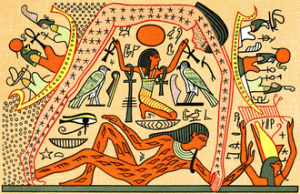
Goddess Nut, supported by the god of the air Shu; the earth god Geb is below them. Objective / Subjective. Inner-Outer - which and why?
These include texts both in hieratic and demotic; some parts are written in hieroglyphs as well. Three texts of the Book of Nut are preserved on monuments: the tomb of Ramses IV, The Cenotaph of Seti I at the Osireion in Abydos, and the tomb of the noblewoman Mutirdis (TT410) of the 26th Dynasty {'twentysix'}. These monumental copies are written in hieroglyphs."
Continued: ''So, not only does the 153 big fishes refer to the 153000 constructors of the first temple, it also means "a very large unknown number". This is also coherent with the first observation of one of the apostles when looking inside the net: there was a multitude of fishes. But why the FIRST temple of Solomon?''
RESIDENT ALIENS EMPLOYED IN THE WORK
(2 Chronicles vv.17-18)

Any gentiles?

Carrying poles. From 'abroad'?
''Gentiles from outside Israel were willing to help in the building of Israel's temple, but there were also Gentiles residing in the land. They were not left unemployed, but employed by Solomon in the work of the temple. In numbering these, Solomon found a total of 153,000. This may seem a large number for whom to find work, and specially when it involved the erection of only two buildings. But the size and the elaborate details of these buildings required such numbers. We may think of construction methods today not requiring such numbers, but the labour at that time was all hand labour, which is much slower and more arduous work than that of present-day construction. 70,000 of these Gentiles were to bear burdens, which would include the carrying of lumber from Joppa to Jerusalem and the carrying of stone from the quarries to the site of the temple and Solomon's house. 80,000 were employed as stone-cutters in the mountains. Of course, these worked in shifts. The remaining 3,600 were used as supervisors of the work (v.18).''
'GogMagog' / T. Lethbridge.
Question. Baktum = 144000 days. The ''foundation'' of something?
''All 'children' were bequeathed eternal life from the frog goddess Heket. The ancient Egyptian hieroglyph for 100,000 was the tadpole turning into a frog...." [Page 60 'The Union of Isis and Thoth' / N. Ellis and N. Scully].
Question 2. Which pharaoh was identified with the ''west'' ?

How many millions do you need - to convince the girls to come out and play? Team players? Are they ever seen at any charity functions? No talent?
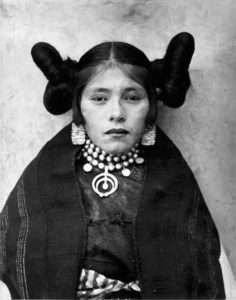
Pearls.
''Truth the ancient Egyptians said, appeared in multiples, the way the desert was composed of a million grains of sand. The mummy like one of the sacred onions buried with it, was a reminder that the eternal soul passed through layers of the self, body after body, manifestation after manifestation.'' [Page 140 'Dreams of Isis'].
And/or: ''Onion is the Latin for large pearl.'' ['The Chase' / 2018].
"The church of Mary Magdalene on the Mount of Olives. Named after the Apostle to the Apostles - Mary Magdalene - the first one who saw the risen Christ. It can be seen from the city of Jerusalem. It has seven onion shaped golden domes...The seven domes for the seven gifts of the Holy Spirit. A Russian Orthodox Church. Also part {adjacent?} of the Monastery of Russian Sisters who are praying here all the time where Jesus himself prayed. Its named after the Russian Tzar Alexander III mother - Maria." [Day thirtyseven: We Dare to Say Our Father: Pilgrimage of Prayer: Church of all Nations: Lent 2024].
And/or: The church was built in 1888 by Tsar Alexander III and his brothers to honour their mother, Empress Maria Alexandrovna of Russia.[1] It was constructed to David Grimm's design in the traditional tented roof style popular in 16th- and 17th-century Russia, and includes seven distinctive, gilded onion domes.

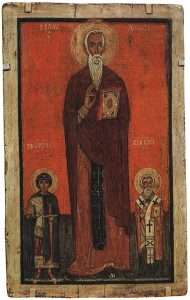
From 1329, Moscow's first stone bell tower stood on this site, affiliated with the Church of St. Ivan of the Ladder-under-the Bell, hence the name "Ivan" in the title. This church was erected by Grand Duke Ivan Kalita, and was one of the first to be built in Moscow out of stone, rather than wood.
A tented roof (also known as a pavilion roof) is a type of polygonal hipped roof with steeply pitched slopes rising to a peak.[1] Tented roofs, a hallmark of medieval religious architecture, were widely used to cover churches with steep, conical roof structures.
In the Queen Anne Victorian style, it took the form of a wooden turret with an octagonal base with steeply pitched slopes rising to a peak, usually topped with a finial.[1][2] A distinctive local adaptation of this roof style was widely used in 16th- and 17th-century Russian architecture for churches, although there are examples of this style also in other parts of Europe. It took the form of a polygonal spire but differed in purpose in that it was typically used to roof the main internal space of a church, rather than as an auxiliary structure. The same architectural form is also applied to bell towers.
The term "tent roof" may also be applied in modern architecture to membrane and thin shell structures comprising roofs of modern materials and actual tents.
Side note: "Meaning 'tent' in Farsi, the chador is a full length outer garment worn in the Middle East." {'The Chase'}.
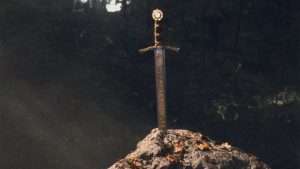 Continued: An onion dome is a dome whose shape resembles an onion.[1] Such domes are often larger in diameter than the tholobate (drum) upon which they sit, and their height usually exceeds their width. They taper smoothly upwards to a point.
Continued: An onion dome is a dome whose shape resembles an onion.[1] Such domes are often larger in diameter than the tholobate (drum) upon which they sit, and their height usually exceeds their width. They taper smoothly upwards to a point.
Side note: John Climacus (Greek: Ἰωάννης τῆς Κλίμακος; Latin: Ioannes Climacus; Arabic: يوحنا السلمي, romanized: Yuḥana al-Sêlmi), also known as John of the Ladder, John Scholasticus and John Sinaites, was a 6th–7th-century Christian monk at the monastery on Mount Sinai.[1] He is revered as a saint by the Eastern Orthodox Church and Roman Catholic Church.
There is almost no information about John's life. There is in existence an ancient vita (life) of the saint by a monk named Daniel of Raithu monastery. Daniel, though claiming to be a contemporary, admits to no knowledge of John's origins—any detail on John's birth is the result of much later speculation, and is confined to references in the Menologion.
 Continued: "It is a typical feature of churches belonging to the Russian Orthodox church. There are similar buildings in other Eastern European countries, and occasionally in Western Europe: Bavaria (Germany), Austria, and northeastern Italy. Buildings with onion domes are also found in the Oriental regions of Central and South Asia, and the Middle East. However, old buildings outside Russia usually lack the construction typical of the Russian onion design.
Continued: "It is a typical feature of churches belonging to the Russian Orthodox church. There are similar buildings in other Eastern European countries, and occasionally in Western Europe: Bavaria (Germany), Austria, and northeastern Italy. Buildings with onion domes are also found in the Oriental regions of Central and South Asia, and the Middle East. However, old buildings outside Russia usually lack the construction typical of the Russian onion design.

"Untouched by fire"? therefore 'boiled' link?
Other types of Eastern Orthodox cupolas include helmet domes (for example, those of the Dormition Cathedral in Vladimir), Ukrainian pear domes (St Sophia Cathedral in Kyiv), and Baroque bud domes (St Andrew's Church in Kyiv) or an onion-helmet mixture like the St Sophia Cathedral in Novgorod. According to Wolfgang Born, the onion dome has its origin in Syria, where some Umayyad Caliphate-era mosaics show buildings with bulbous domes.[2][3] An early prototype of onion dome also appeared in Chehel Dokhter, a mid-11th century Seljuk architecture in Damghan region of Iran. It is not completely clear when and why onion domes became a typical feature of Russian architecture. The curved onion style appeared in Russian architecture as early as the 13th century.[5] But still several theories exist that the Russian onion shape was influenced by countries from the Orient, like India and Persia, with whom Russia has had lengthy cultural exchange. Byzantine churches and architecture of Kievan Rus were characterized by broader, flatter domes without a special framework erected above the drum. In contrast to this ancient form, each drum of a Russian church is surmounted by a special structure of metal or timber, which is lined with sheet iron or tiles, while the onion architecture is mostly very curved. Russian architecture used the dome shape not only for churches but also for other buildings."

Snake goddess at Knossos. Any onions?
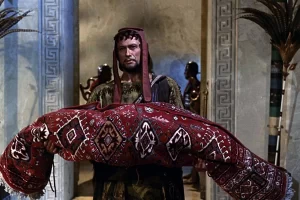 A work in progress: ''Scorpion stings and snake bites would have been a common hazard in ancient Egypt and would have required prompt attention. The Brooklyn Papyrus is concerned exclusively with such bites and stings and includes local measures such as the 'knife treatment', which probably involved incising the wound to release tissue fluid and limit the absorption of the venom.....In addition almost 100 prescriptions of herbal origin. Onion is the commonest ingredient of these remedies, probably because of its ability to repel snakes. The sulfonic acid present in onions - the same chemical that causes tears when onions are chopped - has a deterrent effect on snakes.''
A work in progress: ''Scorpion stings and snake bites would have been a common hazard in ancient Egypt and would have required prompt attention. The Brooklyn Papyrus is concerned exclusively with such bites and stings and includes local measures such as the 'knife treatment', which probably involved incising the wound to release tissue fluid and limit the absorption of the venom.....In addition almost 100 prescriptions of herbal origin. Onion is the commonest ingredient of these remedies, probably because of its ability to repel snakes. The sulfonic acid present in onions - the same chemical that causes tears when onions are chopped - has a deterrent effect on snakes.''

Swollen?
The fumes of an onion play the role of a blood-clotting agent and can stop your nose from bleeding. Additionally, it contains vitamin C and bio-flavonoids, which strengthen the capillaries, making them less susceptible to bleeding. After cutting an onion into two, gently place one half under your nose and inhale the fumes. Do this for a few minutes.
"An onion (Allium cepa L., from Latin cepa meaning "onion"), also known as the bulb onion or common onion, is a vegetable that is the most widely cultivated species of the genus Allium. The shallot is a botanical variety of the onion which was classified as a separate species until 2011.[2][3]: 21 Its close relatives include garlic, scallion, leek, and chive.[4]
This genus also contains several other species variously referred to as onions and cultivated for food, such as the Japanese bunching onion Allium fistulosum, the tree onion Allium × proliferum, and the Canada onion Allium canadense. The name wild onion is applied to a number of Allium species, but A. cepa is exclusively known from cultivation. Its ancestral wild original form is not known, although escapes from cultivation have become established in some regions.[5] The onion is most frequently a biennial or a perennial plant, but is usually treated as an annual and harvested in its first growing season.
The onion plant has a fan of hollow, bluish-green leaves, and its bulb at the base of the plant begins to swell when a certain day-length is reached."

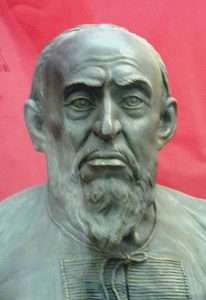 Practical example: ''The Cathedral of Vasily the Blessed (Russian: Собо́р Васи́лия Блаже́нного, tr. Sobór Vasíliya Blazhénnogo), commonly known as Saint Basil's Cathedral, is an Orthodox church in Red Square of Moscow, and is one of the most popular cultural symbols of Russia. The building, now a museum, is officially known as the Cathedral of the Intercession of the Most Holy Theotokos on the Moat, or Pokrovsky Cathedral.[5] It was built from 1555 to 1561 on orders from Ivan the Terrible and commemorates the capture of Kazan and Astrakhan. It was the city's tallest building until the completion of the Ivan the Great Bell Tower in 1600.
Practical example: ''The Cathedral of Vasily the Blessed (Russian: Собо́р Васи́лия Блаже́нного, tr. Sobór Vasíliya Blazhénnogo), commonly known as Saint Basil's Cathedral, is an Orthodox church in Red Square of Moscow, and is one of the most popular cultural symbols of Russia. The building, now a museum, is officially known as the Cathedral of the Intercession of the Most Holy Theotokos on the Moat, or Pokrovsky Cathedral.[5] It was built from 1555 to 1561 on orders from Ivan the Terrible and commemorates the capture of Kazan and Astrakhan. It was the city's tallest building until the completion of the Ivan the Great Bell Tower in 1600.
Whats the remedy?
''Prior to the eighteenth century, the Russian Orthodox Church did not assign any particular symbolism to the exterior shape of a church. Nevertheless, onion domes are popularly believed to symbolise burning candles.''
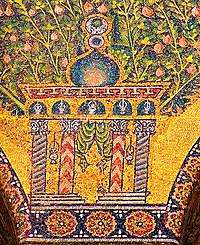
Swelling?
 Supposedly,[original research?] Russian icons painted before the Mongol invasion of Rus' of 1237-1242 do not feature churches with onion domes. Two highly venerated pre-Mongol churches that have been rebuilt—the Assumption Cathedral and the Cathedral of Saint Demetrius, both in Vladimir—display golden helmet domes. Restoration work on several other ancient churches has revealed some fragments of former helmet-like domes below newer onion cupolas.[citation needed] It has been posited[by whom?] that onion domes first appeared in Russia during the reign of Ivan the Terrible (r. 1533–1584). The domes of Saint Basil's Cathedral have not been altered since the reign of Ivan's son Fyodor I (r. 1584–1598), indicating the presence of onion domes in sixteenth-century Russia.[citation needed]
Supposedly,[original research?] Russian icons painted before the Mongol invasion of Rus' of 1237-1242 do not feature churches with onion domes. Two highly venerated pre-Mongol churches that have been rebuilt—the Assumption Cathedral and the Cathedral of Saint Demetrius, both in Vladimir—display golden helmet domes. Restoration work on several other ancient churches has revealed some fragments of former helmet-like domes below newer onion cupolas.[citation needed] It has been posited[by whom?] that onion domes first appeared in Russia during the reign of Ivan the Terrible (r. 1533–1584). The domes of Saint Basil's Cathedral have not been altered since the reign of Ivan's son Fyodor I (r. 1584–1598), indicating the presence of onion domes in sixteenth-century Russia.[citation needed]
"If you are tormented by nosebleeds, red onions can stop the bleeding. You can also smell onions for healing nose bleeds. It protects the heart. Onions can help protect the heart from coronary disease. Onions can also control high blood pressure."

Ivan died of a nose bleed. Heights?
Ivan Vasilyevich was the first son of Vasili III by his second wife, Elena Glinskaya. Vasili's mother, Sophia Palaiologina, was an Eastern Roman princess and a member of the Byzantine Palaiologos family.  She was a daughter of Thomas Palaiologos, the younger brother of the last Byzantine Emperor, Constantine XI Palaiologos (r. 1449–1453).[20] Elena's mother was a Serbian princess and her father's family, the Glinski clan (nobles based in the Grand Duchy of Lithuania), claimed descent both from Orthodox Hungarian nobles and the Mongol ruler Mamai (1335–1380).[21][22][23][24] Born on 25 {twentyfive} August, he received the name Ivan in honor of St. John the Baptist, the day of whose beheading falls on 29 August.[25] In some texts of that era, it is also occasionally mentioned with the names Titus and Smaragd, in accordance with the tradition of polyonyms among the Rurikids.
She was a daughter of Thomas Palaiologos, the younger brother of the last Byzantine Emperor, Constantine XI Palaiologos (r. 1449–1453).[20] Elena's mother was a Serbian princess and her father's family, the Glinski clan (nobles based in the Grand Duchy of Lithuania), claimed descent both from Orthodox Hungarian nobles and the Mongol ruler Mamai (1335–1380).[21][22][23][24] Born on 25 {twentyfive} August, he received the name Ivan in honor of St. John the Baptist, the day of whose beheading falls on 29 August.[25] In some texts of that era, it is also occasionally mentioned with the names Titus and Smaragd, in accordance with the tradition of polyonyms among the Rurikids.

Going west?
Side note: ''Osiris cult was established at Abydos, where he was called Lord of death or Lord of the Westerners, meaning those who had ''gone west'' into death's sunset land. He was incarnate in a succession of sacred kings who seem to have served as sacrificial victims. Their bodies were divided up {'14' or '16'?} and distributed to different parts of the country....Like the head of Orpheus on Lesbos, the head of Osiris was preserved in the temple at Abydos which served as an oracle: information/knowledge on the after-world. The shrine had a sacred well called Pega or Peq, the original home of the Pega nymphs who guarded the oracular well of Pirene in Corinth...'' [Page 751 Same book].
'Glastonbury'.
Pirene or Peirene (Greek: Πειρήνη) is the name of a fountain or spring in Greek mythology, physically located in Corinth.[1] It was said to be a favored watering-hole of Pegasus, sacred to the Muses. Poets would travel there to drink and receive inspiration.
In the 2nd century AD, the traveler Pausanias describes Pirene as follows:

'153'?

Hercules: stretching from just west of the head of Ophiuchus to Draco, its eastern border on the Milky Way, is one of the oldest sky figures.
On leaving the market-place along the road to Lechaeum you come to a gateway, on which are two gilded chariots, one carrying Phaethon the son of Helius, the other Helius himself. A little farther away from the gateway, on the right as you go in, is a bronze Heracles. After this is the entrance to the water of Peirene. The legend about Peirene is that she was a woman who became a spring because of her tears shed in lamentation for her son Cenchrias, who was unintentionally killed by Artemis. The spring is ornamented with white marble, and there have been made chambers like caves, out of which the water flows into an open-air well. It is pleasant to drink, and they say that the Corinthian bronze, when red-hot, is tempered by this water, since bronze […] the Corinthians have not. Moreover near Peirene are an image and a sacred enclosure of Apollo; in the latter is a painting of the exploit of Odysseus against the suitors.[2]
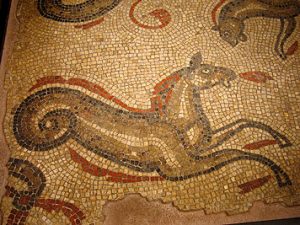
Aquae Sulis (Latin for Waters of Sulis) was a small town in the Roman province of Britannia. Today it is the English city of Bath, Somerset. The Antonine Itinerary register of Roman roads lists the town as Aquis Sulis.[1] Ptolemy records the town as Aquae calidae (warm waters) in his 2nd-century work Geographia, where it is listed as one of the cities of the Belgae.[2]
 Another story says that the fountain was created by the hoof of Pegasus striking the ground.[3] The legend Pausanias cites is far more widespread.
Another story says that the fountain was created by the hoof of Pegasus striking the ground.[3] The legend Pausanias cites is far more widespread.
The Upper Pirene spring, with its own etiological myth, is located on Acrocorinth, the acropolis of Corinth.
Continued: N.B. Understanding ''west'' in relation to ''lord'' {and/or 'king'} explains the chose of location for those 'blue stones' at Stonehenge. Question. 'IN' or 'Of' the Horizon?
Side note ''newly revealed'' in relation to ''16''. Enlarged elsewhere, i.e., what does ''16'' represent?
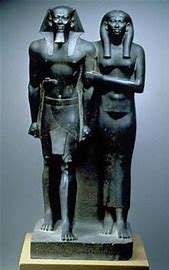
Best foot forward? 'Octave' link?
''Sixteen is a number of perfect measure and wholeness. In the Roman system 1 foot, pes, was formed by adding 4 palms, and each palm or breadth of the hand measured 4 fingers. Thus the foot was 16 fingers.....In many languages there is a break after 16, as there is after 4.'' [Page 216 'Mystery of Numbers' / A. Schimmel].
1st step? {forward or backward?}.
''Toehold''?
How many steps that lead down into the tomb of Tut?

Ancient Iberian head-gear.
A work in progress: "The Leaning Tower of Zaragoza, sometimes called by its Spanish name, Torre Nueva (new tower), was a Mudéjar leaning tower located in current Plaza de San Felipe, in Zaragoza (in Aragon, Spain).

Water feature for headgear?
Over the years, the tower became an icon for the city. It was also the highest Mudéjar-style tower ever built (80 m (260 ft)) in 1504. It had a diameter of 11.5 m (38 ft) and a ground plan in the shape of a 16-pointed star.
Built in the 16th century as a clock tower, it was built in brick in Mudéjar style by master builders Christians Gabriel Gombao and Antón Sariñena, Muslims Ismael Allabar and Monferriz, and Jew Juce Galí.[1] Shortly after being built, its inclination could be noted, although it was said that there was no danger to its stability. In 1892, Zaragoza's city council decided to demolish the tower, justifying the decision with the inclination and probable ruin. The decision was opposed by many intellectuals and part of the population. After the tower's demolition, citizens bought bricks as souvenirs."
N.B. Dome of the Rock = 16 windows / 4 doors {4x4?}. Coincidence or a meaningful one?
''Each ring in the 16 prints symbolizes one of the five continents competing at the Olympics: Africa (yellow), the Americas (red), Asia (green), Europe (black), and Oceania (blue).''

Something 'new'?

Hopi people are descended from the Ancient “Pueblo Peoples”, known for constructing America’s first pre-historic high rise apartment complexes. 'Stack'?
Side note: ''The Maria Skłodowska-Curie Museum (Polish: Muzeum Marii Skłodowskiej-Curie) is a museum in Warsaw, Poland, devoted to the life and work of Polish double Nobel laureate Maria Skłodowska-Curie (1867–1934), who discovered the chemical elements polonium and radium.
The Maria Skłodowska-Curie Museum is a cultural institution of the city of Warsaw, co-organized with the Polish Chemical Society. It carries on educational and cultural programs related to Maria Skłodowska-Curie and her family. [1]
The Museum stands at 16 Freta Street (ulica Freta 16) in Warsaw's "New Town" district (dating from the 15th century), and is housed in the 18th-century tenement house in which Maria Skłodowska was born.''
And/or: "This eleventh volume of the 'Notebooks of Paul Brunton' contains para's drawn only from category sixteen of the original twentyeight topics arranged in the ''ideas'' notebooks reserved for posthumous publication." Synchronistic or something else?
 "...but if you are armed with the 'wand' of intuition, the 'cup' of sympathy, the 'sword' of reason and the 'pentacle' of valor, you will find there {the legends say} the Medicine of Metals, the Elixir of Life, the Philosophers Stone, True Wisdom and perfect happiness." [Extract from the book 'The Cosmic Trigger' by R. Wilson. Emphasis, this readers - with the exception of parenthesis].
"...but if you are armed with the 'wand' of intuition, the 'cup' of sympathy, the 'sword' of reason and the 'pentacle' of valor, you will find there {the legends say} the Medicine of Metals, the Elixir of Life, the Philosophers Stone, True Wisdom and perfect happiness." [Extract from the book 'The Cosmic Trigger' by R. Wilson. Emphasis, this readers - with the exception of parenthesis].
'Mettle of the Mind' ?

The impressive look is called the “squash blossom whorl”, a traditional hairstyle for unmarried girls. At the onset of puberty, historically young girls went through challenging initiation ceremonies, marked by a day of grinding corn at the paternal grandmother’s house. She would receive a new name and assume the squash blossom hairstyle, the sign of marriageability and fertility.
''So Simon Peter went aboard and hauled the net ashore, full of large fish, a hundred and fifty three of them {'153'}, and although there were so many, the net was not torn." [John 21:11].
REFRESHER: “Again, the kingdom of heaven is like unto a net, that was cast into the sea, and gathered of every kind: which, when it was filled, they drew up on the beach; and they sat down, and gathered the good into vessels, but the bad they cast away.”
(.Matthew XIll 47-48)
"...No more is it true that the mystical impulse from the end of the 13th and into the 17th century was purely and simply a reaction against the 'dry intellectualism' of scholasticism. No the flowering of mysticism during this epoch was the fruit and result of scholasticism, prefigured in the spiritual biography of St. Thomas Aquinas himself...The believing thinker thus became a 'seeing mystic'. And this transformation did not take place in spite of his work of scholastic thought, but rather thanks to it - as its fruit and crowning glory." [Extract from the book by Tomber 'Letter 19' ]. Represented - as in the Greek case - with the word ''Apollo''.
Morning Glory 'Lily' - or would that be lotus - as a means....?
'The Quantum and the Lotus' / M. Ricard and T. X. Thuan.


Qubbet el-Hawa or "Dome of the Wind" is a site on the western bank of the Nile, opposite Aswan, that serves as the resting place of ancient nobles and priests from the Old and Middle Kingdoms of ancient Egypt.
Elephantine (/ˌɛlɪfænˈtaɪniː, -ˈtiː-/ EL-if-an-TY-nee, -TEE-;[2] Ancient Egyptian: 𓍋𓃀𓅱𓃰, romanized: ꜣbw; Egyptian Arabic: زيرة الفنتين; Greek: Ἐλεφαντίνη Elephantíne; Coptic: (Ⲉ)ⲓⲏⲃ (e)iēb, Coptic pronunciation: [jæb]) is an island on the Nile, forming part of the city of Aswan in Upper Egypt. The archaeological digs on the island became a World Heritage Site in 1979, along with other examples of Upper Egyptian architecture, as part of the "Nubian Monuments from Abu Simbel to Philae" (despite Elephantine being neither Nubian, nor between Abu Simbel and Philae)....
Known to the ancient Egyptians as ꜣbw "Elephant" (Middle Egyptian: /ˈʀuːbaw/ → Medio-Late Egyptian: /ˈjuːbəʔ/ → Coptic: (Ⲉ)ⲓⲏⲃ /ˈjeβ/, preserved in its Hebrew name, יֵב Yēḇ), the island of Elephantine stood at the border between Egypt and Nubia. Trade routes would stop on Elephantine to deliver ivory, a precious good in Ancient Egypt.[4] It was an excellent defensive site for a city and its location made it a natural cargo transfer point for river trade. This border is near the Tropic of Cancer, the most northerly latitude at which the sun can appear directly overhead at noon and from which it appears to reverse direction or "turn back" at the solstices.
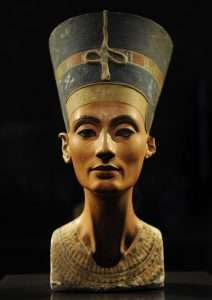
'Stamp of the feminine'? Real or symbolic?

Famine Stela.
A working example: ''A flower war or flowery war (Nahuatl languages: xōchiyāōyōtl, Spanish: guerra florida) was a ritual war fought intermittently between the Aztec Triple Alliance and its enemies from the "mid-1450s to the arrival of the Spaniards in 1519."[1] Enemies included the city-states of Tlaxcala, Huejotzingo, and Cholula in the Tlaxcala-Pueblan Valley in central Mexico.[1] In these wars, participants would fight according to a set of conventions.[2]
During the Spanish conquest of the Aztec Empire, Tlaxcala allied with the Spaniards against the Aztecs, being eager to see their longtime flower war enemies overthrown
Texcocan nobleman Ixtlilxochitl gives the "fullest early statement concerning the origin as well as the initial rationale" of the flower war.[4] From 1450 to 1454, the Aztecs had suffered from crop failure and severe drought; this led to famine and many deaths in the central Mexican highlands.[4] Ixtlilxochitl reports that the flower war began "as a response" to the famine.''
''Clover'' to enlarge.

A 'lonely' place?
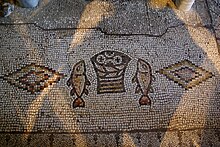
Lozenge.
A Work in Progress: ''Tabgha on the shores of the Sea of Galilee {West}....A mosaic discovered in the 1930's of 'two fish in a basket, with four loaves of bread' {i.e., six;?}- right in front of a rock - which a church was built around {i.e., with that specific 'image' in mind}- in the early days of Christianity. The ''multiplication'' of which is very important....John and Mark chapter SIX speaks about the same thing: 'Come to a lonely place and rest awhile' {'Foremost of the Westerners'?}. i.e., Capernaum is where the ''multiplication'' actually took place near the 'bay' on the edge/point {'peninsula'?} of same. ['Pilgrimage of Grace' / Day nine. March 2022 / 'I Am The Bread Come Down From Heaven' / Magdala].
'Food' of the gods.
 Side note: "Hearse’s History and Antiquities of Glastonbury (1722) describes a Mr. Eyston being given information on the Thorn by a local innkeeper: "I was told by the innkeeper where I set up my horses, who rents a considerable part of the enclosure of the late dissolved abbey, that St. Joseph of Arimathea landed not far from the town, at a place where there was an oak planted in memory of his landing, called the Oak of Avalon; that he and his companions marched thence to a hill near a mile on the south side of the town, and there being weary, rested themselves; which gave the hill the name of Wearyall-Hill; and Joseph on arrival, planted his staff in the ground and it immediately blossomed."
Side note: "Hearse’s History and Antiquities of Glastonbury (1722) describes a Mr. Eyston being given information on the Thorn by a local innkeeper: "I was told by the innkeeper where I set up my horses, who rents a considerable part of the enclosure of the late dissolved abbey, that St. Joseph of Arimathea landed not far from the town, at a place where there was an oak planted in memory of his landing, called the Oak of Avalon; that he and his companions marched thence to a hill near a mile on the south side of the town, and there being weary, rested themselves; which gave the hill the name of Wearyall-Hill; and Joseph on arrival, planted his staff in the ground and it immediately blossomed."
'Stick'?
"Glastonbury was once an inland isle, surrounded by water and only connected to the mainland by a narrow strip of land. Visitors to the Isle could sail up the tidal river Brue..."
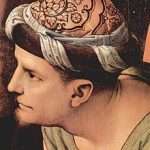
Goaty? Question. What comes next within that MIND SET?
Continued: Baptism font outside in the form of a flower petal ['three'?} as opposed to the cross form one {'straight'} at Avdat {East}. [Day 14 'Living Water: Ancient Mikvaot and Gardens of Living Water / Magdala / Pilgrimage of Grace / Lent 2022].
And/or: Two fountains - with 'venetian' mosaics - {tessellated?} in the form of 153 fish {pointing upstream/north} at Magdala fed by spring water from Mount Arbel. ''Fish eye'' pointed out by K. Nichols in relation to: ''One hundred and fiftythree fish in a net - referring to Revelations John 21{twentyone}. There were 153 nations at the time.'' [Same]. And/or : Meat/rightside of boat that the 'net' was thrown over/burning coals link/quote to same {i.e.,153}. John 21.
A periodic tiling has a repeating pattern. Some special kinds include regular tilings with regular polygonal tiles all of the same shape, and semiregular tilings with regular tiles of more than one shape and with every corner identically arranged. The patterns formed by periodic tilings can be categorized into seventeen wallpaper groups. A tiling that lacks a repeating pattern is called "non-periodic". An aperiodic tiling uses a small set of tile shapes that cannot form a repeating pattern (an aperiodic set of prototiles). A tessellation of space, also known as a space filling or honeycomb, can be defined in the geometry of higher dimensions.

Twentysix links in a figure of 'eight'.
Venice (/ˈvɛnɪs/ VEN-iss, Italian: Venezia, Italian: [veˈnɛttsja] ⓘ)[3] is a city in northeastern Italy and the capital of the Veneto region. It is built on a group of 126 islands that are separated by expanses of open water and by canals; portions of the city are linked by 472 bridges.[4] The islands are in the shallow Venetian Lagoon, an enclosed bay lying between the mouths of the Po and the Piave rivers (more exactly between the Brenta and the Sile)....Venice has been known as "La Dominante", "La Serenissima", "Queen of the Adriatic", "City of Water", "City of Masks", "City of Bridges", "The Floating City", and "City of Canals". The lagoon and the historic parts of the city within the lagoon were inscribed as a UNESCO World Heritage Site in 1987, covering an area of 70,176.4 hectares (173,410 acres).[14] In view of the fact that Venice and its lagoon are under constant threat in terms of their ecology and the safeguarding of the cultural heritage, Venice's UNESCO listing has been under constant examination by UNESCO...

Something 'new'.
Although no surviving historical records deal directly with the founding or building of Venice,[24] tradition and the available evidence have led several historians to agree that the original population of Venice consisted of refugees—from nearby Roman cities such as Padua, Aquileia, Treviso, Altino, and Concordia (modern Portogruaro), as well as from the undefended countryside—who were fleeing successive waves of Germanic and Hun invasions.[25] This is further supported by the documentation on the so-called "apostolic families", the twelve founding families of Venice who elected the first doge, who in most cases trace their lineage back to Roman families.[26][27] Some late Roman sources reveal the existence of fishermen, on the islands in the original marshy lagoons, who were referred to as incolae lacunae ("lagoon dwellers"). The traditional founding is identified with the dedication of the first church, that of San Giacomo on the islet of Rialto (Rivoalto, "High Shore")—said to have taken place at the stroke of noon on twentyfive March 421 (the Feast of the Annunciation).
N.B. Glass bead - "possibly Venetian" found on Plot 'five' on Oak Island. [S11 EP10].
5x5 = 25.
''Trafalgar Square is home to two examples of fountains.'' ['The Chase'].
''The square has been used for community gatherings and political demonstrations, including Bloody Sunday in 1887, the culmination of the first Aldermaston March, anti-war protests, and campaigns against climate change. A Christmas tree has been donated to the square by Norway since 1947 and is erected for twelve days before and after Christmas Day. The square is a centre of annual celebrations on New Year's Eve. It was well known for its feral pigeons until their removal in the early 21st century.''
Side note: The ''Chapel Vault'' on Oak Island buried in ground at least onehundred and fifty feet.'' ['Curse of Oak Island' / 16.3.22].

'Lower' underlying 'higher'. Above the ''navel''?. For Alchemy / Hebrew equivalent see pictures on Part 3. Question. Agree/disagree. Notice ladder in 'lower' half. A 'wooden' one. AND/OR: “Again, the kingdom of heaven is like unto a net, that was cast into the sea, and gathered of every kind: which, when it was filled, they drew up on the beach; and they sat down, and gathered the good into vessels, but the bad they cast away.”
(.Matthew XIll 47-48)

"Commagene (Greek: Κομμαγηνή) was an ancient Greco-Iranian kingdom ruled by a Hellenized branch of the Iranian Orontid dynasty that had ruled over Armenia. The kingdom was located in and around the ancient city of Samosata, which served as its capital. The Iron Age name of Samosata, Kummuh, probably gives its name to Commagene. Commagene has been characterized as a "buffer state" between Armenia, Parthia, Syria, and Rome; culturally, it was correspondingly mixed. The kings of the Kingdom of Commagene claimed descent from Orontes with Darius I of Persia as their ancestor, by his marriage to Rhodogune, daughter of Artaxerxes II who had a family descent from king Darius I. The territory of Commagene corresponded roughly to the modern Turkish provinces of Adıyaman and northern Antep."
And/or..."It seems unlikely that anyone in our day would be able to explain the deeper meaning of 17, and yet this number was quite important in the ancient Near East. The local god of Urartu, the area around Mount Ararat, received a seventeen fold sacrifice, and perhaps 17 spread out from there into adjacent countries. In the Bible it is connected to the flood, which began on the seventeenth day of the 2nd month and lasted till the seventeenth day of the 7th month {'GAP' of five?}. At that point, Noah had reached Mount Ararat...The traditional 'magic' square around the 'five' produces 17 in the lower left corner [S/W? - this readers input] and 28 [the typical Islamic moon number] in the remaining numbers...It is also the number of the words, in the call to prayer...The subsequent Islamic tradition, especially among the Shiites, discovered even more distinctive qualities of 17. The sum total of all the rak'at {the cycles of prayer movements in the five daily prayers} amounts to 17. Some sufis imagined that the greatest name of god consisted of 17 letters...In Christian tradition, the number appears, if at all, as a combination of the 10 commandments with the 7 gifts {10+7} of the Holy Spirit, described by St. Augustine as a 'mirabile sacramentum'. Seventeen then forms the basis for the speculations about the number 153. It also seems likely that the combination of 'lex et gratia', i.e.,Law and Grace, as found in the 17 underlies the whole structure of the magnificent Golden Evangeliar made for King Heinrich III in the eleventh century, as Rathofer as shown...In classical antiquity 17 appears in connection with warfare and heroism...Popular Turkish legends, such as the tales of Abu Muslim or Malik Danishmand, mentions 17 wars; and often 17 hero's are slain, or the leading hero receives 17 'wounds'..." [A. Schimmel book].
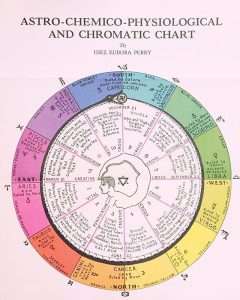
'16' in relation to a ''wedding'' ? '17' in relation to Top/down {'Tau' cross?}- BOTH - as a means to the 'beginning' of a learning curve. Start point of. Further clues elsewhere.
 Working examples: ''It seems Nerfertiti was alive and was performing her normal consort's duties.....Akhenaten's last recorded date comes from a wine jar labelled 'year 17, second month of the inundation'....'' [Pagec176 'Nefertit's Face' / J. Tyldesley].
Working examples: ''It seems Nerfertiti was alive and was performing her normal consort's duties.....Akhenaten's last recorded date comes from a wine jar labelled 'year 17, second month of the inundation'....'' [Pagec176 'Nefertit's Face' / J. Tyldesley].
And/or: You can either practise this Work or not. But you must all understand that if you practise this Work, now, at this moment (not tomorrow) you are making effort beyond mechanical effort. The point of the Work is to transform daily life. So it is said that if you merely listen to this Work and do not practise it, nothing will change in you. Suppose, for example, that you hear many times that you must observe your different ‘l’s and try not to identify with some of them? Well, of course, you can hear this day after day, and year after year, and say that you know all about that, and why is nothing else said. However, you have heard that the Work tells you here to practise a certain definite thing on yourself—now, at this moment—yes, at this very moment.

The Rump is part of the Arabian megaconstellation of the Lion (al-asad). It lies well south of the rest of the Lion, so it may have been a later addition to the figure.
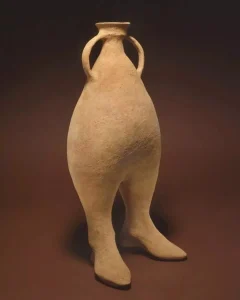
The human contours of the 3,000-year-old ceramic hollow vessel from northern Iran equally suggest male and female. Short, sturdy legs and large feet allow the vessel to stand without support. The rounded, pear- shaped thighs accentuate the genital region with which the thighs were, for ancient peoples, synonymous. For the thigh’s great muscles bind and move the femur, the longest, strongest bone in the body and the one with the most marrow, or “sap.” The word femur derives from a Greek root meaning “that which engenders” and the thigh signified life, seed and procreation (Onians, 182). Thighbones, in particular, were sacrificed to the gods of ancient Greece, and in many cultures the thigh was associated with divination and the swearing of oaths. As a half-formed infant the god Dionysus was removed from his dead mother’s womb by his father Zeus, who sewed the baby into his thigh until he was ready to be delivered (Ovid, 64ff). The Hebrew Scriptures portray the thigh as an organ of generation, if not a euphemism of the genitals.
Now as regards the example given—the selection of ‘I’s in yourself and the rejection of other ‘I’s—there is an interesting parable about this. It means, on one level, what we are speaking about. It is about inner selection and inner rejection of ‘I’s. You have heard how often the Work says: “Do not go with wrong ‘I’s”. This means that you must realize by self-observation that you have different 'l’s. (Here | would like to ask each of you if you realize this yet.)
The parable about the selection of 'Il’s is as follows: “Again, the kingdom of heaven is like unto a net, that was cast into the sea, and gathered of every kind: which, when it was filled, they drew up on the beach; and they sat down, and gathered the good into vessels, but the bad they cast away.” (.Matthew XIll 47-48)
Think what it means to “put the good into vessels”. Have you a vessel? Have you yet attained through self observation any power of inner selection—that is, of throwing away negative ‘l’s, and negative thoughts and emotions, and keeping good ideas and feelings and experiences and discarding the rest?
This net is the Personality, with its strong Buffers, its fixed Attitudes, its mechanical Associations, its Rolls automatically set in motion, and its ideas that it knows and can do, with all its contradictory ‘I’s, with all the different forms of negative emotion, which it has acquired by imitation, with all its habits of identifying, considering, self-justifying, imagining and lying, centred in the False Personality. All these prevent impressions from passing on in their normal transformations. In other words, something Opaque, as it were, has formed itself at the place where impressions enter, and closed up the way for their passage onwards.
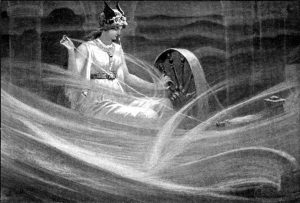
Whilst often thought of in terms of a stern woman, Ananke is also often depicted in serpent form, and it was said that the serpentine coils of Ananke and Chronos crushed the egg of creation to bring order to the cosmos and then encircled the universe, directing the passage of the heavens and the forward motion of time.
With most surviving ancient sources following the Hesiod genealogy of the gods it is perhaps not surprising that Ananke is rarely mentioned in surviving sources, although her name is used occasionally in Prometheus Bound (Aeschylus) and the Argonautica (Apollonius Rhodius). The Greek traveller and writer Pausanias would also state that in Corinth there was a temple dedicated to Ananke and Bia.
And/or: Let us come to some of the main ideas which deal with the question of how a man can change his being. The whole of this work is about a change of being—that is, a change of the level of being at which a man naturally is—in ordinary life. What must be first realized here is that every one of us is at a certain level of being. In this connection we must visualize a vertical direction or a ladder extending as it were from below upwards and having many rungs on it.
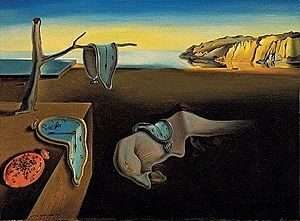
‘Once upon a time, there was no time, and it was then that. . is the traditional opening of a tale told by a Breton storyteller, immediately placing his audience into another realm of existence. It is into this ‘once upon a time’ that we must go to find the first traces of the Western Way, for to start our story within recorded history would be to leave out the most important of beginnings.'
People— all of us—are on one or another of the rungs of this ladder that stands vertically below and above us. This ladder is quite different from time—namely, from past, present and future which we can imagine as a horizontal line {'truncated'?}. In order to make my meaning clearer, | would like to ask you how you imagine time—that is, the passage of time from the past into the present and into the future. Usually, the kind of mechanical hope that people hold on to is connected with the idea of time—namely, that in the future things will be better, or they themselves will be better, and so on. But this ladder of which we are speaking and which refers to different levels of being has nothing to do with time in this sense. A higher level of being lies immediately above all of us at this very moment. It does not lie in the future of time but in ourselves at this very moment, now. All work on oneself, all personal work which deals with stopping negative emotions, with self-remembering, with not being identified with one’s woes and troubles, with not making accounts, etc., etc., is concerned with a certain action that can take place in oneself at this moment—now—if one tries to be more conscious and remembers what it is we are trying to do in this work. That is to say, the work is about a certain transformation of the instant, of the moment, of the present, through the action of this work. {'Psychological Commentaries on the Teaching of Gurdjieff and Ouspensky' / M. Nicolls}.
Side note: Lent and Easter 2025: Many are unaware that Catholic Easter dates vary between 22 March and 25 April. Easter falls on 20 April this year, making it one of the later dates. Lent will begin on Wednesday, 5 March. Unlike previous years, we will not have a specific Lenten pilgrimage. However, we encourage you to revisit past pilgrimages if they help you and, above all, to live intensely in the Church's liturgy, a growing journey toward encountering the Risen Christ. As you can see, the Council of Nicaea first established the date of Easter, and this year marks its 1700th anniversary. This is a significant celebration for Christianity, as that council initiated the formulation of the Creed, which the Council of Constantinople later completed—hence the name Nicene-Constantinopolitan Creed. The Creed contains the essential truths of our salvation.
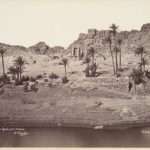

kiosk.
Continued: ''With higher inspirations, he extracts everything meaningful and valuable as in a process of distillation, and catches the precious drops of the 'liquor Sophia' {'Isis'?} in the ready beaker of the soul, where they ''open a window'' for his understanding....'' [Page 180 'Alchemical Studies'].
Refresher: "She looked out of the window as white as any milk - and he looked in at the window as black as any silk... Hullo, hullo you coal black smith, and what is your silly song? You shall never have my maidenhead that i have kept so long!...Then she became a hare, a hare all on the plain, and he became a greyhound dog and chased her back again. And she became a duck, a duck all on the stream, and he became a water dog and fetched her back again. Then she became a fly, a fly all in the air, and he became a spider bold and dragged her to his lair..."
'Diamond'.


'Spirit' or 'Soul'? Male or female feet.
Side note: We stop at a nearby silk rug—weaving operation where a beautiful girl is weaving very fine silk rugs. We watch in awe as her fingers quickly place the thread in the woof of the loom, cutting it quickly and neatly as she ties the many knots. Several other weavers are working on other looms, but their designs do not have the delicacy of this one young woman, who has obviously been doing this kind of work for years....We continue into the sales floor, where example after example of silk and woolen rugs hang upon the walls. There are rugs here that you can carry in your hand and others that will fill a large room. One particular rug in shades of blue and brown catches my eye; it is a rug that I would love to own. I would want to build a house around this rug, but for now, I am content with a small altarpiece, with the blue lotus woven into it.
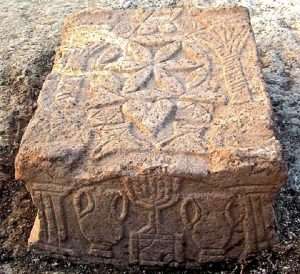
Found in Magdala. 'Rose' or just a 'flower'? Lily?
Continued: A WOODEN ladder 'resting against a window' above the Holy Sepulchre - ''been there since at least 1785AD'' - because {supposedly}: ''No one can agree on who should move it...it symbolises centuries of disagreement.''
Other clues to determine one way or the other {i.e., ''yes or no''}. Tunnel found directly underneath the resting place of same. Square in shape until the final upturn towards the base of the tomb. A semicircle can be seen. The tomb made of limestone with sides {in 'profile' or 'face on'?}. A crystal window is {presently} to be put in place in one of the 'sides'. A fault line directly underneath {'volcanic' link}. Venus temple placed on top in Roman times {Synchronistic link} and/or Constantine knew where to look for it BECAUSE of the Venus association {not because of hearsay}. Left it exposed to ''the open AIR''. {'fire' - i.e., 'place of the skull' link + and 'air' = ''water/Aquarius'' i.e., next 'cycle' = octagon link etc, etc}. ['Secrets of Christs Tomb' / Nat. Geo].
In other words Constantine understood subject material.
'Friday' ?
REFRESHER: ''The Rose blooms at the center of the cross.''
As {one} example. The name 'Helen' {mother} used throughout. Start off with ''Troy''.
Question. Was the body moved somewhere else? Joseph and Co? {recall who owned the tomb}.
Question 2. Can it therefore be FOUND? Who will be found with him?
John 19:41

'Net' in a different form?
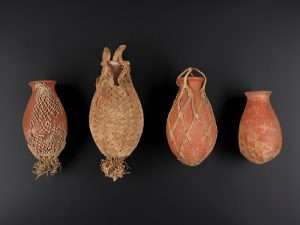
Found with the Qurna Queen and child: ''under a rocky outcrop {'overhang'? on the north side of the valley at Thebes.''
Side note: "The Smagdarine Tablet describes just such an ordered cosmos: Initiation, it is said, is always a one-to-one expenence the seeker stands alone (however supported by his or her brethren) before whatever principle he seeks to know In the Western Way, as we have tned to show, all knowledge and experience thus gamed is part of a single initiation we must all undergo It was for this reason that the Temple of Thoth was called the House of the Net, meaning the enclosing snare of matter. To escape this the captive (the inmate) must learn the parts of the net — its poles, ropes, weights and so forth — m order to turn it to his own use, as a means of catching the food of the spirit. An ancient prayer reads ‘Hail, ye net-inverters, fishers and catchers of the spirit which alone nourishes* By refining your higher selves, ye have produced that which produced you.’ (227) Again the familiar theme discover yourselves and you discover God. It is not strange that the imagery here echoes that of Christ’s ‘I will make you fishers of men (Mark, Chap 1,17) which can be read as meaning that those who follow the way will find themselves, and in themselves find God. This is why Hermetic teaching places such importance on the place of man in the cosmos. He is seen as central in that he touches the boundaries of creation at every level, and because he possesses within him the encoded mysteries of matter, spirit and mind." {'The Western Way' / Page 219 / C+J Matthews}.
'153' ?
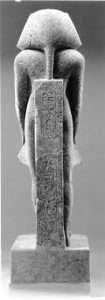
First Witness?
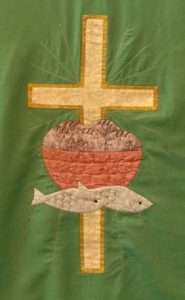
Apostle Philip.
Tau cross in relation to those 'T' shaped pillars at Gobekli-tepe? {i.e., ''Quarried from the very hard crystalline limestone - and polished to a flawlessly smooth finish...}.
Hewn / UNhewn?
And/or: "The most important Neolithic sites are Merimde-Beni-Salame, the Fayum in the north and Tasa in the south {polished stone and NO copper objects...}" ['Magicians of the Gods' / G. Hancock].
Further Head scratch: If S/W has been correctly evaluated within number symbolism - what would S/E be represented by?
Side note: ''And Philip gave witness to Jesus represented with the Tau, which is the Greek letter 'T' in the form of a cross. Ezekiel saw the same on the foreheads of the faithful. Philip himself was crucified on the long cross in 'T'urkey...''
And/or: ''The story of Philip and the Ethiopian Eunuch on his way back to Ehiopia - in his chariot - after his pilgrimage to Jerusalem. He is reading the prophet Isaiah with a new fervour for some understanding of Isaiah which Philip gives - while baptising him.'' [Philip the Apostle 1/2 / 'Go Out To The Sea' / Magdala / Israel].
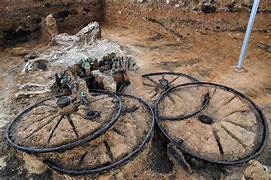
Two horse skeletons and the remains of a chariot....East Yorkshire. Other finds include human skeletons, including a "young warrior", swords, spears and shields.

“Most certainly, I tell you, one who doesn’t enter by the door into the sheep fold, but climbs up some other way, is a thief and a robber."
Side note: 26 Now an angel of the Lord said to Philip, “Rise and go toward the south[a] to the road that goes down from Jerusalem to Gaza.” This is a desert place. 27 And he rose and went. And there was an Ethiopian, a eunuch, a court official of Candace, queen of the Ethiopians, who was in charge of all her treasure. He had come to Jerusalem to worship 28 and was returning, seated in his chariot, and he was reading the prophet Isaiah. 29 And the Spirit said to Philip, “Go over and join this chariot.” 30 So Philip ran to him and heard him reading Isaiah the prophet and asked, “Do you understand what you are reading?” 31 And he said, “How can I, unless someone guides me?” And he invited Philip to come up and sit with him. 32 Now the passage of the Scripture that he was reading was this:
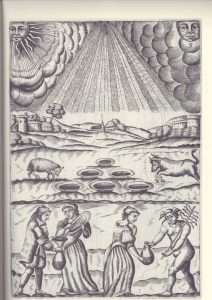
Venus/Mars. Taurus/Aries. Sheep decan?
“Like a sheep he was led to the slaughter
and like a lamb before its shearer is silent,
so he opens not his mouth.
33 In his humiliation justice was denied him.
Who can describe his generation?
For his life is taken away from the earth.”
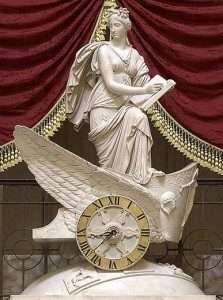
'Wheels' of time?
34 And the eunuch said to Philip, “About whom, I ask you, does the prophet say this, about himself or about someone else?” 35 Then Philip opened his mouth, and beginning with this Scripture he told him the good news about Jesus. 36 And as they were going along the road they came to some water, and the eunuch said, “See, here is water! What prevents me from being baptized?”[b] 38 And he commanded the chariot to stop, and they both went down into the water, Philip and the eunuch, and he baptized him. 39 And when they came up out of the water, the Spirit of the Lord carried Philip away, and the eunuch saw him no more, and went on his way rejoicing. 40 But Philip found himself at Azotus, and as he passed through he preached the gospel to all the towns until he came to Caesarea.
Isaiah 19:19 ?
Philip = ''one who loves horses.'' {Greek origin}.
Linear A/B?

"From Hermopolis, city of Hermes (Thoth), Master of Writing, Numbers, Measurement and Time, comes the description of the Nun, the primordial environment, picturing its qualities and characteristics: ‘He [the Demiurge] created the Eight. He formed its body as that of a sacred child who issues forth from a lotus in the middle of the Nun.’ The primordial Eight, as envisaged at Hermopolis (the Ogdoad), together form, as the text indicates, a single entity. The Nun is envisaged as a swampy mire, a seething primal cradle in which live four couples of serpents and frogs. Their names are Naun and Naunet, meaning both ‘the initial waters’ and ‘inertia’, Heh and Hehet, meaning ‘spatial infinity’; Kek and Keket, ‘the darkness’; and Amun and Amunet, ‘That which is hidden’. This latter couple is sometimes replaced by Niau and Niaut, ‘the void’. As might be suspected, these qualities of the primordial state have often been compared with the shadowy waters of the Biblical Genesis, when ‘the earth was without form and void, and darkness was upon the face of the deep’. But rather than regard the Nun as an initial or primal chaos, in the Biblical mode, it seems more FRUITFUL to see it as indefinable substance, the eternal and infinite source of the Universe. The lotus, which has its roots in mud, its stem in water and its leaves and flowers opening out into air, receiving the celestial dew and the sun’s rays, has always been a symbol of the four elements. This symbol is employed often in Egypt, in architecture as well as in myth. It appears in many legends of the Creation....The Eight are called the ‘fathers and mothers of Ré’ for the child-that comes forth from this primordial lotus is Ré, or Ra, the principle of light itself. It is often said that Ré is himself the sun which is inaccurate, for many texts affirm that Ré ‘penetrates’ the solar globe and causes it to shine, so that he renders it luminous by his passage. Thus Ré is not the light but that which provokes the phenomenon of light." {'Egyptian Mysteries' / L. Lamy}. 'Shining'?
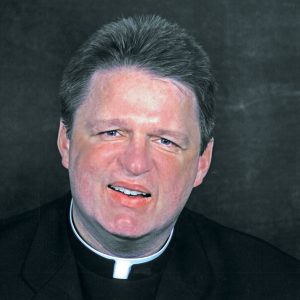
By now, you’ve heard about Stuart Long and his big Hollywood debut. Long was the Montana boxer and ne’er-do-well who became a Catholic and then, against all odds, a priest. Father Stu had a rich and fruitful ministry, despite contracting a rare debilitating condition—inclusion body myositis—that cut his life short at age 50.
''The term linear refers to the fact that the script was written using a stylus to cut lines into a tablet of clay, as opposed to cuneiform, which was written by using a stylus to press wedges into the clay.''
Embossed/Debossed?
Continued: ''Tau /ˈtɔː, ˈtaʊ/[1] (uppercase Τ, lowercase τ, or τ {\displaystyle {\boldsymbol {\tau }}} ; Greek: ταυ [taf]) is the NINETEENTH letter of the Greek alphabet, representing the voiceless dental or alveolar plosive IPA: [t]. In the system of Greek numerals, it has a value of 300.''
''Tau was derived from the Phoenician letter taw ![]() (𐤕).[5] Letters that arose from tau include Roman T and Cyrillic Te (Т, т).''
(𐤕).[5] Letters that arose from tau include Roman T and Cyrillic Te (Т, т).''
REFRESHER...Francis of Assisi used it constantly. The patron saint of 'animals'. Spiritual equivalent of higher over lower. Enlarged elsewhere.
N.B. ''Law and grace'' in both 'seventeen' and 'eighteen'. As is the intent of...

The dawning of a new day. 1st day?
"In the preface to the songbook, i recounted my first outstanding experience with Western reaction to Eastern chants. The occasion had been a public lecture; the time, April 18, 1926; the place, Carnegie Hall in New York. On April 17, i had confided to an American student, Mr Alvin Hunsicker, 'I am planning to ask the audience to sing an old Hindu chant, 'O god beautiful.' Mr. Hunsicker had protested that Oriental songs are not easily understood by Americans. 'Music is a universal language,' i had replied. 'Americans will not fail to feel the soul aspiration of this lofty chant.' " [Extract from the book 'Autobiography of a Yogi'. Emphasis, this readers].
The Goddess of Dawn.
Refresher: "Dawn begins in the bones."
 "The most common name for a group of monkeys is a troop, while other accepted names for monkey groups are a tribe, a cartload, and a barrel. Generally, a group of monkeys consists of up to 40 members, but the number can vary depending on the species."
"The most common name for a group of monkeys is a troop, while other accepted names for monkey groups are a tribe, a cartload, and a barrel. Generally, a group of monkeys consists of up to 40 members, but the number can vary depending on the species."
"What is learnt from the first call to awakening? This is the first part of the first day of the seven days described by the text..." [M. Katz book].
Synchronistic example? Akhenaten - Dynasty 'eighteen' who ruled for 'seventeen' years. Aten in relation to Amun. 'Father' in relation to 'Son'. Debossed/Embossed? Enlarged elsewhere.
And/or: 17 original Obelisks at Karnak - that final one {18th} being in the horizontal position at the quarry site at {A}swan.
Finished/UNfinished. Lost/Found - as a means....?

Side note: Amun = such quotes {keys} as: ''Associated with the Hermopolitan myths associated with the dynamic force of life'' and/or ''Greatest of Heaven and Eldest of Earth {Thebes related and/or 'Abraham'?} '' and/or ''Young man with curled horns'' and/or "Included within the Ogdoad at Hermopolis, THEN at the Primeval Mound of Memphis, at which time he was supposed to have 'created' all the other gods. He then left the earth to abide as Re in the heavens {Amun-Re}, taking the form of a 'divine child' revealed in the Lotus . At Siwa Oasis called Jupiter Amon...At Thebes with female aspect {Mut} and Son {Khonsu}....Linked to 'Beautiful Feast of the Valley'...'' ['Encyclopedia of Ancient Egypt' /M. Bunson].
Side note 2: Welsh equivalent?: ''These bear a family likeness to each other since they represent a venerable tradition which I have identified as the Mysteries of Mabon and Madron. These characters make their appearances within the Culhwch and Olwen and are no more spoken of within the Mabinogion, except as a glancing reference, yet they are mysteriously present throughout the other stories as identifiable archetypes of the - Wonderous Youth and the Great Mother." [' Mabon and the Mysteries of Britain' / C. Matthews].
Continued: {in relation to side note1}: "Passing inside Karnak, I found myself in the open court of the temple of the hawk headed Khonsu; that god who in popular uninitiated parlance, was the son of Amon..." [Page 248 'In Search of Secret Egypt' / P. Brunton].

'Back' of the head to the front?
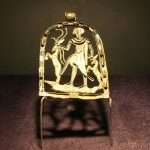
Folded chair?
And/or: "Many words in contemporary usage link the zodiac when translated: one is the Hebrew word tzaddiq that translates as a just or righteous man...He is a religious leader viewed as a mediator between man and god. From this word {tzaddiq} others are closely associated; the eighth god and/or Jupiter and/or James the Just, brother of Jesus, teacher of righteousness. James wore a bishops mitre copied from a crown of Amon-Ra the creator god of Thebes, the city that provided ancient Judaism with the central tenets of its theology. Ra was the Holy One, the Falcon of the Horizon." [Page 14 'Pathways to the Zodiac' / E. Winstanley].
Joseph was known as ''The Just One''.
And/or: ''Hooked'' shape?
Question. Anyone with a ''hooked'' nose?
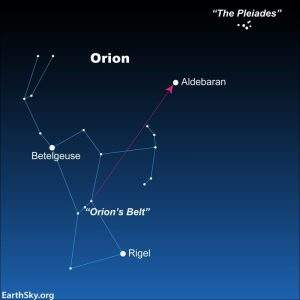
Sixes and sevens.
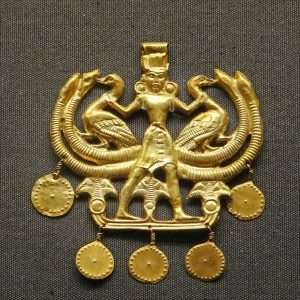
Minoan.
A side step: "...Muhammad was at first both frightened by the intensity of the experience and doubtful of its validity. He confided in his wife, Khadija, who supported him during the crisis brought on by these powerful experiences. The continued eruption of the revelations in the end convinced him of their truth, and in 612 he began his public prophetic mission. According to tradition, in the year 617 or 619 {i.e.,''5'' or ''7'' years}, partly in answer to the doubts of unbelievers, the Prophet was taken up into 'Heaven' in a 'Celestial Ascent' called 'Miraj'. This event, mentioned briefly and allusively in the Quran {17:1}, was to become the archetypal mystical experience in Islam...From the beginning {after his 'return'?} the Prophet began to attract followers. They were convinced by the sudden transformation of an otherwise unremarkable, though honest and good man, by the 'incredible eloquence of his language' in a culture where the importance of the mastery of language cannot be over estimated, and 'by the recognition that his message was something they had always known but somehow had stopped taking seriously'...The Prophet said that the Quran has seven levels of meaning, and the last and highest is known only to 'God'. " [Extracts from the book 'The World Turned Inside Out'. Mentioned elsewhere. All emphasis, this readers].
N.B. As a further headscratch - an alternative view {and/or ''angle'' i.e., as seen from:} - could be represented as 12+4 and/or 12+5. And/or 10+6 or 10+7. Or would that be ''13'' + 3 or ''13''+ 4 {i.e., in relation to the ''missing thirteenth''}?
Sun/moon/planets {10+7?} in relation {or relative?} to constellations and the Precession {12+5?}. Lower/higher. Clockwise/anticlockwise - as a means to an understanding.
N.B. 'Planets' = middle ground between the two?

Flag of Brazil. 'Twentysix' stars above the equator. The solitary one = Spica - below. 'Twentyseven' in total. 'nineteen{th}' of November 1889 = Independence Day. Lozenge shape? ['Spring Constellations' / 2023 / Martin Lunn / Mirthy].
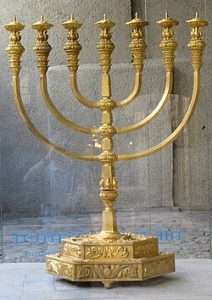 "Equinoxes were equally significant, being recognised by the equality of day and night as well as their occurrences midway between the two solstices. In ancient Egypt, the vernal equinox coincided with the return of Orion's rising before dawn, an event which heralded the symbolic return of Osiris, as he was associated with the constellation {'horizontal'?}. The autumn equinox was also a sacred time in stellar {'vertical'?} terms; it coincided with the rising of the star Spica {enlarged elsewhere} before dawn. This star was associated with Isis, and thus the two equinoxes were identified with the 'divine' pair..." ['From the book by R. Clark].
"Equinoxes were equally significant, being recognised by the equality of day and night as well as their occurrences midway between the two solstices. In ancient Egypt, the vernal equinox coincided with the return of Orion's rising before dawn, an event which heralded the symbolic return of Osiris, as he was associated with the constellation {'horizontal'?}. The autumn equinox was also a sacred time in stellar {'vertical'?} terms; it coincided with the rising of the star Spica {enlarged elsewhere} before dawn. This star was associated with Isis, and thus the two equinoxes were identified with the 'divine' pair..." ['From the book by R. Clark].
All as a means...?
Conception to enlarge.
Side note: On Lot twentysix {out of 'thirtytwo'} - a fresh water well is found - near a pond. On the western side of the island. Traces of silver found. Contemporary with the construction of the swamp and therefore the origin and the PURPOSE of the 'money pit'. Plot 26 originally belonged to Captain James Anderson a Freemason who sold it to ex slave {'freeman'} Samuel Ball. A wharf found near by. ['Curse of Oak Island' / S10 EP11].
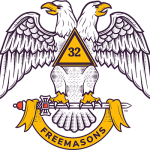
'Sixteen' x 2?
''The 32nd degree teaches that Man has the Royal Secret. It is the eternal gift of God—LOVE. It cannot be imparted to mortal men by others. It was incarnate when the 'Father' breathed into his nostrils the breath of life, and man became a living soul.''
System of Degrees: ''Lodge of Perfection {4th - fourteen{th} degree}. Council of Princes of Jerusalem {Fifteen - sixteen degree}. Chapter of Rose Croix { Seventeen - Eighteen degree}. Consistory {Nineteen - Thirtytwo degree}.
''Samuel's 1841 last will and testament refers to his beloved wife "Catherine”. It is possible that Mary died and he remarried, or his first wife had several name changes during her lifetime. Samuel and Mary registered having three children: Andrew, Samuel, and Mary.''
'C'aroline to enlarge.
Additional information?..."In fact, as we shall show, the gods, Greek and Trojan warriors and other characters in Homer's epic represent planets, stars and constellations, and by their activities they preserve a remarkable volume of astronomical learning, encompassing everything that can be seen in the heavens with the naked eye." ['Homer's Secret Iliad'].
Try ''nineteen'' {to add or detract from}.
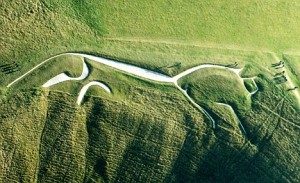
Refresher: Lotus leaves were known by Homer to be ''fodder for horses''. Question. Iron 'shoes'? Any silver/gold ones?
Define {'see'} the above to get an idea {''hang on''?} - the following: The Cerrigydrudion Crown. A Celtic piece of ancient artwork. Bronze {'red'?} and leather {'cow'?} headpiece. ''Possibly signifies 'warrior' headgear - with palm leaf and lotus designs - neither of which are common to these islands {UK}.'' ['Inside Museums: St. Fagan/Cardiff. Sat.TV].
''Lotus Island'' - the first stopping point of 'King' Odysseus journey back to his homeland.
'Spirit' / 'Soul' as a means....?
And/or: The traditional name Bellatrix is from the Latin bellātrix "female warrior". It first appeared in the works of Abu Ma'shar al-Balkhi and Johannes Hispalensis, where it originally referred to Capella, but was transferred to Gamma Orionis by the Vienna school of astronomers in the 15th century, and appeared in contemporary reprints of the Alfonsine tables.[17] In 2016, the International Astronomical Union organized a Working Group on Star Names (WGSN)[18] to catalog and standardize proper names for stars.

64 objective aspects. Good or bad?
From a different perspective: but from which 'nuggets' can be gleamed from it: ''Almost 3500 years go someone dropped a broken piece of inscribed IVORY in a courtyard in the royal city of Amarna....Found in 1912...Only in 1983 was it recognised as a horse blinker...It was found next to the house of a SCULPTOR in Amarna {Thutmose}...It was found in a pit that had been identified as a rubbish pit. The pit had been dug initially for some trees....The Egyptians employ two words for 'sculptor' 'gnwt' and s'ankh'....The second one is the word as seen on the INSIDE of the blinker, it translates as: 'the one who makes alive'....Sculptors like gods were creators...'' [Pages 27/32/55 'Nefertiti's Face' / J. Tyldesley].
''He has outlived that rage of early youth. He is no longer impulsive, but implacable....an immutable Will...breath from the sculptured stone.'' [Page 54 'Hathor Rising' / A. Roberts].
Something 'set' in stone?

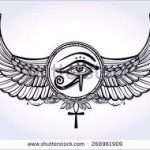
An objective eye. Blink and miss?
Side note: ''An ugly blinking fish could hold the secret to how ancient animals evolved the ability to live on land, a new study has found. Mudskippers, a subfamily of fish that live both on land and in the water, are the only fish that can blink, and they evolved this ability independently from our ancestors — a concept known as convergent evolution. Scientists think that blinking evolved in land animals when they made the transition from the oceans roughly 375 million years ago. Therefore, studying this example of convergent evolution has offered clues as to how our primordial ancestors first took to Earth's shores.''

Static or dynamic?
Continued:...That duality is now expressed on a lower plane in the static and the dynamic elements of our construction. That is in a circle and a cross. The cross represents a 'static' {S/W?} matrix of energies, the circle a 'dynamic' expression of energies {S/E?} within that matrix. Both circle and cross are expressions of the initiating, creative spirit that is represented by the point at the common center of both cross and circle...That central point is also expressed as an 'altar'...And the altar is often also a formal four-square object. In the masonic tradition which derives from the ancient mysteries, it is usually in the form of a double cube. This is a....

Twice as high? And/or 90 degrees from the ''back of the head''?
solid figure, with a square top, and twice as high {benben?} - as it is broad and long. This 'form' contains, in geometrical symbolism, the figure ten {10+ ? } in the number of its square faces {two to each rectangular side and one each above and below}...In masonic symbolism this duality is expressed by the square and compass. The square marks out the cross; the compass, the circle. This finds another expression in the heavens and the earth. The heavens are associated with circular movement {12+5? and/or N/S? and/or 'Macro' ? }, for that is what the stars describe to all who watch them from the earth. The earth is associated with the straight line {10+7? and/or E/W? and/or 'Micro' ? } - the measuring out of land {'Running the Fields'? i.e.,Sed Jubilee link? } - and the straight line that is given by a plumb bob or pendulum, or a falling object, that by the force of gravity makes a direct path toward the center of the earth." [Extract from the book 'The Rose Cross and The Goddess: The Quest for the Eternal Feminine Principle'].
''Straight South'' to enlarge.
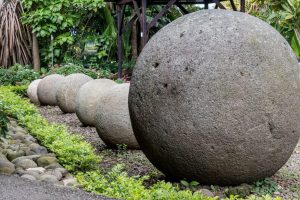
'Line of sight'.
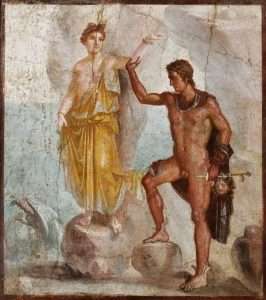
'Silk' ?
Working example: The stone spheres of Costa Rica are an assortment of over 300 petrospheres in Costa Rica, on the Diquís Delta and on Isla del Caño. Locally, they are also known as bolas de piedra (lit. 'stone balls'). The spheres are commonly attributed to the extinct Diquís culture, and they are sometimes referred to as the Diquís Spheres. They are the best-known stone sculptures of the Isthmo-Colombian area.
They are thought to have been placed in lines along the approach to the houses of chiefs, but their exact significance remains uncertain. The Palmar Sur Archaeological Excavations are a series of excavations of a site located in the southern portion of the country, known as the Diquís Delta, and have centered on a site known as "Finca 6" (Farm 6, i.e., banana plantation). The archaeological findings date back to the Aguas Buenas Period (300–800 CE) and Chiriquí Period (800–1550 CE).

Viking stones.
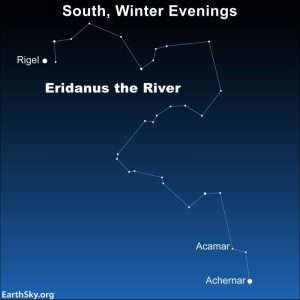
Cetus to enlarge.
The Diquis culture (sometimes spelled Diquís) was a pre-Columbian indigenous culture of Costa Rica that flourished from AD 700 to 1530.[1] The word "diquís" means "great waters" or "great river" in the Boruca language.[1] The Diquis formed part of the Greater Chiriqui culture that spanned from southern Costa Rica to western Panama.[2] Three types of artifacts have been found in the delta that are unique to the region and appear to have been part of the specialized industry for the production of power symbols: Stone spheres, Peg-based statues that depict women and men, and the delta’s metallurgy, represented by gold and tumbaga artifacts.[3]
The elongated, flattened peg-base statues of men and women are representative of a distinct style associated with the Diquis region. The statues were made primarily from four types of material: gabbro, granodiorite, limestone, and sandstone. They varied in size from 50 cm to two meters. Lizard or feline masks are a major motif in the delta’s statuary and metallurgy, while geometric motifs are found in both the ceramics and statuary of the delta.[3] The statues along with the stone spheres may have formed a group of public symbols. These in conjunction with the construction of mounds and public plazas point to established social structures that among the culture they were utilized in.[3] Multiple sculptures have been found that portray individuals holding or wearing disembodied heads. Almost all of the statues are made of vesicular andesite, volcanic rock abundant in the area.[5]
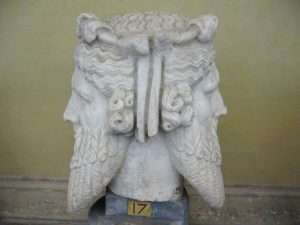
Past /Present. Inward / Outward. Foresight/Hindsight.
Top of Karnac to enlarge.

Foundation Stone within the Dome of the Rock. A HOLE in its S/E Corner.
And/or: "On the path of individuation, not only is there the duality of the ego and shadow, but also the awareness of the contrasexual aspect of the psyche, and animus and anima. And, for the seeker after ultimate truth, there is the most important DUALITY, that of ego and Self; the sense of individual identity and the Reality in which there is no 'I', only Oneness....The best way to reach Him is to renounce the self and just walk in a straight way. The ego belongs to the world of duality, and if one is to experience His Unity, one must transcend the ego. The ego must be continually sacrificed, the Wayfarer follow His Will, and not the desires of the ego. Here the psychological and spiritual directions are different, for psychological individuation aims towards an intergrated, balanced ego, while the Sufi seeks a world beyond the ego. But before the ego can be transcended, the individual must experience the tension between the opposites....." [Page 16 'The Lover and the Serpent' ].
Up stream / Down stream.
Jebel {Gebel} Barkal to enlarge.

'Spirit' or 'Soul'?

Side step: Return to Zai Tun: "In a city, which comprises an area of eleven thousand square kilometers, there are more than six thousand temples where more than five hundred gods of different religions are worshipped, co-existing with each other. For almost one thousand years, this is a city where various religious beliefs are strongly held in the same place. Meanwhile, more than 10000 vessels are anchored at the port. Merchants, missionaries and sailors from West Asia, Africa and Europe gather on the docks, trading the goods that they are proud of. Here is one of the biggest trading stations in the world in the Middle Ages, and the business model adopted here leads the world. This is Quanzhou, the city of light."
Market square / crossroads to enlarge.
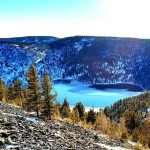
Continued: "The spiritual path is not an escape from this world, but a highly dynamic journey through it. And as Jung suggests, it is through being 'tossed back and forth', through experiencing this conflict, that one reaches the 'liberation from opposites' - the STILL center of the pendulum....Because here between the opposites lie all the possibilities of growth...." {same book}.
Mountain low, valley high.

"The crucifixion took place at Passover. which always takes place on the full moon - it therefore means a lunar eclipse NOT solar eclipse took place {as with Abraham in Canaan in 53BC}. Some accounts say that on the night of the crucifixion the moon rose blood red - indicative of a total lunar eclipse. Records say that indeed their was such an eclipse on the 3rd April 33AD just after sunset in what later became known as the land of modern Israel. {'Eclipses: Radio 4 / 20.11.25}.
Practical example: "I was doing my PHD in India and was so happy that someday i would be called Doctor Masood Khalili. The first in our family. One evening i got a call from my father who asked what i was doing. I told him about the PHD. He asked why i was focused on something for myself when the country was being invaded by the communists - whose people were now fighting for freedom. Do you love your land? he asked. Your home? Yes i replied. Then come back home and join your people. Fight for freedom. Get your PHD from the mountains of Afghanistan, from the university of people. After a week i was in those mountains. I loved this country when i was seven, and i will love this country at seventy. Love does not need logic - it needs sacrifice." ['Afghanistan: The Wounded Land' / S1 EP1].
'Wounded' to enlarge.

Keep fighting or lying? Which one's Fake news?
From a different perspective: ''Sometimes people are mean to me or stuff goes wrong. Then i get mad. When i get annoyed i go into a different version of me. In my bad version, it's like me wanting to be horrible, but in the good version of me, i want to take away the bad version - but the bad version keeps fighting back.'' [Kai / 'Dispatches: Growing Up Poor: Britain's Hidden Homeless Kids' / Channel 4 / 25.10.21].
"Christ is a symbol of psychological wholeness: he embraced both Mary the Virgin, and Mary Magdalene, the whore. But, in order to realise one's wholeness, it is first necessary to encounter the opposites, a process referred to in the alchemical opus as the 'separatio'. In Christian symbolism this state is imaged by the crucifixion: whoever finds himself on the path of individuation cannot evade that suspension between the opposites which is symbolized by the crucifixion." [Page 15 'The Lover and the Serpent'].
Spouse?
'Hung' / 'Tower of the fish' to enlarge.
'153' ?
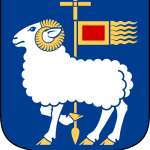
Right foot speared/anchored?
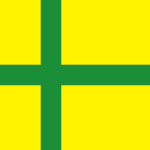
Flag of Gotland. Westward?
A working example: "The Mästermyr chest is a Viking Age (793–1066) tool chest found in the Mästermyr mire west of Hemse on the island of Gotland, Sweden. It is the largest tool find from that era in Europe. During the Viking Age, the area where Mästermyr mire is located used to be a lake. The mire was drained in 1902–10.[1] In October 1936, the chest was found by farmer Hugo Kraft in a field owned by Emil Norrby in Snoder, Sproge near Hemse.[2] It was found in an area that was plowed for the first time....
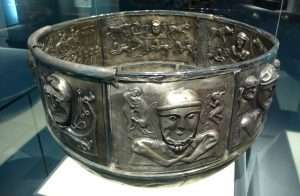
Cauldron.
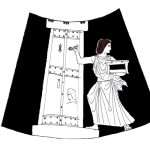
'Bower' to enlarge.
Most of the find had been placed in the chest, but there were also objects around it such as three bronze cauldrons, three bells and a fire-grid of iron.[2] A chain, made up of 'twentysix' figure-of-eight shaped links, was wrapped around it.[2] It served both as an extra lock and handle since the chest was too heavy for the original handle.[5] The chest and the other items had probably been placed in a boat which capsized and sank in the lake.[6] Another theory is that the chest was temporarily hidden at the water's edge. The chest contained Viking-era blacksmithing and woodworking tools. It also contained several products of such work, including elements of several locks.[7] The chest and its contents provide a valuable insight into technology during the Viking Age.
Light/heavy.
'208' ?
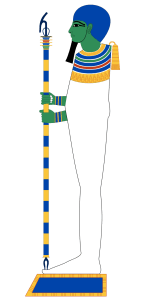
Ptah. Trapezoidal?
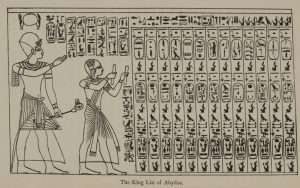
Offerings to Ptah-Seker-Osiris. What about the 'female' aspect? Any 'gaps'?
The chest, 90 cm (35 in) long, 26 cm (10 in) wide and 24 cm (9.4 in) high, was made of oak with iron hinges and lock.[3] It was intact despite the rough encounter with the plow. It was rectangular with a slightly curved lid and flat bottom. The bottom was joined to the ends via a mortise and through tenon. Pegs were used to attach the sides to the bottom and end pieces. The ends and sides were trapezoidal and slightly angled.[7] A lock wrought from iron was attached to the front side of the chest.[5]
Given the wide range of tools and objects in varying styles in the find, and the lack of coins or other chronological markers, it has been impossible to determine an exact date for the chest. The wider term "Viking Age" around 1000, is used for dating it. The contents of the chest indicate that it belonged to a travelling craftsman who made repairs and produced new items. The tools show that he was a smith and a carpenter, and had some knowledge of locks, coppersmithing and coopering.[3] Among the items were three padlocks of a design inspired by Roman locks and of the same kind that were found at excavations in Birka..."
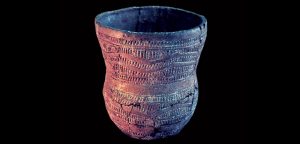
''Twice as high as broad''? The Beaker People who took over the culture {'spiritual evolution'?} at Stonehenge. Fire and water. Which and why?

Twice as broad than long? Birket Habu?
"...twice as high as it is broad and long". Recall the dimensions of the 'Temple', i.e., in reverse.
Side note: "You are always my compass John''. ['Shanghai Knights'].
Compass of the Heart?
''The inner guardian is our true North, the keeper of the charts.'' Try 'map' / 'whale'.
And/or: ''Compass'' in relation to 'encompass' / 'compassion'?
Side step: The trapezoidal form of Long Barrows mimics that of the stone axes common at the time.

Queen of Punt. 'Fat' of the land?

The land of Punt.
Side note: “Ash Wednesday is the much higher value and deserves the full measure of our devotion,” he said. “I ask with all respect that we maintain the unique importance of Ash Wednesday. If you would like to wine and dine your Valentine, please do so on the Tuesday before. February 13 is Mardi Gras, ‘Fat Tuesday,’ a perfect day to feast and celebrate!”
'Thirteen'.
Continued: "Thus, Set was regarded as a metaphor of cosmic permanence as well as the channel {'canal'?} through which celestial matter became fixed {'static'?} into the domain of physical existence." ['Page 172 from the book by R. Clark].
 For a deeper head scratch, why does the number ''thirteen'' seem significant within the life of the author of 'Mind to Mind'. Possible synchronistic link? If so, what would that imply?
For a deeper head scratch, why does the number ''thirteen'' seem significant within the life of the author of 'Mind to Mind'. Possible synchronistic link? If so, what would that imply?
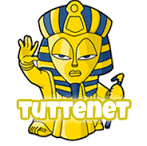 Analogy of same?..."As the late, great H.P Lovecraft might begin this narrative: It is now nearly 13 years since the ill fated day when i first began investigating the terrible legends surrounding the enigmatic Bavarian Illuminati, an alleged conspiracy that some people believe rules the world. Like a Lovecraft hero, i embarked on my research with no suspicion of the perils awaiting me: i thought i was just investigating a notable case of political paranoia and expected to find only some insight into the psychology which causes otherwise sane individuals to subscribe to such absurdly ridiculous conspiracy theories." [First paragraph, first page, first chapter of the book 'The Cosmic Trigger'. Mentioned elsewhere].
Analogy of same?..."As the late, great H.P Lovecraft might begin this narrative: It is now nearly 13 years since the ill fated day when i first began investigating the terrible legends surrounding the enigmatic Bavarian Illuminati, an alleged conspiracy that some people believe rules the world. Like a Lovecraft hero, i embarked on my research with no suspicion of the perils awaiting me: i thought i was just investigating a notable case of political paranoia and expected to find only some insight into the psychology which causes otherwise sane individuals to subscribe to such absurdly ridiculous conspiracy theories." [First paragraph, first page, first chapter of the book 'The Cosmic Trigger'. Mentioned elsewhere].
Question. Why the analogy to Mr Lovecraft?
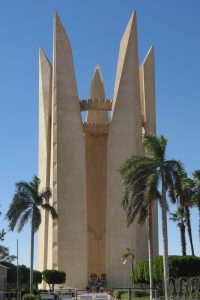
Nubian Lotus - on Elephant Island. Aswan. ''White without spot''?
A {practical?} example..."In the court of the Temple of Edfu, singers, musicians, harpists, and dancers waited while the divine barques, preceded by their emblems, were carried off the ships and placed in their respectful places in the Temple. The hymn to the Golden One was sung. Horus and Hathor now united. The ceremonies lasted thirteen days {i.e.,in relation to Hathor of Dendera and Horus of Edfu; enlarged elsewhere}. On the morning of the 14th the procession re-formed, the ships returned downstream amid the acclamations of the crowd. Led by the helmsman, the rowers chanted..."
'Thirteen' in relation to 'fourteen' - {waxing/waning?} as a means to something other than the obvious.
'The highs don't last forever, but then neither do the lows'.
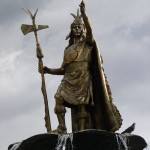
Lily or lotus head?
And/or: At Machu Picchu ''the city in the clouds'' the ONLY 'curved' building is found between two peaks {'horizon'?} on a ridge - 180 and 90 degrees enclosed within same building. As is a polished granite stone aligned to the winter solstice. Many theories abound. ''Aligned with the sun''. Close by the Intihuatana Stone which casts no shadow at the Equinox's - is purposely sculptured at 13 degree's....'' ['Unearthed : Hidden City of the Inca's' / Discovery Channel / 2021].
N.B. Machu Picchu - surrounded on three sides by ''sheer cliffs''. 16 fountains found within and 8 roads.
Three sides to the ancient Well at Glastonbury made from 'a single block of stone'.
Analogy: Great Step - inside the Gt. Pyramid - at the top of the Grand Gallery?
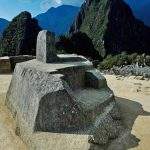
To be sat upon?
 A working example {i.e., something hinted at}: ''Coming towards the great slab of a standing stone, i saw someone detach themselves from its shadow and face me, as if waiting. It was Pluto. He was not the first person i wished to see. However, since i couldn't very well ignore him in all that space - and since the stone provides a natural stop in the landscape - i leaned against it and bid him good morning, before turning away and surveying the view. He remained standing a few feet behind me....'' [Page 286 'Mercurius' / P. Harpur].
A working example {i.e., something hinted at}: ''Coming towards the great slab of a standing stone, i saw someone detach themselves from its shadow and face me, as if waiting. It was Pluto. He was not the first person i wished to see. However, since i couldn't very well ignore him in all that space - and since the stone provides a natural stop in the landscape - i leaned against it and bid him good morning, before turning away and surveying the view. He remained standing a few feet behind me....'' [Page 286 'Mercurius' / P. Harpur].
And/or: 'In his Twelve Keys, Basil Valentine identified the Soul or Spirit of the World with an earth spirit which is life itself {that ''bit''?}, endowing all created things with strength, yet itself as intangible and invisible {he says} as the reflection in a mirror. It is of course found in 'our earth' - the prima material - and is the 'root of all bodies', or substances, necessary to the Art. When i was a better churchman i used to think of it as the Holy Ghost; now i think of him as Mercurius. But i also think of her - especially when i lean my back against the Blind Dancer and watch the spring perform her annual transformation - as the Immagination of Nature.'' [Page 305 'Mercurius' / P. Harpur].

An accidental CRACK?. Or a split between two 'divisions'? ''I felt a trifle uneasy, propped against the stone, but Bradley didn't seem to notice. He continued talking in the same musing tone. I used to never believe in the old legends - but maybe there is something in them. Nora was always a great one for them....'' [Page 287]. And Page 315 in relation to ''famine victims'' / ''mucked about with'' / ''his voice cracked'' etc. All as a means....?
 Bradley/Nora? {i.e., as the REPRESENTATION of that 'turning point' between Spirit/Soul}. Middle ground = ''child''.
Bradley/Nora? {i.e., as the REPRESENTATION of that 'turning point' between Spirit/Soul}. Middle ground = ''child''.
Tomb/Womb?
A work in progress i.e., spirit fire {'Mercurius'} in relation to: ''I have been in many shapes, before i attained a congenial form. I have been a 'narrow' blade of a sword {'razor back'?}. I have been a drop in the air. I have been a shining star {of ones ''being''?}. I have been a word in a book {'Logos'?}. I have been a 'book' originally {Coptos?}. I have been a 'light' in a lantern. A year and a half. I have been a 'bridge' for passing over. 'Three' score rivers. I have 'journeyed' as an eagle. I have been a 'boat' on the sea. I have been a string on a harp enchanted for a year. There is nothing in which i have not been. I have fought, though 'small', in the Battle of Goddeu Brig, before the 'ruler' of Britain.'' [Extract from 'The Battle of the Trees' within the book 'The White Goddess' / R. Graves].
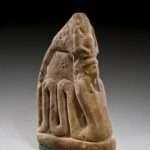 MOLTEN ROCK i.e., as a means to ''peak ones interest''?
MOLTEN ROCK i.e., as a means to ''peak ones interest''?
Something ''Set in Stone.''
THEREFORE 'Philosophers' Stone?
''See'' it?
'Little father' and/or ishon to enlarge.
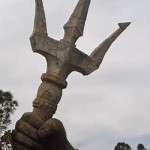
Metal of the mind.
Continued: ''I was the chief 'overseer' at the building of the Tower of Nimrod; i have been 'three' times resident in the castle of Arianrhod. I was with my 'king' in the manger of the ass. I 'supported' Moses through the 'waters' of Jordan. I was in the firmament with Mary Magdalene. I obtained my 'inspiration' from the 'cauldron' of Caridwen. I was Bard of the harp to Deon of Llychlyn. I have suffered hunger with the son of the 'Virgin'. I have been in the 'buttery' in the land of the 'Trinity'. It is not known what is the nature of its 'meat' and 'fish'. I have been instructed in the whole 'system' of the universe. I shall be till the day of judgement on the 'face' of the earth. I have been in an uneasy chair {Cassiopeia?} above Caer Sidi and the whirling around without motion between three elements. Is it not the wonder of the world that cannot be discovered?''' [Extract from Gwion's Riddle from the 'The White Goddess'].
'Face to Face'?
Mercurius?
Clement to enlarge.
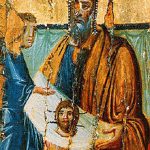
The Mandylion - a likeness of Christ.

Headcloth? What about ''tablecloth''?
A work in progress: ''Descending Mount Nimrod....we came to another important Commagene sanctuary at Eski Kale {the old fortress}....most probably the main spiritual shrine of ancient Commagene as it was very much more accessible to the capital of Arsameia-ad--Nymphaeum, and unlike the peak at Mount Nimrod, could be visited all year round.'' [Page 127 'Magi: Quest for a Secret Tradition'].
Muses?
''The tumulus, which in many ways resembles a pyramid {i.e., pyr='fire'}, is one of Turkeys most famous monuments: they like to refer to it as the EIGHTH wonder of the ancient world. It was built on top of Mount Nimrod, the tallest mountain in the area. Constructed out of fist sized rocks piled up into a heap.'' [Page 125].
Quartz size?
Recall Silbury Hill.
Other epithets: ''Patriarch of the Babylonians / Throne of Nimrod / Beautiful flowing water: from which fish pools are made / Blessed City.'' [Pages 157/162/165/175/302].
Side step: 'Feminine' aspect {'soul'} in relation to: "Gudea made offerings of honey and butter when the foundations were laid; when the building was finished an auspicious day was waited for, and when it came the image of the god was removed to the new temple, and Gudea sprinkled the ground with oil, and set out offerings of honey, butter, wine and dates, grain mixed with milk, food untouched by 'fire', for the gods." [ Chapter 3, 'The Sacred Bee'].

Esprit?
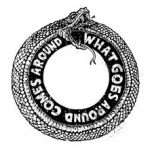 Exercise. Apply the above to get some SENSE of the following {as one example}: ''Across the title page of the first edition of Le Comte de Cabalis, published in Paris in the year 1670, runs the cryptic phrase from Tertuillian: 'When a thing is hidden away with so much pains; merely to reveal it, is to destroy it.' - suggesting to the mind that there is a concealed mystery. Hungry souls, heeding these words, have sought and found the esprit and sparkle of its pages a clue to that truth which all the world will someday seek.'' [Back cover to the book 'Comte De Gabalis' / Abbe N. De Montfaucon de Villars].
Exercise. Apply the above to get some SENSE of the following {as one example}: ''Across the title page of the first edition of Le Comte de Cabalis, published in Paris in the year 1670, runs the cryptic phrase from Tertuillian: 'When a thing is hidden away with so much pains; merely to reveal it, is to destroy it.' - suggesting to the mind that there is a concealed mystery. Hungry souls, heeding these words, have sought and found the esprit and sparkle of its pages a clue to that truth which all the world will someday seek.'' [Back cover to the book 'Comte De Gabalis' / Abbe N. De Montfaucon de Villars].

'Eye' of Horus - parts within the whole - relative to aware/unaware. A woking example: ''Matahari meaning eye of the day; is the Malay name for the sun.'' ['The Chase'].
Side note: Why should the zodiac have 12 signs?...All we can say is that the twelve fold division is the product of a division that going back to Pythagoras and Plato, {Homer?} and beyond them to a still more ancient type of thinking. The universe was considered as a dodecahedron {a 12 surface solid} inscribed in a sphere. The number 12 is most significant in ancient and modern numerology, as being the product of four and three ...deals essentially with Form; and Form is the product of number." [Page 11, 'The Zodiac and the Universal Matrix'].
144?

From a different perspective: ''The Church of Saint George was carved downwards from a type of volcanic tuff. This is the sole architectural material that was used in the structure. It has been dated to the late 12th or early 13th century AD, and thought to have been constructed during the reign of King Gebre Mesqel Lalibela, of the late Zagwe dynasty. It is among the best known and last built of the eleven churches in the Lalibela area, and has been referred to as the “Eighth Wonder of the World”. Lalibela, King of Ethiopia, sought to recreate Jerusalem, and structured the churches’ landscape and religious sites in such a way as to achieve such a feat. According to legend it took 'twentyfour' years to complete and at night the work was carried on by 'angels'. The churches at Lalibela are clustered in TWO major groups, one representing the earthly Jerusalem, and the other representing the heavenly Jerusalem. Located directly between them is a trench representing the River Jordan. The dimensions of the trench are 25 meters (82ft) by 25 meters (82ft) by 30 meters (98ft), and there is a small baptismal pool outside the church, which stands in an artificial trench.'' N.B. 'Five' + 'six' = 'eleven'. And/or: The Sphinx also 'hollowed' out. North = 'Stone' {inner}. South = 'metal' {exterior}? Carapace?
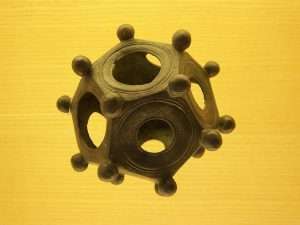 Roman dodecahedrons—more properly called Gallo-Roman dodecahedrons—are 12-sided hollow objects, each side pentagonal in shape and almost always contain a hole. The outer edges generally feature rounded protrusions.
Roman dodecahedrons—more properly called Gallo-Roman dodecahedrons—are 12-sided hollow objects, each side pentagonal in shape and almost always contain a hole. The outer edges generally feature rounded protrusions.
Most of the objects are made from bronze, but some are in stone and don’t have holes or knobs. The dodecahedrons are often fist-sized yet can vary in height from about 1.5 to 4.5 inches (4 to 11 centimeters). The size of the holes also varies, from 0.2 to 1.5 inches (6 to 40 millimeters). Two opposing holes typically are of differing sizes.
 Objects of this type were unknown until the first one was found in 1739 in Aston, Hertfordshire. In all, at least 116 have been dug up from sites as far apart as northern England and Hungary. But most have been found in Gaul, particularly in the Rhine basin, in what is now Switzerland, eastern France, southern Germany, and the Low Countries. Some were found in coin hoards, indicating their owners considered them valuable. Most can be dated to the 2nd and 3rd centuries A.D.
Objects of this type were unknown until the first one was found in 1739 in Aston, Hertfordshire. In all, at least 116 have been dug up from sites as far apart as northern England and Hungary. But most have been found in Gaul, particularly in the Rhine basin, in what is now Switzerland, eastern France, southern Germany, and the Low Countries. Some were found in coin hoards, indicating their owners considered them valuable. Most can be dated to the 2nd and 3rd centuries A.D.
In all, at least 116 have been dug up from sites as far apart as northern England and Hungary. But most have been found in Gaul, particularly in the Rhine basin, in what is now Switzerland, eastern France, southern Germany, and the Low Countries. Some were found in coin hoards, indicating their owners considered them valuable. Most can be dated to the 2nd and 3rd centuries A.D.
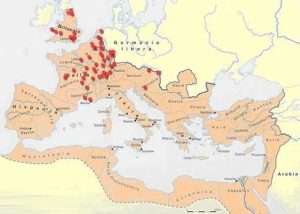 No mention of the dodecahedrons from Roman times has survived. Any theory as to their function is based solely on speculation....Intriguingly, archaeologists in the 1960s found similar objects along the Maritime Silk Road in Southeast Asia, except smaller and made of gold. They do not appear to predate the Gallo-Roman artefacts and may be evidence of Roman influence on the ancient Indochinese kingdom of Funan.''
No mention of the dodecahedrons from Roman times has survived. Any theory as to their function is based solely on speculation....Intriguingly, archaeologists in the 1960s found similar objects along the Maritime Silk Road in Southeast Asia, except smaller and made of gold. They do not appear to predate the Gallo-Roman artefacts and may be evidence of Roman influence on the ancient Indochinese kingdom of Funan.''
''Numbers show us that there is a harmony, a necessary sequence of facts and factors. Multiplication is never situated BEFORE division, just as addition can never precede this division and situates itself between division and multiplication." [Page 107 'The Egyptian Miracle: An Introduction to the Wisdom of the Temple' / R. A. Schwaller de Lubicz].
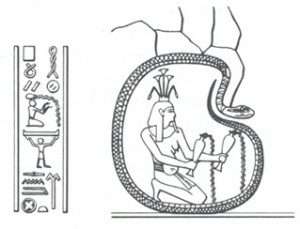 Analogy {i.e., something hinted at}: ''Although many authors envision no limit to this exaltation, we think that with some other philosophers that it would be unwise, at least as far as transmutation and medicine are concerned, to go beyond the 7th reiteration. This is the reason why Jean Lallemant and the Adept of Dampierre have only represented seven spheres or chestnuts on the motifs about which we speak. Unlimited for the speculative philosophers, the multiplication is however limited for practical considerations. The more the stone progresses the more penetrating it becomes and the quicker its elaboration; at each stage of augmentation, it only requires the eighth of the time required for the preceding operation.'' [Page 384 'The Dwellings of the Philosophers' / Fulcanelli].
Analogy {i.e., something hinted at}: ''Although many authors envision no limit to this exaltation, we think that with some other philosophers that it would be unwise, at least as far as transmutation and medicine are concerned, to go beyond the 7th reiteration. This is the reason why Jean Lallemant and the Adept of Dampierre have only represented seven spheres or chestnuts on the motifs about which we speak. Unlimited for the speculative philosophers, the multiplication is however limited for practical considerations. The more the stone progresses the more penetrating it becomes and the quicker its elaboration; at each stage of augmentation, it only requires the eighth of the time required for the preceding operation.'' [Page 384 'The Dwellings of the Philosophers' / Fulcanelli].
Limited/UNlimited in relation to Long Way or Short Way as a means....?
Hermopolis?
And/or: ''And so the matter destroyed, mortified, then recomposed into a new body, thanks to the secret fire which is aroused by the one of the furnace, gradually raises itself with the help of multiplications, up to the perfection of the pure fire, veiled under the figure of the immortal phoenix'' [Page 387. Same book].

Right or left hand? Dark or light? And/or: ''Where did the term turning the light around begin?'' [Chapter headed 'Turning the Light Around and Keeping to the Centre' FROM the book 'The Secret of the Golden Flower' / T. Cleary].

Expansion or contraction? Waiting for an eclipse?
A working example {if only from the Egyptian perspective}: ''The mystery of Khonsu plays a prominent role at Thebes....This Khonsu is somehow a new, spiritualised Atum, and this one will make Horus appear in all his glory {'boat of glass'?}....His symbols comprise all the scepters tied together, with the exception of the wadj, the sign of opening, an expansion that only Thoth of Khemenu {Hermopolis} can bring about. As crown, Khonsu wears a disc on a crescent, the representation of both New Moon and of eclipse, Moon and Sun united.'' [Page 196 'Sacred Science' / R. A. Schwaller de Lubicz].
External / Internal.
Inner-outer or Outer-inner?
The Wadj amulet (also known as the papyrus column or scepter) is an Ancient Egyptian amulet in the shape of a papyrus stem. These amulets were made out of turquoise feldspar[1] or Egyptian faience, as is indicated in the Book of the Dead.[2]
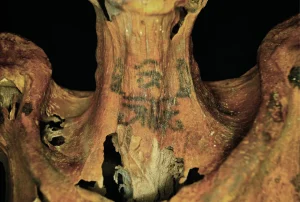
A heavily tattooed woman from Deir el-Medina. The Eyes of Horus and nfr tattoos on her neck mean ‘to work well’. 'Stretched'?
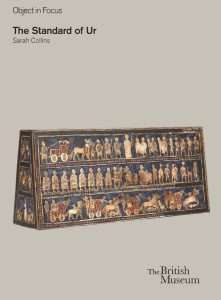
Also found near the neck/shoulder.
Though usually taking the form of a papyrus stem, they are also known to also encompass rectangular plaques with depictions of papyrus on them.[1] In Ancient Egyptian, the word wadj means "green," though it is also known to refer to health and to flourish in life.[3]
Wadj amulets were a symbol of eternal youth, and were often placed upon a dead body around the neck upon burial to ensure eternal youth in the afterlife.[2] The amulets have been dated to the Late Period of Egypt, specifically between the 26th and 30th dynasties (664–332 BC).[4] Spells from the Book of the Dead state that if a wadj amulet is found intact, the wearer is healthy in the afterlife.[1]
Welsh leek?
Something hinted at: ''Initiation is a kind of trial death, for in old days the candidate would be shut in a tomb {sarcophagus?}, or buried in a sealed vault {'kings' chamber?} for several days {Sed Festival?} or nights until he had a revelation, or the goddess of rebirth appeared to him and led him back to the light.'' [Page 72 'The Path Through the Labyrinth' / M. Green].
Moonlight?
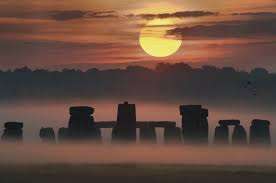
"The star {light} of ones being is rising."
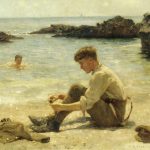 Side note: Picture of “Grey”, oil painting on canvas, by Henry Scott Augustus Tuke (York 1858 - Falmouth 1929), c. 1922.
Side note: Picture of “Grey”, oil painting on canvas, by Henry Scott Augustus Tuke (York 1858 - Falmouth 1929), c. 1922.
“Grey” is a pseudonym for T. E. Lawrence (Lawrence of Arabia) (1888-1935), who modelled for the picture. Tuke worked from multiple models for individual figures in his pictures. This is why the soldier looks strikingly like Lawrence, who tuned thirtythree in 1922, but is not a perfect resemblance. Lawrence modelled for at least two finished pictures by Tuke, including this one. He bought both pictures when they came on the market in 1926. He gave one of them away and kept the current picture (see Provenance).
...............
.........
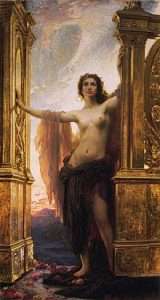
Goddess of Dawn. Gateway to the light.

The Roman Goddess of Dawn. Whose brother was the sun, and sister the moon. Painted by the same artist, as that of The Shepherds of Arcadia. Boehmes first book after twelve years was called Aurora, supposedly never 'finished'.
The soldier on the beach, getting undressed, is wearing the uniform of the Cornwall Royal Garrison Artillery which was amalgamated with the Royal Field Artillery in 1924. The uniform is identified by the badge on the cap which lies on the beach with his jacket {linen, wollen or silk?}. Another young man is already in the sea.
The date and signature on the painting have been scratched out, however the picture is likely to have been painted in 1922 because of its position order in Tuke's Register paintings now in the Tate Archive, which is broadly chronological. In June 1922, Lawrence was on holiday in Falmouth, where Tuke's studio was located.
It has previously been suggested that this picture was a preparatory work for an earlier Tuke painting, ‘Morning Splendour’ (exhibited 1921),which was later repainted by the artist with Lawrence's features. However, technical examination shows the work is not a sketch and was not begun as such. There are no extensive retouched or altered passages.

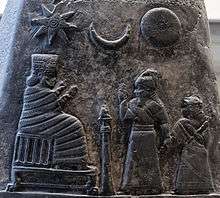 And/or: ''The moon's protective symbol, in the form of a horses head or a horseshoe, still appears on brass pendants, which are worn by our cart and draught horses. Many are just a sickle moon itself. Some importance may have been attached to the fact that when a simple representation of the moon is displayed, the horns are upward; when the symbol is a horseshoe the horns are placed downwards. One may attract the general bounty of the moon, while the other has more to do with the fertility aspect. An occasional brass may display a fish on its disc...not a Christian symbol but that of the moon goddess Astarte....The white horse was one of her symbols, and you must call it grey so as not to speak to her directly. If you see a grey horse, you can ask the moon for a wish, but you must do so before you think of the horses tail. Not only would it be disrespectful to think of that 'end' - it would also be useless if the goddess were turning her face from you.'' [Page 123 'GogMagog: The Buried Gods' / T. C. Lethbridge].
And/or: ''The moon's protective symbol, in the form of a horses head or a horseshoe, still appears on brass pendants, which are worn by our cart and draught horses. Many are just a sickle moon itself. Some importance may have been attached to the fact that when a simple representation of the moon is displayed, the horns are upward; when the symbol is a horseshoe the horns are placed downwards. One may attract the general bounty of the moon, while the other has more to do with the fertility aspect. An occasional brass may display a fish on its disc...not a Christian symbol but that of the moon goddess Astarte....The white horse was one of her symbols, and you must call it grey so as not to speak to her directly. If you see a grey horse, you can ask the moon for a wish, but you must do so before you think of the horses tail. Not only would it be disrespectful to think of that 'end' - it would also be useless if the goddess were turning her face from you.'' [Page 123 'GogMagog: The Buried Gods' / T. C. Lethbridge].
'Shades of Grey'?
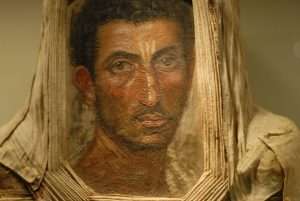
Face to face? With what?
'Horse blinkers' at Amarna?
''Sunshades''?
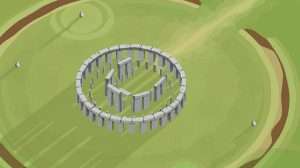 A working example: ''The sun shines at SUNRISE through Stonehenge - on the 21st June {summer solstice} from the N/E DOWN THE CAUSEWAY towards S/W- with the horseshoe in the middle facing the sun , {i.e., DOWNWARDS}. The winter solstice however is a complete REVERSAL. In December AT the winter SUNSET it shines from the opposite direction towards the horseshoe in the middle {facing UPWARDS}. This is probably the most important event of the two. Nowhere else does this happen anywhere with any other stone monuments. It only happens ''at the latitude of Stonehenge''. {i.e., midsummer sunset also matches midwinter sunrise, N/W - S/E}.'' [Malcolm Coe / Mirthy / Oct. 2022].
A working example: ''The sun shines at SUNRISE through Stonehenge - on the 21st June {summer solstice} from the N/E DOWN THE CAUSEWAY towards S/W- with the horseshoe in the middle facing the sun , {i.e., DOWNWARDS}. The winter solstice however is a complete REVERSAL. In December AT the winter SUNSET it shines from the opposite direction towards the horseshoe in the middle {facing UPWARDS}. This is probably the most important event of the two. Nowhere else does this happen anywhere with any other stone monuments. It only happens ''at the latitude of Stonehenge''. {i.e., midsummer sunset also matches midwinter sunrise, N/W - S/E}.'' [Malcolm Coe / Mirthy / Oct. 2022].
Above/Below the 'horizon' to enlarge.
Question. What about the Equinoxes?
And/or: 'The 'rose' that blooms at the center of the 'cross' = Beaker People?
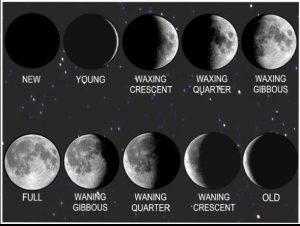 And/or: ''Ptolemy decided to regularize the distribution of the signs between the four 'elements' {fire, earth, air and water} and the three 'qualities'....The three qualities were derived from Ptolemies system of measuring the zodiac from the solstices and equinoxes. The most important signs were those that followed on the cardinal points, and were called Cardinal; they were said to act of themselves. Next came the Fixed signs, which were 'stable' rather than active, and finally the Mutable or Common signs, which depended on the action of others {synchronistic?}. The 'Virgin' is one of these....'' [Page 41 'The Origin of the Zodiac' / R. Gleadow].
And/or: ''Ptolemy decided to regularize the distribution of the signs between the four 'elements' {fire, earth, air and water} and the three 'qualities'....The three qualities were derived from Ptolemies system of measuring the zodiac from the solstices and equinoxes. The most important signs were those that followed on the cardinal points, and were called Cardinal; they were said to act of themselves. Next came the Fixed signs, which were 'stable' rather than active, and finally the Mutable or Common signs, which depended on the action of others {synchronistic?}. The 'Virgin' is one of these....'' [Page 41 'The Origin of the Zodiac' / R. Gleadow].
''Three and four'' / ''Quality/quantity'' / ''Static {'Fixed'?} / Dynamic ….as a means....?

''The four armed dancing god Shiva - a work about the 64 pleasures of Shiva.'' ['Mystery of Numbers' {'4'}].
Question. {4x4x4}?
The 64 million dollar question...
Landscape equivalent? The 63 tombs found in the Valley of the Kings. That final {'lost'?} one = Akhenaten? Enlarged elsewhere.
Refresher: ''Unique in Copán is the high hieroglyphic staircase, measuring 20 meters long and 10 meters wide. The staircase consists of 63 steps and contains more than 1800 hieroglyphics, that together form the longest known Maya hieroglyphic text and longest text ever found.''
Side note {i.e., something to ponder on}: "Who but I can unfold the secrets of the unhewn Dolmen?
Who but I can make known the ages of the 'moon'?
Who but I can show the secret resting place of the 'sun' {Aten?}.''
From the Song of Amergin. Try ''Altar of witness'' / ''Altar of sacrifice''.
 Continued: "In some literature, this secret center {i.e., 'minds eye'} is described as a flower, or lotus, with sixtyfour petals..." ['The Zelator'].
Continued: "In some literature, this secret center {i.e., 'minds eye'} is described as a flower, or lotus, with sixtyfour petals..." ['The Zelator'].
Side note: ''The flowering plants also known as angiosperms, angiospermae, or Magnoliophyta are the most diverse groups of land plants with 64 orders, 416 families, approximately 13,000 known generations and 300,000 known species'' {Wiki}.
Coincidence or a meaningful one?
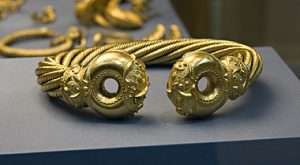
Eight strands each. Sixtyfour in total.
As is: ''The text is an inventory of sixtyfour locations; 63 of which are treasures of 'gold' and 'silver', which have been estimated in the tons. For example, one single location described on the copper scroll describes 900 talents (868,000 troy ounces) of buried gold. Tithing vessels are also listed among the entries, along with other vessels, and three locations featured scrolls. One entry apparently mentions priestly vestments. The final listing points to a duplicate document with additional details. That other document has not been found.'' [Wiki. Emphasis, this readers].
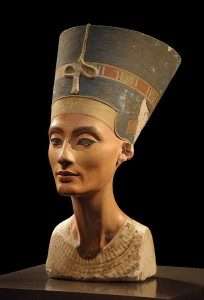
Left or right eye?
A working example: ''When Horus lost his 'eye' to Set, the god Djehuti {'wisdom'} - found it and turned it into the 'Moon'. When the parts of the eye are added up it gives the answer 63/64 which approximate the whole number 1. One is the number which symbolises oneness, wholeness, all sight, all knowing, the Absolute...." [Page 95. Same book].
Side note: ''Albert Einstein's surname when translated into English is - One Stone...'' ['The Chase' / 2018].
Continued: ''Should we therefore decide to meet the demands of this 'higher being of light' {guardian of the gate?}, we will be able to contribute to the liberating of the human race. We will then offer up our 'gifts' and talents on the sacrificial altar of humanity. But if we prefer our own premature ascent....'' [Page 204 'How to Know Higher Worlds' / R. Steiner].
''The Magdalene'' to enlarge.
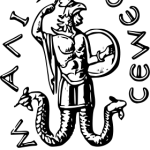
Rooster headed Abraxas.
From a different perspective: ''As an emblem of the first matter, the beehive can often be seen in decorations that borrow their elements from the science of Hermes. We have seen it on the ceiling of the Hotel Lallemant and among the panels of the alchemical stove of Winterthur. It also occupies one of the squares of the Game of the Goose, a popular representation of the labyrinth of the secret Art and collection of the main hieroglyphs of the Great Work....The Game of the Goose also sounds like the Game of the Law in French - could be compared to snake and ladders. There is a spiral drawn on a board resembling the labyrinth on the floor of the Cathedral of Chartres - with 63 boxes. The idea is to get to the center of the spiral.'' [Page 395 'The Dwellings of the Philosophers' / Fulcanelli].
Question. How many ''boxes'' were found under the middle 'bed' in the tomb of Tutankhamun?
Look carefully. Nothing haphazard. Everything stacked LEFT TO RIGHT. The ''golden child'' looking out from beneath - in the same direction.
If some are missing where will they be found. With the heart?
As above so below.
Side note: ''Unique in Copán is the high hieroglyphic staircase, measuring 20 meters long and 10 meters wide. The staircase consists of 63 steps and contains more than 1800 hieroglyphics, that together form the longest known Maya hieroglyphic text and longest text ever found.''

Leading by example? Cant they do anything beyond a visit and handshake considering all the inherited land and wealth that they have? Kingship?
Continued: Sixtyfour ships found on the sea bed - many purposely fixed in the 'ritual' sense of the word - where the city of Heracleion once stood. 'Kingship' its prime purpose.
''Initiation into spiritual life is the process of learning an art of living {by way of that universal ''bit''?} - which leads to freedom even while involved in the world. Your goal is to become as the lotus which rises up from the muddy waters, able to exist in the world without being soiled by it....Spiritual realization requires sustained effort over a period of time....directed towards overturning the mountainous creations {'Giants'?} which the mind has produced in the past due to ignorance. The mind is like a river; Ignorant ideas are like logs, rocks, branches and dams - which block , divert or distort the {natural?} flow of water {river cataracts?]. With the correct understanding and disciplines - the obstacles can be removed allowing the river of the mind to flow freely toward the ocean of self discovery." [Page 30 'Egyptian Book of the Dead' / M. Ashby].
'River' and 'Seas' as a means...?
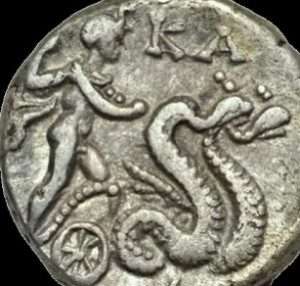 Side note: Two serpents inscriptions found near the oldest harbour in the world - carved on large ''monumental stone blocks'' - 40 miles east of the Sphinx - a few miles away from the 'Reed Sea'. Those large stones used to seal the openings of caverns which contained among other things {i.e., vats/vases / and the OLDEST papyrus found anywhere in the world} - wooden ship remains. Chambers manmade with high ceilings - cube shaped - called ''underground boatyards'' - identified as belonging to Khufu {who is identified ''with the ram''} - simply because same inscription found on his pyramid at Giza - ''King Khufu brings 'it eats two snakes'. The narrator concludes that this is the translation of what was probably at the head of the ships prow. ['Blowing up History: Egypt's Sunken Treasures' / 24.1. 21].
Side note: Two serpents inscriptions found near the oldest harbour in the world - carved on large ''monumental stone blocks'' - 40 miles east of the Sphinx - a few miles away from the 'Reed Sea'. Those large stones used to seal the openings of caverns which contained among other things {i.e., vats/vases / and the OLDEST papyrus found anywhere in the world} - wooden ship remains. Chambers manmade with high ceilings - cube shaped - called ''underground boatyards'' - identified as belonging to Khufu {who is identified ''with the ram''} - simply because same inscription found on his pyramid at Giza - ''King Khufu brings 'it eats two snakes'. The narrator concludes that this is the translation of what was probably at the head of the ships prow. ['Blowing up History: Egypt's Sunken Treasures' / 24.1. 21].
Ship in excess of 1000 parts found buried next to GT. Pyramid. Made of cedar. Ropes wet when first found. Mud remains found. Back of boat = east. Front = west.
Horizon symbol {solstice} between Khufu/Khafre pyramids - looking {'leading'?} from the east. Therefore E/W orientation. Menkaure {'offset' pyramid} - the ONLY Pharaoh to have positive attributes associated with his name. S-N?
Try Smith/Jones to enlarge.
''In the decimal system, 1000 is, predictably, the all-embracing number. ''A thousand years are before you like a day...'' [Page 277 'Mystery of Numbers' / A. Schimmel].
''Westward leading still proceeding - guide us to .....''
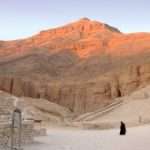

"Walking to the left towards the rising sun." And/or: "The Walking Liberty half dollar is a silver 50-cent piece or half dollar coin that was issued by the United States Mint from 1916 to 1947; it was designed by Adolph A. Weinman, a well-known sculptor and engraver. In 1915, the new Mint Director, Robert W. Woolley, came to believe that he was not only allowed but required by law to replace coin designs that had been in use for 'twentyfive' years." And/or: The 'pedestal' of which the Statue of Liberty is built upon was an 'Old Fort' with a surround of an 'eleven' pointed star. The only 'fortress' of its kind in America. Concrete 'twenty' foot deep and weighing 'twentyseven' thousand tons. ['Blowing Up History' / S3 EP4].
''Carapace'' and/or ''open entrance''?
Quail to enlarge.
 Working example: ''Akhenaten's god could be accessed directly , through the open temple roof. The benben - a solar cult object {pyramid shape therefore 'fire' link i.e., 'pyr'} - associated with Ra of Heliopolis since the start of the dynastic age - offered an alternative focus of worship. Over the centuries the benben had varied in appearance from temple to temple, it might be a cone or pyramid shaped structure, an obelisk, a boulder or even a meteorite. The Amarna benben has not survived, but images in the elite tombs suggest that it was a large, round topped stela which stood on a raised platform next to a large statue of a seated Akhenaten.'' []age 40 'Nefertiti's Face' / J. Tyldesley].
Working example: ''Akhenaten's god could be accessed directly , through the open temple roof. The benben - a solar cult object {pyramid shape therefore 'fire' link i.e., 'pyr'} - associated with Ra of Heliopolis since the start of the dynastic age - offered an alternative focus of worship. Over the centuries the benben had varied in appearance from temple to temple, it might be a cone or pyramid shaped structure, an obelisk, a boulder or even a meteorite. The Amarna benben has not survived, but images in the elite tombs suggest that it was a large, round topped stela which stood on a raised platform next to a large statue of a seated Akhenaten.'' []age 40 'Nefertiti's Face' / J. Tyldesley].
Side note: The English word 'focus' comes from the Latin for 'fireplace'. ['The Chase' / ITV / 31.1.22].
Hestia to enlarge.
AND/OR: EXERCISE 8 THE SHEPHERD OF STARS:
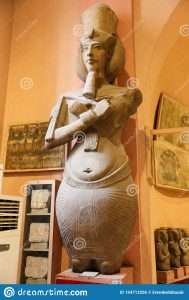

Triangular headgear or tumulus/pillar? White Crown?
The ultimate ideal is for every human being to be psychically androgynous’ -not, we note, physically so. The meaning of this dictum can be realized within the following exercise. In exercise 6, you experienced the elements and learned to integrate them; in this exercise you learn to balance the male and female halves of your inner nature. Seated in meditation, visualize this scene before you. You are standing, as it were, at the edge of the world. Before you are the two equilibrated pillars, to your left the white pillar — the merciful pillar of the Tree of Life, denoting the divine Masculine energy which is positive and outer in its effect. To your right is the black pillar, the Pillar of Justice on the Tree of Life, denoting the power of the divine Feminine which is inner and negative in its effect . (Though not in any malign sense; negative here means restrictive - the polarized opposite of positive outflowing energy ). Behind the pillars is a vast night sky of deep indigo in which are the stars and planets, the heavenly bodies appear to have eternal stillness and yet to spin on their axes at the same time.

"The stone which fell from heaven — the proto-Grail — is matter, personified by its guardian, the Anima Mundi or Sophia. Only when the quintessentia embraces the prima materia can the stone which is rejected become the keystone of creation. The Rosicrucian alchemists were correct in their appaisal of Christ as the philosopher’s stone because he, of all created humanity, has achieved not only birth and death, but also resurrection in his created body . The mysterious encounter of Christ in the depths of the Underworld which brought about the Resurrection can only be guessed at; he brought his heavenly light, like that Star of Bethlehem at the place of his birth, into the darkness of the tomb. As one in human flesh, he embraced the human condition of death and dissolution, making it his sister and bride. Thus the laws of nature were altered in an inapprehensible way. The Shroud of Turin bears the imprint of this mysterious encounter — of which the initiate should be loath to speak to the unwise." {same}.
Begin by concentrating upon the individual force of the pillars if it helps, rehearse the symbolism of a mythos you feel at home with and transfer its energy to the pillars, in order to focus on their effect. Do not hurry, allow the polarized forces to rise. Without touching either pillar, feel their interlocking energies as a magnetic field which is almost tangible.

The middle ground.
When the power is stabilized and firmly established, visualize the power of each pillar emanating as a ray, like the beam of a spotlight, into the heavens beyond you.
At the point where the rays intersect a naked figure stands in an oval of polarized light. It is an adrogyne, formed of the dual energies — one half female, the other half male — either side of the body is composed of a completely perfect man and a completely perfect woman. The figure is beautiful with the power and purity of an angel, yet it is the sum of the pillar’s energies in human form. A rainbow scarf swathes the body lightly. It is sufficient to visualize the scene above, as you stand before the pillars, allowing any realizations to rise from within. But you may wish to go a stage further. The initiate of the mysteries has to ‘pass between the pillars' or die to the world, in the mystical sense......

Shepherd Kings?
The uninitiated can only read this mystery at its face value, perceiving the loss and sacrifice implied in this symbolic action. Yet the initiate gains more than is sacrificed at the dedicatory altar. The androgyne which stands behind the pillars is your potential self, perfected and balanced. When the time is ripe, and you feel prepared, step between the pillars, take the step forward into space, and stand in the twin rays. You are identifying with the potential and essential nature of the whole earth, representing its place in the cosmos as a balanced and thriving unit. As you stand in the starry vault, receiving the power of both pillars, before you appears the Shepherd of Stars, the guardian of flocks. He says, ‘I am Alpha and Omega, the Guardian of the Gates, the Keeper of the Keys of Time ’.
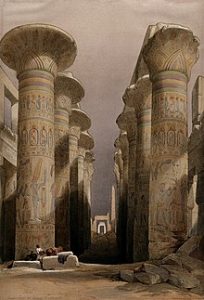
Mountain low, Valley high.
Side note: Although a group of cattle is generally called a herd, a group of Highland cattle is known as a "fold". This is because in winter, the cattle were kept in open shelters made of stone called folds to protect them from the weather at night.[8]
In 1954, Queen Elizabeth II decided to keep a herd of Highland cattle at Balmoral Castle where they are still kept today.[9][10]

“Most certainly, I tell you, one who doesn’t enter by the door into the sheep fold, but climbs up some other way, is a thief and a robber."
CONTINUED: Meditate upon his words, listen to any other words he may have to tell you. Beyond this point you may not go. Visualize yourself back before the pillars, feel the power return to the pillars and their force shutting down for this time. Seal off, in your usual way, making sure you are well earthed. If you have a tarot pack of the more traditional kind you may find it helpful to contemplate trump twentyone, the World, on which the androgyne appears, The Shepherd of Stars will appear in whatever shape is appropriate to your needs." {Pages 415-7 'The Western Way'}.

Breast feeding? Phoenix to enlarge.
Side note: ''NEW ORLEANS -- The New Orleans World's Fair has inspired an exhibition about the place in American history of the French king Louis XIV. It is one of the the nation's major cultural events for 1984....A must for fair-goers with an interest in art and the Colonial period when France ruled Louisiana, 'The Sun King: Louis XIV and the New World' opened at the Cabildo building on Jackson Square in the French Quarter April 29. It will be on exhibit there until Nov. 18. 'We're trying to tell the story of a great man, for whom Louisiana is named, whose rule fostered an environment of intense creativity and artistic achievement,' explained Robert R. MacDonald, director of the Louisiana State Museum. 'This is a humanistic exhibition.'' ['New York Times'].

S/E as a start point.
''Louisiana was named after Louis XIV, King of France from 1643 to 1715. When René-Robert Cavelier, Sieur de La Salle claimed the territory drained by the Mississippi River for France, he named it La Louisiane.[22] The suffix –ana (or –ane) is a Latin suffix that can refer to "information relating to a particular individual, subject, or place." Thus, roughly, Louis + ana carries the idea of "related to Louis." Once part of the French colonial empire, the Louisiana Territory stretched from present–day Mobile Bay to just north of the present–day Canada–United States border, including a small part of what are now the Canadian provinces of Alberta and Saskatchewan.''
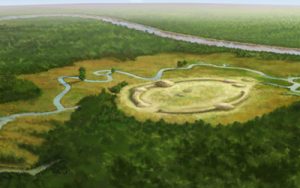
Artsists conception of Watson Brake, an archaeological site in Ouachita Parish, Louisiana that dates from the Archaic period. The oldest earthwork in North America, it was built and occupied 3500 BCE, approximately 5400 years ago.
''The area of Louisiana is the place of origin of the Mound Builders culture during the Middle Archaic period, in the 4th millennium BC. The sites of Caney and Frenchman's Bend have been securely dated to 5600–5000 BP (about 3700–3100 BC), demonstrating that seasonal hunter-gatherers from around this time organized to build complex earthwork constructions in what is now northern Louisiana. The Watson Brake site near present-day Monroe has an eleven-mound complex, it was built about 5400 BP (3500 BC).[23] These discoveries overturned previous assumptions in archaeology that such complex mounds were built only by cultures of more settled peoples who were dependent on maize cultivation. The Hedgepeth Site in Lincoln Parish is more recent, dated to 5200–4500 BP (3300–2600 BC).''
And/or: ''In French, fleur-de-lis literally means "lily flower". It may come as no surprise that an emblem found all over the state of Louisiana has its roots in a flower from French culture, stemming from the French colonization of the Americas, particularly present day Louisiana.''
''Clover'' to enlarge.

'light oxen': "I bring up an individual type as a point of departure to talk about. The one {'emotion'?} that is strongest will pull you first." [Page 4 'Stopping and Seeing' / Translated by T. Cleary].

Dresden {Saxony} Germany. Rooster on top. Rooster also on top of Notra Dame roof. 'Forest of oaks'.
And/or: ''Accompanying King Louis {earlier king}, and Queen Eleanor, on their Crusade in 1147 were the Knights Templars....Around this time King Louis adopted the fleur de Lys as his heraldic device. This was probably the symbol {'key'?}, of an even more secret order than the Templars...'' [Page 245 'Magi: The Quest for a Secret Tradition'].
Side note: ''This strange stone tower built in the shape of a four leafed clover - on top of a STEEP mound of earth - in the middle of an ancient walled city. It is one of the most unusual fortresses in Britain. York Castle, has been the center of royal power in the north of England for at least 1000 years. In fact, its significance goes back even further for 2000 years.....Constantine the Great, who converted his empire to Christianity - proclaimed himself Emperor at York.'' ['Secrets of the Great British Castles: York' / SkyHist / 2016].
Recall the three {or was it four} leafed {clover?} flower at the base {'foundation'} of a Mayan/Aztec temple.

Round the corner from....?
N.B. York = N/E of these Islands WHICH are the N/W 'tip' of Europe.
'Peninsula'?
Question. Did anyone proclaim themselves emperor at Colchester?
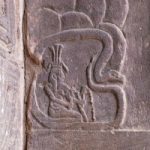
One or two?
Continued: ''The results of the survey were amazing: they show that the pyramid builders intervened in the flood plain as dramatically as they built on the high plateau.....they cut a huge basin up to the Sphinx...like a peninsula.''
Square of Pegasus?
''Whenever you see in ancient Egyptian civilization - buildings that are built on a colossal scale- you also see water transport infrastructure on a colossal scale.''['Blowing up History'].
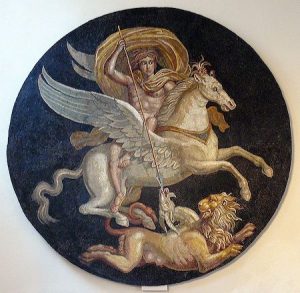 The symbolism of Pegasus, the hoofed master of the ground and winged master of the air, continues to represent speed, strength, and artistic inspiration. Encompassing beauty and a sense of majesty, it is a guide for humankind beyond the physical world to the realm where the spirit can soar without limit....the immortal winged horse that sprang from the blood of the slain Medusa; was tamed by Bellerophon with the help of a bridle given him by Athena; as the flying horse of the Muses it is a symbol of highflying imagination.
The symbolism of Pegasus, the hoofed master of the ground and winged master of the air, continues to represent speed, strength, and artistic inspiration. Encompassing beauty and a sense of majesty, it is a guide for humankind beyond the physical world to the realm where the spirit can soar without limit....the immortal winged horse that sprang from the blood of the slain Medusa; was tamed by Bellerophon with the help of a bridle given him by Athena; as the flying horse of the Muses it is a symbol of highflying imagination.
Continued: ''Horus and Set join forces to tie up the symbol of union {Sema}. This symbol refers to the union of Upper {Lotus} and Lower {Papyrus} Egypt - under one ruler - but at a more subtle level it refers to the union of lower/higher self - both an integral part of the Book of the Dead. [Page 43. Same book].

A 'square' or 'round' center {eye?} as compared to {say} the Aten disc? Any 'helping' hands? And/or: Why eleven? Pure 'chance'?
"The Shabaka stone measures 92x137 centimeters and has sixtyfour lines of hieroglyphic text carved on it....Text been worn away - apparently it was used as a millstone....Possibly copied from a much earlier source....The actual stone itself from the reign of King Shabaka from within ''the house of his father Ptah-south-of-his-wall {Memphis}. Original ''Worm-eaten'' and copied ''so that it could be understood from beginning to end. His majesty copied it anew {'Phoenix'?} so that it became better than it had been before''. ['Page 69 'Imhotep the African']. Try ''worm''.
Grey Worm? {Game of Thrones}.
Question. S/W OR S/E? Memphis on the West side of the river. Amarna the East. While recalling those walls made of 'mud' not stone. As a means...?
And/or: "The base of the Step Pyramid is not quite square and, oddly, not at the exact center of the enclosure. Rather, it is offset a few dozen meters toward the East." AND ''Deviates from true north'' {by almost 5 degrees}. Same book.
Question. Are the other pyramids not ''true'' to North? Especially the ''Red'' one? From ''S-N'' as a means...? If only in the Micro {'individual'?} sense of the word. Giza = Macro.
Valley/Plateau as a means...?
And/or: What was found under that same structure.

Offset?
 REFRESHER: "The potential literature for an intellectual study of this is vast. We hope we have provided a few simple pointers on the way. It is however, a 'centering' in, rather than a wandering in the labyrinthine fields of intellectual speculation, that is the direct way of truth. The 'rose' blooms at the center of the cross. And those who are prepared to contemplate the imagery and take it unto their inmost hearts are the more likely to be met by Beatrice from the triumphal car {'chariot'}, and 'led' to places where even the intellectual genius of a Virgil cannot go." [From the book by G. Knight].
REFRESHER: "The potential literature for an intellectual study of this is vast. We hope we have provided a few simple pointers on the way. It is however, a 'centering' in, rather than a wandering in the labyrinthine fields of intellectual speculation, that is the direct way of truth. The 'rose' blooms at the center of the cross. And those who are prepared to contemplate the imagery and take it unto their inmost hearts are the more likely to be met by Beatrice from the triumphal car {'chariot'}, and 'led' to places where even the intellectual genius of a Virgil cannot go." [From the book by G. Knight].
''Bosom'' link?
And/or: "Sirius is sometimes called the 'Sun behind the sun', indicating that while the star we call the Sun is related to our physical center of Self in our Solar Plexus and the expression of our Selves within the physical earth, Sirius represents a more hidden center." ['Red Tree, White Tree'].
Geocentric?

light oxen.

"Behind Will, stands desire."
As a working {hypothetical?} example: ''In closing the introduction of this study of zodiacal signs we should ask the reader to remember that these studies will consider the zodiac as a fundamental factor in astrological interpretation; as an actual 'field' {i.e., EGYPTIAN equivalent = ''running the fields''?} of structuring energies surrounding and pervading the earth and all its inhabitants. We shall see zodiacal signs as definite types of energies {as an example}...the Sun, when passing through a zodiacal 'sign', acts in a way, any other planet acts. It is merely the central planet, the most powerful agent acting upon the electromagnetic field of the Earth. Thus when the sun is at 'birth' in {say, Taurus}, the organic functions represented in any organism by Taurus can be considered as those receiving the largest share of vital energy and commanding the native's strongest powers of attention. The 'Taurus' function is shown to be the central function of the organism - and NOTHING more.'' [Page 15 'The Zodiac and the Universal Matrix' / Dane Rudhyar].
And/or: ''....On this battlefield {'struggle' link} previously unacknowledged parts of oneself demand to be recognised - demand 'a place in the sun'....." [Page 15 'The Lover and the Serpent' / Llewellyn Vaughan-Lee].
All as a means....?
Try 4:3 / 4:5 / 5:6 to enlarge.
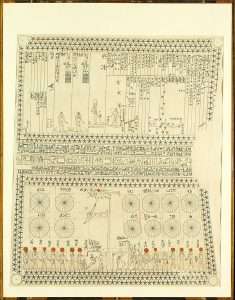
Astro ceiling in Senenmut bare tomb chamber. 'Folded' / UNfolded?

American / UN-American? WHO exactly are HIS ancestors?
Continued: "The Maya developed a complete complex writing system, 1 of only 5 in the history of the world. It is composed of over 800 symbols called hieroglyphs. They wrote on paper made from the inner bark of the fig tree covered with lime plaster, using lime based pigments. These codices could reach up to 22 feet long, and were folded accordion style, making pages. In the 16th century, the Spanish burned every codex they could find, along with anyone who could read or write. By the 18th century, all knowledge of the script was lost. Of the prolific output of the ancient Maya scribes, only 3 examples survive to the present day. Today's Maya are completely cut off from the written words of their ancestors, since all 3 are held captive in Europe. All are in poor condition as they have not been well cared for...
...Fortunately, Maya writing is also found carved in stone. One of the best examples was found by Jose Calderon when he stumbled on the jungle city of Palenque, Mexico in 1746. He found the 3 carved panels in the Temple of the Inscriptions, which contain a total of 640 glyphs. John Lloyd Stevens found, and bought, Copan, Honduras, in 1839. That fifty dollar purchase included the Hieroglyphic Stairway, where its 2200 glyphs make it the longest pre-Colombian stone inscription in all the Americas. [www.atitlan.net/maya/mayan-writing.htm].
Coincidence or a meaningful one? Among others try ''800'' / ''22'' / ''3'' / ''lime''{stone} and especially ''fig tree'' - in order to evaluate one way or the other {i.e., that ''inner'' stuff?}.
Side note: In the region of the Arctic what is known as the Midnight Sun sets - for the first time - below the horizon in sixtyfour days. ['Orbit: Earth's Extraordinary Journey' / Episode 2]. Coincidence or a meaningful one, i.e.,does subject material define 'natural phenomena' only - or is natural phenomena used to define 'subject' material? Try ''midnight''.
A work in progress: ''Secret Solstice is an Icelandic music festival which showcases both established artists as well as exciting up-and-coming talent over the course of four days in the 'twentyfour' hour midnight sun during the summer solstice.''
''It is because there was once darkness at noon {'zenith'?} that we can now speak of the sun at midnight." {Back cover to the book 'The Sun At Midnight' / Bernardo Olivera, Ocso}.
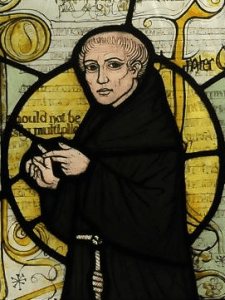
Mr William Ockham. In profile or face on? Left - right or right to left?

East or west? Strong or weak?
And/or: "The planet 'Jupiter' called the ''greater fortune'' is complementary to Venus the ''lessor fortune'', just as the direction West is complementary to East. West is the place of the sunset, and it consequently represents the completion of enterprises, just as East symbolises their beginnings. A man is said to be 'successful' when he has all the details of his enterprise in his ''grasp'' {Kaph}….The old astrologers held that Jupiter's influence in the horoscope does not become strong until after middle life, when the sun of personal existence has passed noon zenith and is moving towards 'Wealth' and 'Poverty'; these are the extremes of worldly fortune, the outward and visible signs of a means 'grasp' of circumstances {'gathering'?}. When Jupiter is well-aspected in a horoscope that grasp is strong. When it is ill-aspected that grasp is weak." [Page 92 of the book by P. F. Case. Vol 1].
Side note: ''The Mount of Jupiter. This Mount is located at the base of the first or Index Finger. It extends downwards up to the Head Line and sidewise up to the percussion of the hand. The Mount of Jupiter represents power, leadership, authority and wisdom and godly qualities.''
''lucky/unlucky''.
''The triangle is a percussion instrument that is made of a steel rod bent into the shape of – you guessed it – a triangle. And, as a percussion instrument, it is struck – most commonly with a metal beater, to give the instrument a bright, ringing tone.''
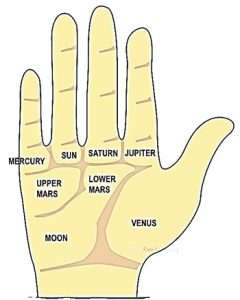 "In the Pagan Mysteries, beginners were known as 'mystae', meaning 'those with eyes closed', and enlightened initiates were known as 'epopteia' meaning, 'those who can see'." [From the book by T. Freke and P. Gandy].
"In the Pagan Mysteries, beginners were known as 'mystae', meaning 'those with eyes closed', and enlightened initiates were known as 'epopteia' meaning, 'those who can see'." [From the book by T. Freke and P. Gandy].
Apply it to: "But none of these comparatively northern streams suit the stellar position of our Eridanus, for it is a southern constellation, and it would seem that its earthly counterpart ought to be found in a corresponding quarter = the Nile, the only noteworthy river that flows from south - north, as this is said to do when rising above the horizon...Caesius thought our Eridanus was the sky representation of the Jordan, or the Red Sea, which the Israelites passed over - as on dry land." ['Star Names and Their Meaning'].
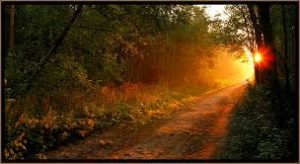 From a different perspective: "Astrology, being a system of symbolic interpretation of significant astrological facts, must obviously differentiate strongly between the Sun - a life - and light giving star which is the center of the astronomical system to which we belong - and planets which are merely reflectors or transmitters of light, and of which the Earth itself is one. If we refer to the Ego as ''a complex of representations which constitute the center of my field of consciousness and appears to possess a very high degree of continuity and identity'', it is clear that the astrological symbol thereof {geocentric?} is the Earth itself as seen from the birth place of the native. The continuous field of consciousness of any man is what is contained within the boundaries of his horizon, and by implications what, though below the horizon, will emerge into the field of his consciousness. In other words , the quadrature of the astrological chart {horizon and meridian - and especially Ascendant and Mid-Heaven} represents the form of the field of consciousness. The ego may be considered as the birth point itself, the center of the chart - or, in an even more accurate symbolism - the apex of the pyramid built on four angles of the chart...." [Pages 219-20 'The Astrology of Personality' / Dane Rudhyar].
From a different perspective: "Astrology, being a system of symbolic interpretation of significant astrological facts, must obviously differentiate strongly between the Sun - a life - and light giving star which is the center of the astronomical system to which we belong - and planets which are merely reflectors or transmitters of light, and of which the Earth itself is one. If we refer to the Ego as ''a complex of representations which constitute the center of my field of consciousness and appears to possess a very high degree of continuity and identity'', it is clear that the astrological symbol thereof {geocentric?} is the Earth itself as seen from the birth place of the native. The continuous field of consciousness of any man is what is contained within the boundaries of his horizon, and by implications what, though below the horizon, will emerge into the field of his consciousness. In other words , the quadrature of the astrological chart {horizon and meridian - and especially Ascendant and Mid-Heaven} represents the form of the field of consciousness. The ego may be considered as the birth point itself, the center of the chart - or, in an even more accurate symbolism - the apex of the pyramid built on four angles of the chart...." [Pages 219-20 'The Astrology of Personality' / Dane Rudhyar].
A mind set?


Above or below? In profile or face on? And/or: "Thus from the moment that Providence determined a principle of social state among men, there was necessarily a principle of property; for the one could not possibly exist without the other. The first instinctive sensations of which the Kingdom of Man may have consciousness are to enjoy and possess for the man and to possess and enjoy for the woman; it is even from this very contrast, as I have shown, that the first emotion which causes all the rest issues." {Page 58 'Hermetic Interpretation of the Origin of the Social State of Man'}. 'Light oxen' to enlarge. 'Wagon'?
And/or: " The horizon is the line of awareness {manifest?}. It is so according to the most obvious logic of symbolical significance; for it differentiates the two most fundamental types of awareness. ABOVE THE HORIZON is everything that can be perceived by the senses. BELOW THE HORIZON is the realm of this interior awareness, which Jung rightly calls ''intuition''. INTUITION is the faculty of awareness through which we perceive INNER facts {Gnosis?}. Sensation is the awareness of the not-self - of others. As the 'Ascendant' is the seed - point of the lower hemispheres, it takes on necessary the meaning of pure self awareness. The Descendant being the seed - point of the upper hemisphere, is the symbol of awareness of others. This intuition and sensation are seen as two complementary factors, related respectively to East and West. One becomes aware of one's own existence as an ''I'' by an interior process which is intuition, whereas sensation is the result of an awareness of outer causes attributed to sense impressions." [Page 177. Same book].
''Running the Fields'' ? And/or: Recall the two types of 'soil'/'seed' found at Denderah /Egypt.
And/or: "The cusp of the 1st and 7th houses represent the position of the horizon, as it actually is at the time of the first breath. The line of the cusps of the 2nd and 8th houses represents the position of the horizon two hours afterwards....We will see the significance of this conception as we come to study the 28 year cycle of unfoldment of the individual self.
'Mans Search for Meaning' / Viktor Frankl.
'Saturn' link?
Think about all the above in relation to that universal ''bit'. In the INNER sense of the word.
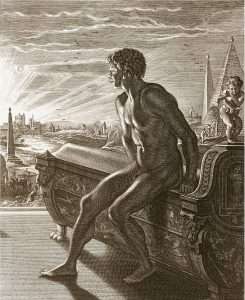
Memnon. What's the common factor?

A beginning or end?
Analogy of same?..."Alongside other evidence of the social and religious organisation of the period, the names of the 1st Dynasty kings were enshrined in a medical treatise and in two of the formulae of the Book of Coming Forth into Day, of which this is one: 'This formula has been found in the foundations by a chief mason {Hiram Abiff link?} in the time of his Majesty of Upper and Lower Egypt, Semti the Justified. It was a secret guide which had never been seen nor glimpsed. The recitation of Chapter sixtyfour of this Book enabled the deceased to come and go at his pleasure and assured immortality to his soul, on condition that it be read when one was pure and spotless." [Extract from the book by L. Lamy. Enlarged elsewhere].
'Justified and Ancient' / The KLF. ''Fishing in the rivers of life.''
''The swan is white without spot..." quote by Leonardo da Vinci.
"In Greek mythology the swan was the bird consecrated by Apollo; the symbol of harmony..."
''Pure'' in relation to 'natural' - {as a means}. Try ''pure'' {throughout} to 'see' it in all its manifestations - if only in defining subject material.
Question. 8x8x8 = 512. Relevant to anything? If only within this subject.
"The beginning of wisdom is the most sincere desire for instruction, and concern for instruction is love of wisdom....for she is a reflection of eternal light, a spotless mirror of the working of god, and an image of his goodness.'' [Wisdom of Solomon 6,17].
Anima or ?
S/W or S/E?

'The Flower of Life' - 'nineteen' circles - 'Includes' the major points of the 'compass' {cross?} - all in three's? Side note: On top of the very first coffin {of three} was found a circlet of withered flowers {lotus?} in the middle of his forehead. Those 'three' were surrounded by 'four' golden shrines. Question. At what age did Tutankhamun ''die''? PRIOR TO A REBIRTH.
"In antiquity, the practice of animating temples, bas reliefs, and statues was conceived of as both an art and science. In its scientific aspect, the art of animating statues drew upon the ancient canon of proportion, itself based on those ubiquitous geometrical ratios which underlie the forms of nature and the unfolding patterns of life. In the 'Laws' 656D, Plato refers to the canon of music and proportion which maintained the integrity of Egyptian art for no less than 10,000 years... The ultimate origins of the canon remains mysterious; evidence of its use is very early... The existence of such a canon is confirmed by the research of archaeologists and universally accepted by all Egyptologists. There were two Egyptian canons: the earliest divided the height of the human being into 19 squares; the later canon was based on a division of twentytwo squares. These canons provided a framework for Egyptian artists when rendering the human form and the 'forms' of the gods... Interestingly the 19 square Egyptian canon was taken over by the early Greek artists and sculptures, as has been shown by the studies of archaeologist Elanor Guralnick." ['Alexandria' Vol 2. By D. Fideler]. Think about it relative to ''a subject'' being represented in human form by way of ''number symbolism.'' Further examples in part 3.
''Life'' in relation to that 'bit'.
"Nineteen is the number of light, the existence of god proved by the idea of god." [Quote taken from chapter 19 entitled 'The stone of the Philosophers' from the book by E. Levi].
{12 + 7}? Recall what both numbers represent. As a means...?
"Nineteen is, to begin with an incomplete 20, but is also a sacred number in the near East. In ancient Egypt the 'Book of the Dead' mentions the 19 limbs of the body, each of which had a 'deity' of its own; by adding the deity connected with the whole body to them, the sacred 20 was attained. For medieval exegetes in the West, 19 combined: the 12 zodiac signs with the 7 planets. In the Islamic tradition however, this number corresponds to the numerical value of the word 'wahid' - ''One.'' ...Astronomically speaking, 19 is connected with the so called Metonic cycle: every 19 years, all the phases of the waxing and waning moon fall on the same days of the week during the whole solar year." [Extract from the book 'Mystery of Numbers' - entitled 'The Number of the Metonic Cycle'. Emphasis, this readers].
Question. Information due only to the recording of the ''Metonic cycle'' OR is that used to represent something else? Question 2. Which came first - AND WHY?
Analogy?: "In ancient Ireland the 'ollave', or master poet, sat next to the king at table and was privileged, as none else but the queen was, to wear six different colours. The word 'bard', which in mediaeval Wales stood for a master poet, had a different sense in Ireland, where it meant an inferior poet who had not passed through the 'seven degrees of wisdom' which made him an ollave AFTER a very difficult twelve year course." [Page 22 'The White Goddess' / R. Graves].
Ovoid Stone?
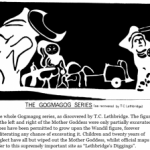
Hooked?
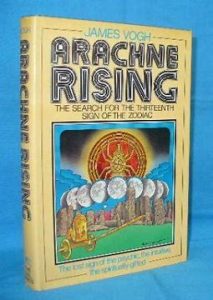 And/or: "The Goddess is a lovely slender woman, with a hooked nose, deathly pale face {snow white?}, lips red as rowan berries, startling blue eyes and long fair hair; she can suddenly transform herself into sow, mare, bitch, vixen, she-ass, weasel, serpent {'coils of Nature'?}, owl, she-wolf, tigress, mermaid and loathsome hag {i.e., twelve aspects? i.e., in the negative {shadow/unconscious? sense of the word?}. Her 'names' and titles are innumerable. In ghost stories she often figures as the White Lady, and in ancient religions, from the British islands to the Caucasus, as the White Goddess {therefore S/E - N/W 'Europa'? Recall same direction with 'Bog' bodies} - or muse, the Mother of all living, the ancient 'power' of 'freight' and 'lust' - the female spider or the queen bee whose 'embrace' is 'death' {towards a 'rebirth'?}. HENCE ''Housman offered a secondary test of true poetry: 'everything that reminds me of her goes through me like a spear' {''Tip/wounded'' link}. This is equally pertinent to the Theme.....The THEME, briefly, is the antique story, which falls into thirteen chapters and an epilogue of the birth, life, death and resurrection of the God of the Waxing year; the central chapters concern the gods losing battle with the god of the Waning year for 'love' of the capricious and all powerful Threefold Goddess {soul}….The poet identifies himself {spirit} with the god of the Waxing year and his Muse {'anima'} with the Goddess; the rival is his blood brother {'shadow'}, his other self, his weird....'' [Page 24 'The White Goddess' / R. Graves].
And/or: "The Goddess is a lovely slender woman, with a hooked nose, deathly pale face {snow white?}, lips red as rowan berries, startling blue eyes and long fair hair; she can suddenly transform herself into sow, mare, bitch, vixen, she-ass, weasel, serpent {'coils of Nature'?}, owl, she-wolf, tigress, mermaid and loathsome hag {i.e., twelve aspects? i.e., in the negative {shadow/unconscious? sense of the word?}. Her 'names' and titles are innumerable. In ghost stories she often figures as the White Lady, and in ancient religions, from the British islands to the Caucasus, as the White Goddess {therefore S/E - N/W 'Europa'? Recall same direction with 'Bog' bodies} - or muse, the Mother of all living, the ancient 'power' of 'freight' and 'lust' - the female spider or the queen bee whose 'embrace' is 'death' {towards a 'rebirth'?}. HENCE ''Housman offered a secondary test of true poetry: 'everything that reminds me of her goes through me like a spear' {''Tip/wounded'' link}. This is equally pertinent to the Theme.....The THEME, briefly, is the antique story, which falls into thirteen chapters and an epilogue of the birth, life, death and resurrection of the God of the Waxing year; the central chapters concern the gods losing battle with the god of the Waning year for 'love' of the capricious and all powerful Threefold Goddess {soul}….The poet identifies himself {spirit} with the god of the Waxing year and his Muse {'anima'} with the Goddess; the rival is his blood brother {'shadow'}, his other self, his weird....'' [Page 24 'The White Goddess' / R. Graves].

R.I.P

Which ones the weirdo?
Continued: Try ''peculiar'' to work through to a remedy. BEFORE those first impressions play {fantasize?} on the word ''weird.''
'Elephant in the Dark' ?
Oxyrhynchus fish?
A working example: "Vixens are notoriously clever and cunning". [ Jenny Ryan / 'The Chase'].
''Trickster''?
Gobekli-tepe to enlarge.
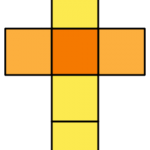
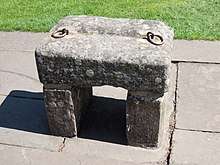
Stone of Scone.
"What is this 'stone' and why is it so called? The great initiator of the Christians invites his believers to build on the stone or rock, if they do not wish their structures to be demolished. He terms himself the corner-stone...It is the foundation of absolute philosophy, it is the supreme and immovable reason [strength; focus of will link. This readers input]. We must possess that reason which is the touch -stone of truth..This 'stone', say the masters in Alchemy, is the true 'salt' of the 'philosophers'; represented as a cubic -stone..." [same chapter, same book]. That link to the 'difference' [i.e.,that which is 'preserved'] between the 'process' of ''incarnation'' relative to ''reincarnation''. Meaning of. Enlarged elsewhere.
"...The one who remembers an experience is also the one who experienced it." Quote by Tomberg.
Forget/remember?

'Flat' top within a 'circumference'? Twice as high as broad? Squaring the circle?
A {working?} example: "How do you define consciousness? Consciousness is considered to be indefinable," I asked,''and indeed how can it be defined if it has an inner quality? With the ordinary means at our disposal it is impossible to prove the presence of consciousness in another man. We know it only in ourselves." ''All this is rubbish'; said G., the usual scientific sophistry. Only one thing is true in what you have said: that you can know consciousness only in yourself {what he defines as 'self remembering'}. Observe that i say you can know, for you can know it only when you have it..." ['In Search of the Miraculous']. Question. ''Manifested''?
'Waters of the Gap'
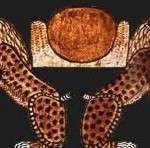
Spotted? And/or 'collar'?
"The headrest from Tut-ankh-Amun's tomb, carved from two pieces of ivory and joined together with golden pegs, represents Shu in his characteristic position of 'raising up the sky' {Tau cross link? i.e.,arms 'raised'. Enlarged elsewhere }...The two lions framing him back to back are frequently represented in the Book of the Dead {Chapter 17} accompanied by the inscription: 'To me belongs today and i know tomorrow. Who is this? Yesterday is Osiris and tomorrow is Re." [Extract from the book by L. Lamy].
"Analogy is the quintessence of the 'philosophical' stone." Quote by same.
Side note: An Egyptian 'mummy' brought into the Pawn shop {'Pawn Stars' / History Channel}. Among others, an image can be seen of 'Isis' laid out on the back of a lion/lioness Evaluated by Egyptian expert Phineas Kastle as: ''probably belonging to a priestess of Isis, possibly of Royal lineage."
Question. 'Kingship' related?
A working example: These Tyrrhenians, usually known as Etruscans, dated their national existence from 967 B.C. Cecrops appears in Greek legend as the first Greek king of Attica and the reputed originator of barley-cake offerings to Zeus. Scota, who has been confused in Irish legend with the ancestor of the Cottians, is apparently Scotia ('The Dark One'), a wellknown Greek title of the Sea-goddess of Cyprus. The Milesians would naturally have brought the cult of the Sea-goddess and of her son Hercules with them to Ireland, and would have found the necessary stone-altars already in position.)


Leavened or UNleavened?
In the Peloponnese the Olympic Games were the occasion of this agricultural Hercules's death and of the election of his successor. The legend is that they were founded in celebration of Zeus's emasculation of Cronos; since the tomb of the early Achaean Oak-king Pelops was at Olympia, this means that the oak-cult was there superimposed on the Pelasgian barley-cult. The most ancient event in the Games was a race between fifty young priestesses of the Goddess Hera for the privilege of becoming the new Chief Priestess. Hercules {Khonsu?} was cut into pieces and eucharistically eaten as before, until perhaps the later Achaeans put an end to the practice, and for centuries after retained some of his oak-tree characteristics: he was known as the 'green Zeus'. The sacrifice of the agricultural Hercules, or the victim offered in his stead, continued to take place within a stone-circle dedicated to the Barley Mother. At Hermion, near Corinth, the stone-circle was in ritual use until Christian times.
Refresher: The various contradictory versions of the Danaid myth help us to understand the ritual from which it originated. Pindar in his Fourth Pythian Ode says that the brides were pardoned, purified by Hermes and Athene and offered as prizes to the victors of public games. Later authorities, such as Ovid and Horace, say that they were not pardoned but condemned everlastingly to pour water into a vessel full of holes. Herodotus says that they brought the mysteries of Demeter to Argos and taught them to the Pelasgian women. Others say that four of them were worshipped at Argos because they provided the city with water. The real story seems to be that the Danaids were an Argive college of fifty priestesses of the Barley goddess Danae, who was interested in giving rain to the crops and was worshipped under four different divine titles; pouring water through a vessel with holes so that it looked like rain was their usual rain-bringing charm. Every four years at the fiftieth lunar month a contest was held as to who should become the Hercules, or Zeus, of the next four years and the lover of these fifty priestesses. This term was afterwards prolonged to eight years, with the usual yearly sacrifice of a child. Danaan Argos was captured by the Sons of Aegyptus who invaded the Peloponnese from Syria, and many of the Danaans who resisted them were driven northward out of Greece; as has already been mentioned. ['The White Goddess'].
Continued: Hercules of Canopus, or Celestial Hercules, is a fusion of the first two types of Hercules with Asclepius, or Aesculapius, the God of Healing, himself a fusion of the Barley-god with a Fire-god. Aesculapius is described by mythographers as a son of Apollo, partly because Apollo in Classical times was identified with the Sun-god Helios; partly because the priesthood of the Aesculapian cult, which was derived from that of Thoth, the Egyptian god of healing and inventor of letters. ' [Page 132 'The White Goddess'].
Akhenaten's daughter?
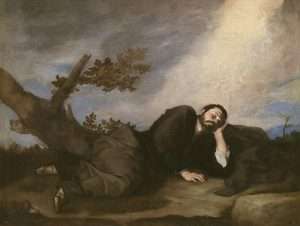
'Stump'?

Metal of the mind.
SIDE NOTE: Many great and wonderful deeds are recorded of your state in our histories. But one of them exceeds all the rest in greatness and valor. For these histories tell of a mighty power which unprovoked made an expedition against the whole of Europe and Asia, and to which your city put an end. This power came forth out of the Atlantic Ocean, for in those days the Atlantic was navigable, and there was an island situated in front of the straits which are by you called the Pillars of Heracles. The island was larger than Libya and Asia put together, and was the way to other islands, and from these you might pass to the whole of the opposite continent which surrounded the true ocean, for this sea which is within the Straits of Heracles is only a harbor, having a narrow entrance, but that other is a real sea, and the land surrounding it on every side may be most truly called a boundless continent. 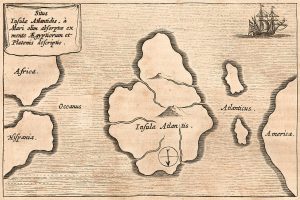 Now in this island of Atlantis there was a great and wonderful empire which had rule over the whole island and several others, and over parts of the continent, and, furthermore, the men of Atlantis had subjected the parts of Libya within the columns of Heracles as far as Egypt, and of Europe as far as Tyrrhenia. This vast power, gathered into one, endeavored to subdue at a blow our country and yours and the whole of the region within the straits, and then, Solon, your country shone forth, in the excellence of her virtue and strength, among all mankind. She was pre-eminent in courage and military skill, and was the leader of the Hellenes. And when the rest fell off from her, being compelled to stand alone, after having undergone the very extremity of danger, she defeated and triumphed over the invaders, and preserved from slavery those who were not yet subjugated, and generously liberated all the rest of us who dwell within the Pillars. But afterward there occurred violent earthquakes and floods, and in a single day and night of misfortune all your warlike men in a body sank into the earth, and the island of Atlantis in like...
Now in this island of Atlantis there was a great and wonderful empire which had rule over the whole island and several others, and over parts of the continent, and, furthermore, the men of Atlantis had subjected the parts of Libya within the columns of Heracles as far as Egypt, and of Europe as far as Tyrrhenia. This vast power, gathered into one, endeavored to subdue at a blow our country and yours and the whole of the region within the straits, and then, Solon, your country shone forth, in the excellence of her virtue and strength, among all mankind. She was pre-eminent in courage and military skill, and was the leader of the Hellenes. And when the rest fell off from her, being compelled to stand alone, after having undergone the very extremity of danger, she defeated and triumphed over the invaders, and preserved from slavery those who were not yet subjugated, and generously liberated all the rest of us who dwell within the Pillars. But afterward there occurred violent earthquakes and floods, and in a single day and night of misfortune all your warlike men in a body sank into the earth, and the island of Atlantis in like...

Atlas = ''the first cervical vertebrae.''
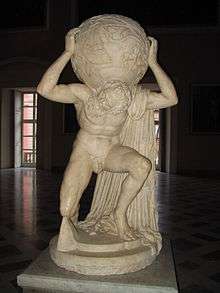
What would the remedy be for such a weight ''upon ones shoulders''?
Their king, the eldest, recieved a name from which the ocean, as well as the whole island, got its designation, it is called Atlantic, because the name of the first king of old times was Atlas. His younger twin brother, to whose share fell the extremity of the island off the Pillars of Heracles, fronting the region now known as Gadira, from the name of his territory, was called in Greek Eumelus, but in the language his own country Gadirus, and no doubt his name was the origin of that of the district. One of the second pair was called Ampheres, the other Evaemon, the elder of the third Mneseus and his junior Autochthon, the elder of the fourth Elasippus, the younger Mestor; Azaes was the name of the elder of the fifth pair, that of his brother Diaprepes. All these and their descendants for many generations reigned as princes of numerous islands of the ocean besides their own, and were also, as has been already said, suzerains of the population of the hither or inner side of the straits, as far as Egypt and Tyrrhenia. [Pages 1159/1219 'Plato: Collected Dialogues'].
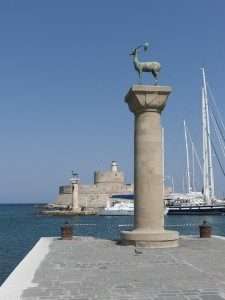
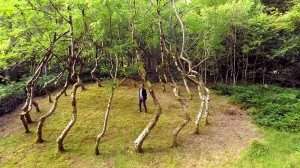
A circle {'circlet'?} of Ash. 'Dome' shaped? Question. Male or 'female' aspect?
And/or: The third tree is the ash. In Greece the ash was sacred to Poseidon, the second god of the Achaean trinity, and the Meliai, or ash-spirits, were much cultivated; according to Hesiod, the Meliae sprang from the blood of Uranus when Cronos castrated him. In Ireland the Tree of Tortu, The Tree of Dathi, and the Branching Tree of Usnech, three of the Five Magic Trees whose fall in the year A.D. 665 symbolized the triumph of Christianity over paganism, were ash-trees. A descendant of the Sacred Tree of Creevna, also an ash, was still standing at Kiilura in the nineteenth century; its wood was a charm against drowning, and emigrants to America after the Potato Famine carried it away with them piecemeal.
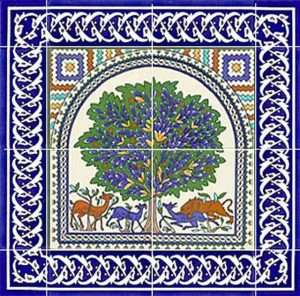
Clearly the attainment spells the eclipse of the Dragon. Where light shines no darkness can there abide. For being the basis of the instinctual life, harnessed and chained to the needs and clearly perceived ideals of the psyche, the dragon shuns the sunbeams and the daylight. No longer do its projections and compulsive automatisms haunt the light of consciousness. No longer is the personality tortured as by some foul and evil presence. Its needs and dictates, once so imperious, cease their urgency, finding their proper place within the natural economy.

Common factors?
In British folk¬ lore the ash is a tree of re-birth—Gilbert White describes in his History of Selborne how naked children had formerly been passed through cleft pollard ashes before sunrise as a cure for rupture. The custom survived in remoter parts of England until 1830. The Druidical wand with a spiral decoration, part of a recent Anglesey find dating from the early first century A.D., was of ash. The great ash Yygdrasill, sacred to Woden, or Wotan or Odin or Gwydion, has already been mentioned in the context of the Battle of the Trees; he used it as his steed. But he had taken the tree over from the Triple Goddess who, as the Three Norns of Scandin¬ avian legend, dispensed justice under it. Poseidon retained his patronage of horses but also became a god of seafarers when the Achaeans took to the sea; as Woden did when his people took to the sea. In ancient Wales and Ireland all oars and coracle-slats were made of ash; and so were the rods used for urging on horses, except where the deadly yew was pre¬ ferred. The cruelty of the ash mentioned by Gwion lies in the harmful¬ ness of its shade to grass or corn; the alder on the contrary is beneficial to crops grown in its shade. So also in Odin's own Runic alphabet all the letters are formed from ash-twigs; as ash-roots strangle those of other forest trees. The ash is the tree of sea-power, or of the power resident in water; and the other name of Woden, 'Yggr', from which Ygdrasill is derived, is evidently connected with hygra, the Greek for 'sea' (literally, 'the wet element'). The third month is the month of floods and extends from February 18th to March 17th. In these first three months the nights are longer than the days, and the sun is regarded as still under the tutelage of Night. The Tyrrhenians on this account did not reckon them as part of the sacred year. [Page 169 'The White Goddess' / R. Graves].
Sea Peoples?
'Victory'?
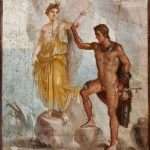
Stepping stones.

"Four Corners Monument, marking the only spot in the United States where four states (Arizona, Utah, Colorado, and New Mexico) come together."
And/or: The Great Square of Pegasus is an asterism, an unofficial pattern. Its upper-left corner (when viewed from the UK) is marked by Alpheratz, the primary star of Andromeda, the remaining corners belonging to Pegasus. The shape represents the upside-down torso of Pegasus the Flying Horse.

Fir-cone = pine cone?
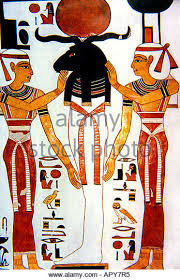
''Born from the forehead of {as one example} Zeus'' OR ''Her name, which Plutarch in his Roman Questions absurdly derives from carens mente, 'out of her mind' seems to be compounded of 'Car' and menta...''? [Page 331 'White Goddess' / R. Graves].
Pinewood Studios?

'Wheels' of time?
Side note: Artemis Caryatis may be identified with Carmenta, the Muse mother of Evander the Arcadian, who adapted the Pelasgian alphabet to the Latin. Her name, which Plutarch in his Roman Questions absurdly derives from carens mente, 'out of her mind' seems to be com¬ pounded of Car and Menta: the first syllable standing for Q're, the second presumably for Mann 'the revealer'. Pliny preserves the tradition that 'Car, after whom Caria takes its name, invented augury'; this Car, evidently Thothmes's Great God Ker, is mentioned by Herodotus as brother to Lydus and Mysus, the eponymous ancestors of the Lydians and Mysians. Another Car, the son of Phoroneus, and brother of Pelasgus, Europe and Agenor, is said by Pausanias to have been an early king of Megara after whom the acropolis of the city was named.
Side step: ''On a telephone key pad the number TWO button has the letters A,B,C.'' ['Lightening'].
And/or: ''The Angel of the North weighs TWO hundred tons. With 600 tons of concrete for the foundations. A total therefore of '800'....''

''M''?
 Continued: ''By the time he had reached the comparative safety of the pine trees, the land all around was being drained of darkness, leaving a residue of a grey dull light which prefigured the dawn of the shortest day of the year. Tom threw himself down on a cushion of pine needles....he felt like a black void was enveloping him....he lay on his side with kness to his chest {'child/rebirth' link?}....he did not blink even when the reluctant sun opened its indifferent eye on the horizon, shooting its level beams the length of the valley {Stonehenge causeway?} Beyond the plantation of firs and pines, was the small forest of oaks which extended to the rear of the 'hotel'....Apart from midsummer, the winter solstice was Hannah's favourite day....Today the sun was in its last decline...Tomorrow would bring not just a new day but a New Year when the reborn sun would begin to 'loop' higher in the sky and lengthen the days downhill towards summer...The beauty of the morning suggested to Hannah that the sun was hastening joyfully towards death, eager for its resurrection the following day....It was still early in the day, but already the waning moon was as high in the pale sky as the declining sun. The winter solstice was drawing to a close. The last of the tall pines threw long shadows across Winston Powell's fields....the road gleamed dully like gunmetal in the dying light.'' [Pages 164/170/173/188 'The Serpents Circle'].
Continued: ''By the time he had reached the comparative safety of the pine trees, the land all around was being drained of darkness, leaving a residue of a grey dull light which prefigured the dawn of the shortest day of the year. Tom threw himself down on a cushion of pine needles....he felt like a black void was enveloping him....he lay on his side with kness to his chest {'child/rebirth' link?}....he did not blink even when the reluctant sun opened its indifferent eye on the horizon, shooting its level beams the length of the valley {Stonehenge causeway?} Beyond the plantation of firs and pines, was the small forest of oaks which extended to the rear of the 'hotel'....Apart from midsummer, the winter solstice was Hannah's favourite day....Today the sun was in its last decline...Tomorrow would bring not just a new day but a New Year when the reborn sun would begin to 'loop' higher in the sky and lengthen the days downhill towards summer...The beauty of the morning suggested to Hannah that the sun was hastening joyfully towards death, eager for its resurrection the following day....It was still early in the day, but already the waning moon was as high in the pale sky as the declining sun. The winter solstice was drawing to a close. The last of the tall pines threw long shadows across Winston Powell's fields....the road gleamed dully like gunmetal in the dying light.'' [Pages 164/170/173/188 'The Serpents Circle'].
A Shot across the Bow? or a ''snapshot'' of something?
Continued: ''Pelagia the Penitent, Pelagia of Antioch, Pelagia of Tarsus etc., - are all fictions built on the epithet of Aphrodite Pelagia, ''Sea''....'' [Page 781 'The Women's Encyclopedia of Myths and Secrets'].

On the TIP of N/W Europe.
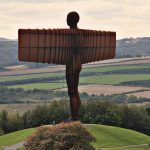
Commissionair?
The ''Sea Peoples'' that ancient literature cannot define an origin for? Fish tailed?
And/or: Cyprus a link to 'copper' as Cornwall is to 'tin'. Question. Where would 'lead' / 'silver' / 'gold' be a representation from?
And/or: ''The Hoar way or Harrow Way begins at Marazion in Cornwall....'' 3:5.
''In Cornish myth Gogmagog was a giant.''
Greece = Marble?
Brass = 'Mountains'/Alexander link? Try 2:4

 The first brilliant cuts were introduced in the middle of the 17th century. Known as Mazarins, they had 17 facets on the crown (upper half). They are also called double-cut brilliants as they are seen as a step up from old single cuts. Vincent Peruzzi, a Venetian polisher, later increased the number of crown facets from 17 to 33 (triple-cut or Peruzzi brilliants), thereby significantly increasing the fire and brilliance of the cut gem, properties that in the Mazarin were already incomparably better than in the rose. Yet Peruzzi-cut diamonds, when seen nowadays, seem exceedingly dull compared to modern-cut brilliants. Because the practice of bruting had not yet been developed, these early brilliants were all rounded squares or rectangles in cross-section (rather than circular). Given the general name of cushion—what are known today as old mine cuts—these were common by the early 18th century.
The first brilliant cuts were introduced in the middle of the 17th century. Known as Mazarins, they had 17 facets on the crown (upper half). They are also called double-cut brilliants as they are seen as a step up from old single cuts. Vincent Peruzzi, a Venetian polisher, later increased the number of crown facets from 17 to 33 (triple-cut or Peruzzi brilliants), thereby significantly increasing the fire and brilliance of the cut gem, properties that in the Mazarin were already incomparably better than in the rose. Yet Peruzzi-cut diamonds, when seen nowadays, seem exceedingly dull compared to modern-cut brilliants. Because the practice of bruting had not yet been developed, these early brilliants were all rounded squares or rectangles in cross-section (rather than circular). Given the general name of cushion—what are known today as old mine cuts—these were common by the early 18th century.

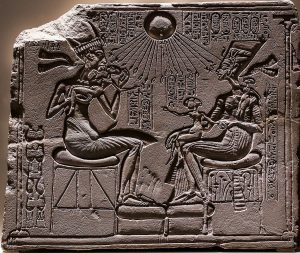
House Altar depicting Akhenaten, Nefertiti and Three of their Daughters, c. 1350 B.C.E. On limestone. Question. What are EACH sat on?
Continued: ''St Michael's Mount (Cornish: Karrek Loos yn Koos,[1] meaning "hoar rock in woodland")[2] is a tidal island in Mount's Bay, Cornwall, England, United Kingdom. The island is a civil parish and is linked to the town of Marazion by a causeway of granite setts, passable between mid-tide and low water. It is managed by the National Trust, and the castle and chapel have been the home of the St Aubyn family since approximately 1650.
Historically, St Michael's Mount was a Cornish counterpart of Mont-Saint-Michel in Normandy, France, with which it shares the same tidal island characteristics and a similar conical shape, though Mont-Saint-Michel is much taller.''
''Its Cornish language name—literally, "the grey rock in a wood"—may represent a folk memory of a time before Mount's Bay was flooded, indicating a description of the mount set in woodland. Remains of trees have been seen at low tides following storms...''
Recall ''grey boulders'' at Elephantine/Egypt.

Cubit? + ''Round the corner from the 'bulls eye' {Pantheon} in Rome = 'Eye of the needle'? or just a ''broad back'' upon which a journey can continue? Short or far sighted?

''What news of the outside world? Tell me everything!'' ''Everything?'' replies Gandalf. ''Far to eager and curious for a Hobbit. Most unnatural. Well what can i tell you? Life in the WIDER world goes on, much as it has done in this past Age full of its own comings and goings.'' {Conversation between Frodo Baggins and Gandalf on the eve of his uncles birthday. Bilbo's 111th: 'Fellowship of the Ring'}. ''Ishon'' to enlarge.
Side note: "King Agamemnon's home in Mycenae, the golden city with its famous Lion Gate, was linked to the familiar lion-like shape of the constellation Leo; the steeply rising Peloponnese mountains along the Bay of Corinth {'east'?} became the Lion's broad back, and an ancient route from Mycenae via Cleonae to Corinth became his front legs..." ['Homers Secret Iliad'].
One could also say..."Analogy {by way of objectivity} = purpose of. Benefits of.
'Gates of perception'?
'On Having No Head: Zen and the Rediscovery of the Obvious' / D. E. Harding.
''Backbone of the Great Bear'' and/or the ''Spine of Osiris''. Enlarged elsewhere. Coincidence or a meaningful one?
"Quintessence'' - represented with the 'four' elements together with the 'divine bit'. Therefore 'five' in number symbolism. Come back to it later. Try Part 4.
Try ''five'' to 'see' it in all its manifestations.
Side note: 'Man Alive' = 5
Punjab (/pʌnˈdʒɑːb, -ˈdʒæb, ˈpʊn-/; Gurmukhi: ਪੰਜਾਬ; Shahmukhi: پنجاب; Punjabi: [pə̞ɲˈdʒäːb] ⓘ; also romanised as Panjāb or Panj-Āb)[b] is a geopolitical, cultural, and historical region in South Asia. It is specifically located in the northwestern part of the Indian subcontinent, comprising areas of modern-day eastern-Pakistan and northwestern-India. Punjab's major cities are Lahore, Faisalabad, Rawalpindi, Gujranwala, Multan, Ludhiana, Amritsar, Sialkot, Chandigarh, Shimla, Jalandhar, Patiala, Gurugram, and Bahawalpur.
Punjab grew out of the settlements along the five rivers, which served as an important route to the Near East as early as the ancient Indus Valley civilization, dating back to 3000 BCE,[3] and had numerous migrations by the Indo-Aryan peoples. Agriculture has been the major economic feature of the Punjab and has therefore formed the foundation of Punjabi culture, with one's social status being determined by land ownership.[3] The Punjab emerged as an important agricultural region, especially following the Green Revolution during the mid-1960s to the mid-1970s, and has been described as the "breadbasket of both India and Pakistan.
' Duck and Dive' = 'twentyfive'.
Duck and Dive' = 'twentyfive'.
![220px-Paderborner_Dom_Dreihasenfenster[1]](https://esotericbasics.co.uk/wp-content/uploads/2019/04/nhy1.jpg)
Refresher: " A soul that possessed a link of 'sympathy' with the mystery of the heavens - such was Hermes...
"There is a mosque whose foundation was laid from the first day on piety; it is more worthy of thy standing forth therein." [i.e., in relation to ''The original mosque of piety built by the Muhammad himself]..."Which then is best? - he that layeth his foundation on piety to God and his good pleasure? - or he that layeth his foundation on an undermined sand cliff ready to crumble to pieces?" [Quran 9:108/109].

Fake news. Sympathy vote?
A working {personal?} example: "We shall i believe, never fully understand our evolution, nor see in the glimmering light about us the sign posts that point the way into the future, unless we recognize the greatness of our spiritual heritage. Innumerable books have been written and the most painstaking researches have been made for centuries past, and an enormous mass of material has been collected from the mythology, traditions, and legends of every country in the world, but it seems as though some vital link is missing. Fact is piled upon fact, old documents are deciphered, folklore is compared with folklore, archeologists dig, and astronomers calculate, and poets dream - but in the end the opinion is fostered that the ancient wisdom was as the babbling of childhood compared with the intellectual reasoning of grown men. Seven hundred years ago there was a different outlook. John of Salisbury, who was Bishop of Chartres at the beginning of the 13th century, wrote: 'Our time is served by the beneficence of former days, and often knows more than the later, but not, naturally; because the spirit of our time is the greater, but because it rests upon other powers and upon the ripe wisdom of our fathers'. And he goes on to quote: ' We are like dwarfs who have climbed onto the shoulders of giants, so that we may see more than they and further {'horizon' link?} - but not because of the sharpness of our own eyesight or the tallness of our stature, but because we have been lifted up and exalted by the greatness of the giants'." ['The Flaming Door'].
Cave / Mountain as a means...?
Together with...
"Everyone has an internal thought process: that silent other self who speaks to you; the one you debate with." [First sentence; first paragraph; first page of the book by Q. S. Lam].

'Fire'?
And/or: "But perhaps another solution of the problem may be available. The 'highly' developed is always replaced by the 'underdeveloped', the civilized by the barbarian. This is the inevitable course of history. Today, however, a new factor has come into play. Through the study of the unconscious we have found a way to be reconciled with the barbarian within ourselves {'giant'?}. The world drama {'Feast of Fools' link?} can be and indeed not infrequently is played out within the individual. Power and prestige abstracted from the highly developed parts of the psyche are 'applied' to the more lowly parts so that they may be educated - may be raised from their position of barbarism and degradation. By this process the individual can pass from an exclusively intellectual and rational attitude to one where focus latent in the unconscious {archetypes?} are given due recognition and are thus no longer in stark opposition to the conscious attitude. " ['Women's Mysteries: Ancient and Modern' / M. Harding].

64 objective aspects? Good or bad?
REFRESHER: ''This whole section of what is commonly known as Jesus' Sermon on the Mount has to do with the attitude Christians bring into the world. Our attitude is much like the lens through which we see the world. If one's attitude is focused on things of 'God', we are more able to see the world through God's eyes.''
5:9 to enlarge.
'Intellectual' v 'Gnosis' ? Enlarged elsewhere.

'fire' in a different form.
Hence: " The interpretation of the moon mysteries {as one example} suggested in the following chapters links our modern life problems to those of the ancient peoples who recognized that in their day, as in ours, the world at times became sterile, and was laid waste, not by war or pestilence, but because some essential fertilizing spirit had been withdrawn." Same book.
'The Waste Land' / T. S. Eliot.
Refresher: Gnosis in relation to the ''cognitive faculty'' {i.e.,root of}. Question What 'number' represents it AND why?

'Shoulder' 'stump' or mushroom?

Armenia: Noah's Ark.
"I stood upon a high mountain, and saw a giant and a dwarf, i heard as it were a voice of thunder and drew nigh to hear. He spake unto me and said, 'I am thou and art i and where - so - ever thou mayest be, i am there. In all i am scattered, and whence - so - ever thou willest, thou gatherest me, and in gathering me, thou gatherest thyself." [The Gospel of Eve].
Question. Anima or animus related? As a means...? Or just mumbo jumbo?
Side note: Families competing for the 'Iron' throne in the series Game of Thrones. Giants {north} and dwarfs {south} included . Is the original author using 'subject' material as a means {method}...?
Something to ponder on: "What scripture says about Og, ''Behold, his bedstead was an iron bedstead, nine cubits in length," {Deut.3-11}….The bedstead is never the same dimensions as the person sleeping in it...it is always greater by a third....'The cubit of a man' means the measure of an ordinary man and not by the measure of Og…" [Page 248 'Guide for the Perplexed'].
The 'third' of something in relation to 'sleep'. Try ''nine'' and/or ''iron'' and/or ''North''.

Hercules: stretching from just west of the head of Ophiuchus to Draco, its eastern border on the Milky Way, is one of the oldest sky figures....like a toiling man, revolves A form. Of it can no one clearly speak, Nor to what toil he is attached ; but, simply, Kneeler they call him. Labouring on his knees, Like one who sinks he seems.... . . And his right foot Is planted on the twisting Serpent's head.
'Gold/Silver' as a means....?

Shortest name = 'Tom'?
A work in progress?: ''Anglesey is also home to the village with the longest name in Europe - LlanfairpwllgwyGOGerychwyrndrobwilliantysilioGOGOGOCH....'' ['Readers Digest' / April 2021].
A ''third''?
'Circle of Giants' link? Therefore those ''blue stones''?
Side note: The town with the longest name in the world........... aumatawhakatangihangakoauauotamateaturipukakapikimaungahoronukupokaiwhenuakitanatahu.

Side note: Rock art may provide insights into the fluid cosmological relationships between people and other living beings. Described here is an iconographic cluster of Basketmaker II-III figures referred to as the “duck complex” with its geographic focus in the central San Juan region of Utah and Arizona. It consists of images of ducks themselves, as well as depictions of anthropomorphs with ducks on their heads that are often associated with fluteplayers, atlatls {spear thrower} and darts, speared animals and figures that have quail topknots as headgear. I propose that the varied scenes represent episodes of supernatural travel by ritual practitioners enabled by the duck because of its capacity for speed and its ability to negotiate various vertical layers of the cosmos.
This is the name of a town on the east coast of New Zealand, and its translation from Maori goes something like this: “The place where Tamatea, the man on the big knees who slipped, climbed and swallowed mountains, known as the land eater, he played the flute to his loved one.” Funny name for a town, right?
'She Who Loved Silence'?
"The North Atlantic Ocean is opposite to New Zealand. It is antipodal to. Spain, Portugal, Gibraltar and the tip of Morocco."
Pillars of Hercules?
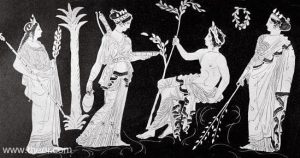
Any 'lightening'?
And/or: "In our investigation into the origins of Gog and Magog, it is necessary to pay particular attention to the remarks made about them by Ezekiel....He was a Hebrew priest, who was among those carried into captivity by Nebuchadnezzar about 600 B.C., and gave out his prophecy shortly after this....an invasion of Palestine led by the people of Gog....In point of fact, the invasion never took place....Ethiopia, and Libya are mentioned among the 'enemies' - it is clear that the 'expected' attack is from the North {N/W?}....Now in Syria, in the Jebel-el-Druz area, lived Og, the king of Bushan. He was a giant, and his 'city' or land was Ashtaroth. It may just be a coincidence that he was a giant and that his name was Og: but, when he is also associated with Ashtaroth, the Great Mother goddess who, in later times at any rate, was also a moon goddess, there are too many coincidences. Og must be the same as Gog, Ashtaroth the same as Magog...." [Page 10/108/109 'GogMagog'].

What do 'colours' represent. 'Pyr'amid texts?
Refresher: ''The Greeks sometimes identified Asteria with the Phoenician goddess Ashtarte. It is not known if the Greek goddess was in fact derived from the Phoenician. However, other Greek gods worshipped around the Aegean, such as Melikertes (Phoenician Melqart) and Ino-Leukothea were indeed imported from the East....
''Asteria may have been a goddess of dream oracles worshipped as Brizo (Slumber) on the island of Delos and as Ino-Pasiphae in Lakonian Thalamai (Thalamae). The Pasiphae of Thalamai was a dual sky and sea goddess who sent prophetic dreams.

Silver/Gold?
Pausanias, Description of Greece 3. 26. 1 (trans. Jones) (Greek travelogue C2nd A.D.) :
"From Oitylos (Oetylus) to Thalamai (Thalamae) [in Lakedaimonia (Lacedaemon)] the road is about eighty stades long. On it is a sanctuary of Ino and an oracle. They consult the oracle in sleep, and the goddess reveals whatever they wish to learn, in dreams. Bronze statues of Pasiphae and of Helios (the Sun) stand in the unroofed part of the sanctuary. It was not possible to see the one within the temple clearly, owing to the garlands, but they say this too is of bronze. Water, sweet to drink, flows from a sacred spring. Pasiphae is a title of Selene (the Moon), and is not a local goddess of the people of Thalamai."[Internet].
All as a means....? Try ''naked'' and or ''garment''.
Amarna also was 'open' to the sky.
Side note: ''The Minack Theatre (Cornish: Gwaryjy Minack) is an open-air theatre, constructed above a gully with a rocky granite outcrop jutting into the sea. The theatre is at Porthcurno, 4 miles (6.4 km) from Land's End in Cornwall, England.[1] The season runs each year from May to September. As of 2012, some 80,000 people a year see a show, and more than 100,000 pay an entrance fee to look around the site.[2][3] It has appeared in a listing of the world's most spectacular theatres.''

Right angle? 'Cap' of 'gold'?
 The theatre was the brainchild of Rowena Cade, who moved to Cornwall after the First World War and built a house for herself and her mother on land at Minack Point for £100.[3] Her sister was the feminist dystopian author Katharine Burdekin , and her partner lived with them from the 1920s.[5] In 1929, a local village group of players had staged Shakespeare's A Midsummer Night's Dream in a nearby meadow at Crean, repeating the production the next year. They decided that their next production would be The Tempest and Cade offered the garden of her house as a suitable location, as it was beside the sea. Cade and her gardener, Billy Rawlings, made a terrace and rough seating, hauling materials down from the house or up via the winding path from the beach below. In 1932, The Tempest was performed with the sea as a dramatic backdrop, to great success. Cade resolved to improve the theatre, working over the course of the winter months each year throughout her life (with the help of Rawlings and Charles Angove), so that others might perform each summer.''
The theatre was the brainchild of Rowena Cade, who moved to Cornwall after the First World War and built a house for herself and her mother on land at Minack Point for £100.[3] Her sister was the feminist dystopian author Katharine Burdekin , and her partner lived with them from the 1920s.[5] In 1929, a local village group of players had staged Shakespeare's A Midsummer Night's Dream in a nearby meadow at Crean, repeating the production the next year. They decided that their next production would be The Tempest and Cade offered the garden of her house as a suitable location, as it was beside the sea. Cade and her gardener, Billy Rawlings, made a terrace and rough seating, hauling materials down from the house or up via the winding path from the beach below. In 1932, The Tempest was performed with the sea as a dramatic backdrop, to great success. Cade resolved to improve the theatre, working over the course of the winter months each year throughout her life (with the help of Rawlings and Charles Angove), so that others might perform each summer.''
And/or: ''Admiral of the Open Sea is a book about Christopher Columbas, the explorer.''
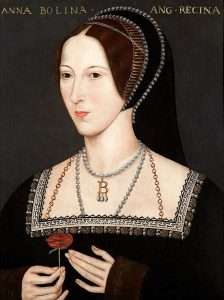
Noble lasses?
''King Ferdinand and Queen Isabella of Spain granted him majestic titles such as “Admiral of the Ocean Sea” and “Viceroy and Governor” of all the the islands and lands he discovered as well as a claim to one-tenth of any treasure he found.''
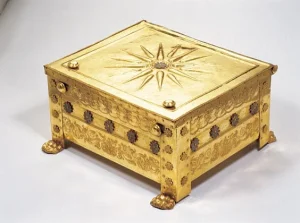
REFRESHER: "The tomb of Phillip II was found in the modern Greek village of Vergina, the site of Aigai. Objects from the tomb included an ivory head {bedpost}, a gold wreath with myrtle leaves and flowers; a gold quiver cover; a gold larnax, or ossuary, decorated with a sunburst {'SIXTEEN' pointed} or star likely containing Phillips remains; and a gold ornament of the gorgon Medusa." N.B. WALKED WITH A LIMP. 'Sixteen' to enlarge.
Continued: N.B. King 'Tut' - who had a 'crippled' left foot {'Tutankhamun: The Truth Uncovered'}. Speculation as to why. Same thought process given as to why ALL items - within the 'tomb' - seem to have been {'gathered'} very quickly...
"One of the important teachings contained in this chapter {i.e., Chapter twentyfive of the Book of the Dead} is the idea of remembrance. Spiritual 'enlightenment' is not something new that is added to a person. It is a gathering and making whole one's consciousness so as to discover one's true identity as One with the 'divine'. Thus the initiate asks that they be given their 'name'...." [ Page 212 'Egyptian Book of the Dead' / M Ashby]. 'See' anything?
Analogy of same; but from a different perspective; a different 'start point' {bottom - up?}...
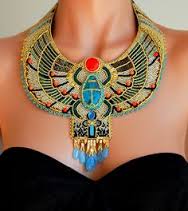
"Some heads are graced by golden crowns. Golden crowns and jewelled diadems detract from the beautiful tresses of other heads because the tresses of beauties are traps of love, which is the heart's throne. A golden crown is a lifeless thing; the wearer is the heart's beloved." 'Signs of the Unseen' / Jalaluddin Rumi].
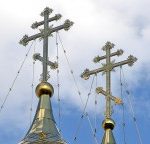 Continued from Part 1:"...Eurynome was a daughter of Oceanos, and she and Thetis recieved Hephaestus in their lap, in the depths of the waters, when he was flung into the sea. This imagery is important, providing ancient links between the 'heavenly' and 'underworld' powers. Hephaestus, the great Smith of the gods, often depicted as a lame dwarf, was the misbegotten child of Hera, the queen of the Olympian gods, who threw him from 'heaven' into the 'sea', to be saved and nurtured by the ancient goddesses Thetis and Eurynome, for whom he fashioned jewellery in a grotto by the great underground sea. He also had as his companion the Kaberiroi, another line of ancient underworld gods and servants of the Great Mother - who were sea gods and smiths. And later he became associated with the volcanic powers of Etna and Vesuvius. His importance in ancient myth is preserved in 'confused and conflicting' {purposely?} - stories about births engendered by Zeus and Hera. It is said that Hera bore Hephaistos unaided as an act of spite and emulation when Zeus bore Pallas Athene from his 'head'...Another story says Hephaistos assisted in the birth by...[Extract from the book by G. Knight].
Continued from Part 1:"...Eurynome was a daughter of Oceanos, and she and Thetis recieved Hephaestus in their lap, in the depths of the waters, when he was flung into the sea. This imagery is important, providing ancient links between the 'heavenly' and 'underworld' powers. Hephaestus, the great Smith of the gods, often depicted as a lame dwarf, was the misbegotten child of Hera, the queen of the Olympian gods, who threw him from 'heaven' into the 'sea', to be saved and nurtured by the ancient goddesses Thetis and Eurynome, for whom he fashioned jewellery in a grotto by the great underground sea. He also had as his companion the Kaberiroi, another line of ancient underworld gods and servants of the Great Mother - who were sea gods and smiths. And later he became associated with the volcanic powers of Etna and Vesuvius. His importance in ancient myth is preserved in 'confused and conflicting' {purposely?} - stories about births engendered by Zeus and Hera. It is said that Hera bore Hephaistos unaided as an act of spite and emulation when Zeus bore Pallas Athene from his 'head'...Another story says Hephaistos assisted in the birth by...[Extract from the book by G. Knight].
''Volcanic powers'' = the {beginning?} of the 'crystallisation' of something - representation of.
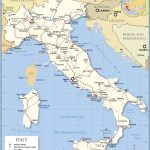
Buskin? Right or left foot? And/or: Caligula was known as Little {soldier} boot.
A working example: ''The Dreamtime shifts, and a second trunk emerges from the family tree, this one rooted in volcanic ash: My mothers ancestors were vintners on Mount Etna....looking to get the perfect grape....Sicily is home of Demeter, the place where her daughter Persephone was said to be playing among the flowers....when Hades snatched {'stole'?} her to be his bride/queen.'' [Page 21 'A Mythic Life'].
Tip-toe?
Side note: ''Suffolk Red is a variety of seedless grape.'' ['The Chase'].
And/or: ''Sicily is the largest island in the Med.''
Synchronistic example: {i.e., of author}: ''One morning at 3:00 AM, my delirium took the form of a group of women in flowering hats....My mother who had moved a bed into my room to take care of me was sleeping. The women looked over to her form and said, 'Jean, wake up your mother and tell her to give you the blood test that's given to alchoholics.'' [Page 190/1 same book].

Beatrice in disguise?

Portal?
The above author {i.e., J. Houston} understands the ''women'' to be: ''My collective body wisdom, somewhat whimsically attired but bearing crtical information that was unavailable to my conscious mind but able to reach me in my feverish altered state.'' What she has not 'realised' is the myth of Sekhmet { a 'known' aspect of herself} in relation to blood/beer RELATIVE to: ''As for my participation, i found that my guiding activity stopped at the threshold of the spiritual level {'fire'?}. Just as Virgil had to leave Dante at the portals of the 'realms of bliss' {'beauty' link?} and could not enter 'paradise' with him, so i as guide {dog/jackal and or airedale?} could do more than bear witness to the culmination of the process i had launched. I hoped an inner guide belonging to a deeper realm {silence/lakes?} would take up the task of guidance, as Dante was met by the divine Beatrice which helped him 'see' - the love that moves the sun and all the stars.'' [Page 182].
Equinoxes {i.,e the middle ground} therefore precession?
Senet board game.
Try ''Paisley'' to enlarge. And/or the legend/myth of Fulcanelli for an alternative example with SAME principle/purpose in mind.

Address: 126 Maplewood Drive. Great neck, Long island.
A working example: "The 'smaller' pyramid of Mycerinus {Menkaure} is dressed in rough granite but polished around the entrance. Choice of type of stone was generally dictated by symbolic consideration - i.e., granite, a volcanic rock was a 'fire' stone. To date, the symbolic meaning of the Mycerinus pyramid is unknown." ['Serpent in the Sky'].
'Panther' to enlarged.
And/or: Saturn, as you know, is the binding, crystallizing vibration. The pair of opposites assigned to it is Dominion and Slavery, because our expression of this 'vibration' {i.e., in the ''energy'' sense of the word, i.e., recall J. Campbell's quote}, either frees or limits us, according to the point of view that we take. " [Page 51 of the book by P. F. Case. Vol 1].
And/or: ''As has been said, Ra is not the sun itself, but rather the solar energy {'spirit'?} which, during the course of its daily cycle, animates all the organic {'soul'?} functions of the human body, one after the other, at each hour of the day and night. It is in this way that we are subject to it....'' ['Sacred Science'].

'light oxen': "I bring up an individual type as a point of departure to talk about. The one {'emotion'?} that is strongest will pull you first." [Page 4 'Stopping and Seeing' / Translated by T. Cleary].
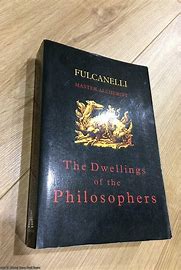
Mantle of the earth relative to the mantle of the fireplace. As a means....? Hestia?
Side note: "It will be recalled that the famous discovery of the pithecanthropus of Trinil in Java consisted solely of a skullcap, two teeth, and a femur. During the course of a years excavations, these elements were found fifteen meters apart in a layer of ashes and tufa at the base of a volcano..." R. A. Schwaller De Lubicz Try ''charcoal/ashes'' and/or ''teeth'' and/or ''crystalliz{s}ation''.
Coincidence or a meaningful one?
A {working?} example: "In order to be able to speak of any kind of future life there must be a certain crystallisation, a certain fusion of man's inner qualities - a certain independence of external influences." ['In Search of the Miraculous'] .
Follow the title of the book to see it in its broader context.
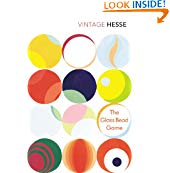 Landscape equivalent?: " The 'oil of sand' we will be using is water glass, a commercially available aqueous solution of sodium or potassium silicate...This commercial 'water glass' is in fact the same material Glauber used, but he made his, by heating powdered sand with sodium carbonate and then dissolving the fused, glassy mass in water - a bit to arduous for us. The commercial material is just as good...It is used routinely in crystal-garden kits sold as educated toys." ['The Chemistry of Alchemy']. Try ''Isle of Glass'' for a 'connection'.
Landscape equivalent?: " The 'oil of sand' we will be using is water glass, a commercially available aqueous solution of sodium or potassium silicate...This commercial 'water glass' is in fact the same material Glauber used, but he made his, by heating powdered sand with sodium carbonate and then dissolving the fused, glassy mass in water - a bit to arduous for us. The commercial material is just as good...It is used routinely in crystal-garden kits sold as educated toys." ['The Chemistry of Alchemy']. Try ''Isle of Glass'' for a 'connection'.
"The whole of the Perseus mythology is of relevance to the 'Goddess' powers, and our consideration of them will not be complete until we have examined their central holy of holies, the Garden of Hesperides. This was in the far West {S/W?} of the great underground sea of Okeanos. It was sometimes said to lie at the far end of a red sea. This is another allusion to the far West, and the apparent path to it made by the setting sun inflaming the waters with its reflection {'orange'?}. In later Olympean mythologies, it was said that Zeus, the king of the gods, had a palace there. This emphasizes their importance, but their origin is more accurately indicated in the belief that they were the possession of Hera, {top-down?} the Queen of the gods, and had been given to her as a wedding gift by Gaia, {bottom-up?} the most ancient Earth goddess, the source of all life on earth. 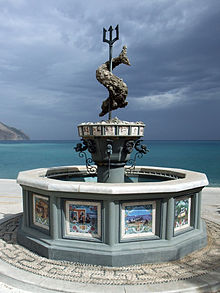 The 'marriage' bed of Hera, was even said to be located here, and the creative aspect was emphasized by the fruitfulness of the earth and by the many fountains that jetted forth. It was the site also of an orchard and in particular of a special tree which bore golden apples. This tree was guarded by a serpent, called Ladon, which is also the name of a river in Arcadia. This is not inappropriate, for Arcadia was by tradition an idyllic pastoral land, and a river is one of the most ancient symbols for the fount of life. One of the most ancient Greek creation myths saw all life as having come from a primal river, Eridanus, which also has a constellation dedicated to it, that stretches along the horizon between the celestial hemispheres.
The 'marriage' bed of Hera, was even said to be located here, and the creative aspect was emphasized by the fruitfulness of the earth and by the many fountains that jetted forth. It was the site also of an orchard and in particular of a special tree which bore golden apples. This tree was guarded by a serpent, called Ladon, which is also the name of a river in Arcadia. This is not inappropriate, for Arcadia was by tradition an idyllic pastoral land, and a river is one of the most ancient symbols for the fount of life. One of the most ancient Greek creation myths saw all life as having come from a primal river, Eridanus, which also has a constellation dedicated to it, that stretches along the horizon between the celestial hemispheres.
"Beneath the apple tree I awaken you." [Song of Songs 8:5].
Side note: Apple Island and Frog Island close by to Oak Island. Coincidence?


"According to the Book of Genesis, after the Great Flood, Noah’s Ark came to rest on the mountains of Ararat 1. While the specific mountain is not precisely identified, the Bible mentions that the ark settled on the mountains (plural), suggesting a range rather than a single peak 2. The term “Mount Ararat” is commonly associated with this event, but the Scriptures do not specify that the ark landed on the very top of the modern-day Mount Ararat, which stands nearly three miles (5 kilometers) above sea level " 'Gebel el Silsila'?
A working example: "Cetus is sometimes represented swimming in the River Eridanus, although usually as resting on the bank with fore paws {N.B. Not the hind ones} - in the water. Its head, directly under Aries, marked by an irregular pentagon of stars, and its body stretching from the bend in Eridanus to that in the Stream from the Urn...Aquarius is not conspicuous, being, chiefly marked by the stars that represent the Urn, the familiar 'Y' - called Urna by the Latins...On the right arm of {the 'Waterman'. N.B. Not 'woman'} -On the right arm at the inner edge of the Urn, and the westernmost star in the Y, is Sadachbia, from Al Sa'd al Afibiyah, which has been interpreted the Lucky Star of Hidden Things or Hiding-places, because when it emerged from the sun's rays all hidden worms and reptiles, buried during the preceding cold, creep out of their holes! But as this word Ah biyah is merely the plural of H'iba', a Tent, a more reasonable explanation is that the star was so called from its rising in the spring twilight, when, after the winter's want and suffering, the nomads' tents were raised on the freshening pastures, and the pleasant weather set in. This idea renders Professor Whitney's " Felicity of Tents " a happy translation of the original..... are included with y under this designation by Ulug Beg, in the centre, marking the top of the tent; Kazwini, however, considered this central star as Al Sa'd, and the three surrounding ones his tents....

The Tent of Meeting, also known as the Tabernacle, {pitched outside the camp} is a significant biblical location where God met with His people, the Israelites. It was a temporary dwelling place for the Ark of the Covenant and the other holy items used in worship. ....
......This idea of the Fish drinking the Stream is an ancient one, and may have given rise to the title Pisces aqueous, found with Ovid...Vergil mentioned it in his directions for the gathering the honey harvest...In Babylonia it was associated with the 11th month Shabatu, the Curse of Rain...and the Epic of Creation has an account of the Deluge in its eleventh Book, corresponding to this the 11th constellation; each of its other books numerically coinciding with the other zodiacal signs. In that country its Urn was known as the Seat of the Flowing Waters and the God of the Storm...Still earlier it was known as Lord of Canals, an Akkadian word for Aquarius some 15000 years ago when the sun entered it and the Nile flood was at its height... " [Notes within Cetus, Aquarius and Pisces 'Star Names and Their Meaning'].
N.B. The word ''foundation'' used for many of the stars in the same 'Y' grouping.
Define those keys to understand something further. Start off with ''paw'' / ''bend'' {U-turn}. Then ''Canal'' Part 3 i.e., 3:8
Y HWH?
"I will open my mouth in parables, i will utter what has been hidden, since the foundation of the world." [Matthew 13.35].
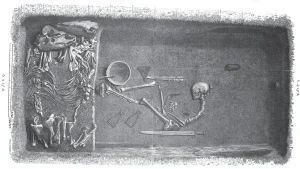
The tomb at the center of the debate is known as Bj 581, after its location when it was excavated at the Birka settlement on the island of Bjorko, which is west of Stockholm, with easy access to the Baltic Sea. (Unesco designated the settlement a World Heritage Site in 1993.)

Kiosk at Philae facing east.
Side note: "Eleven are the Eleven that went to Heaven’ is not merely a reference to the Apostles minus Judas Iscariot. It links up with the crossing of the Abyss, an eleventh area (not a sphere) which bridges this gap left by the Fall into Matter. The hole is said to be gradually closing as we evolve back into the Divine Plan of Perfection. There is also a complicated argument connected with the origin of the signs of the Zodiac, which may have been ten in number at one time, but were later further divided. What is more probable is that tenfold and twelvefold systems evolved spontaneously, as the magical images themselves did, without a great deal of regard for historical events.
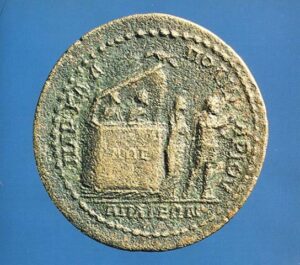
This large bronze medallion was struck 1700 years ago at Apameia Kibotos in Asia Minor (modern Turkey) near the mountains of Ararat where, it is said, Noah’s Ark came to rest after the flood.
Twelve, therefore, for the Twelve Apostles is quite reasonably connected, due to the Zodiac signs that they absorbed during their growth to superiority in the Western world....“Twelve was the Gates of Hell’ is quite contrary to the usual reading of Twelve Apostles. If we count downwards on the Tree of Life {YHW?}, and allow eleven for the bridging of the Abyss, twelve is the number below that of the mortal world. Traditionally this world was said to be the nearest to Hell....The use in these texts of Eleven as the Crown of Heaven may also be more than mere rhyme convenience, as the fallen Crown is supposed to be restored to its rightful place by the return across the Abyss." {'Where is Saint George: Pagan Imagery in English Folksong' / Bob Stewart}.

The Bedouin tent, or bayt al-sha'r, is a portable and adaptable dwelling that allows the Bedouins to easily relocate their homes as needed. The tent is made of woven goat or camel hair, which provides insulation and protection from the elements.

A hiding place?
Refresher with something added: "Aquarius is not conspicuous, being, chiefly marked by the stars that represent the Urn, the familiar 'Y' - called Urna by the Latins...On the right arm of {the 'Waterman'. N.B. Not 'woman'} - at the inner edge of the Urn, and the westernmost star in the 'Y' , is Sadachbia - which has been interpreted the Lucky Star of Hidden Things or Hiding Places...But as this word Ah biyah is merely the plural of H iba, a Tent, a more reasonable explanation is that the star was so called from its rising in the spring twilight, when, after the winters suffering, the nomads tents were raised on the freshening pastures. This idea renders Professor Whitneys ' Felicity of Tents' - the stars included under this designation - in the center - marking the top of the 'tent'...Although unnamed, the star at the center of the 'Y' of the Urn, is almost exactly on the celestial equator." [Same book].
{'Y'} : Confluence of 'two' rivers? How would that be represented in the night sky?
''Tent'' in relation to Exodus and/or Wilderness years? And/or: The ''huts'' within the Land of Punt?
Tropic of Cancer/Capricorn?

Monkeys in the orchard?
"Of considerable importance in this sequence, although easily overlooked in the welter of symbolism, is the fact that this process of dividing the worthy from the unworthy, at the border between inner and outer 'levels', takes place in a garden around a fountain. The fountain, together with a garden, orchard, or grove of trees, is an almost invariable feature of entrances to the 'inner' planes in esoteric mythology."
Question. Different aspects of a {core?} theme? i.e., 'apple of the eye'?
Side note: ''Apple Island'' mentioned in relation to 'Oak Island'. Coincidence? {Series 6. Episode 7}.

'Apple of the eye'?
Same question too: "Another common local belief is that the large snails found along the Pilgrim's Way close to Charing were originally introduced to the area by Norman pilgrims who dropped them along the way....Cartwright makes reference to snails at both Albury in Surrey and at Charing in Kent. The particular variety in question is the helix pomatia, or Apple snail, and is usually known as the Roman snail in England, due to its likely introduction into southern England by the Romans. Today it can be found in chalk and lime habitats, which explains it occurrence on the edge of the chalk escarpment....H. S. Ward, in The Canterbury Pilgrimages, notes that stories of the existence of Roman snails abound throughout the southern counties." [Page 66 'The Pilgrims Way' / D. Bright].
Refresher: "Beneath the apple tree i awaken you." Song of Songs. Coincidence?

Side note: Words like ''Apple teeth'' / ''Giant'' used in relation to 'Hogmagog Hills' as referred to by T. Lethbridge as he attempts to unravel the mystery of Gogmagog - within the book of same title.
Connect those keys to attempt a mindset. Try ''hoar''.
A working example: FORD WARRIOR: "This burial was found in the remains of a barrow near Ford, Salisbury. It was found next to an early Bronze Age burial mound and near to the Roman road from Old Sarum to Winchester. Both the barrows were flattened due to ploughing and were uncovered accidentally during the course of farming. In 1964 the site was excavated by a team from Salisbury Museum.

Found in the "hanging bowl" were crab apples and onions. [Digging For Britain / S4 EP1].
This burial may have been deliberately placed next to the Bronze Age barrow and the Roman road. The link between old monuments and burial, often on the boundaries of settlements and estates, was common practice at this time. It may have been an attempt to show a link between the recently deceased and the earlier generations of people who lived in the area."
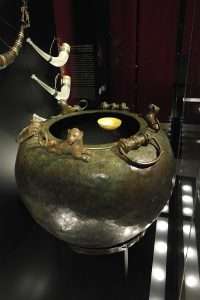
All bronze. Cauldron with three 'handles' and three reclining lions.
Something extra {add it all together to 'see' something}: "As to our assertion that scriptures applies the notion of ''influence'' to 'God', compare: 'They have forsaken me, the fountain of living waters" {Jer.ii.13}, i.e., the 'Divine' influence that gives life or 'existence'; for the two are identical. Further, ''For with thee is the fountain of life'' {Ps.xxxvi.10}, i.e.,the Divine influence that gives existence. The concluding words of this verse, ''In thy light we 'see' light,'' express exactly what we said, namely, that by the influence of the intellect which 'emanates' from god we become wise, by it we are guided and enabled to comprehend the Active intellect. Note this." [Page 171 'Guide for the Perplexed'. Emphasis, this readers].
Question. Top/down or bottom/up or both?
And/or: "In the Greek myths, the serpent guardian {Ladon?} was tended by three humans, also linked with darkness. Even in Greece, at the beginning of our western civilisation - the 'Daughters of Evening' - were born of darkness. The three Hespirides, who were also guardians of the golden apples, were born of Erebus and night...The 17th century alchemist, Michael Maier, chose to ignore the darkness implicit in the story of the Hesperides...Maier was interested in the 'destiny' of the golden apples, once they had come to earth, for he saw them as 'seedings' of spiritual wisdom... " ['The Zelator']. Try ''seed''.
Something unknown becoming known {i.e.,the 'eve'{ning} of something}. 'SEE' IT?
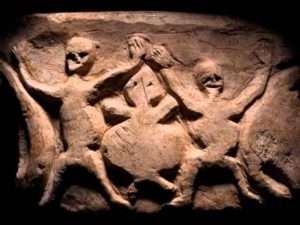
 Additional information: within a working example {the very first one?}: "Homer perceived Mercury's appearance at dawn and dusk as being that of two planets. Venus is another planet that can only be seen before either dawn or dusk and is never in the sky in the middle of the night; narrative indicates that Homer recognized Venus at morning and evening as the same object. In chapter 6, we give profiles of Hera as the moon, Athene as Jupiter, Ares as Mars, Aphrodite as Venus, Apollo as Mercury at dawn and Hermes as Mercury at dusk, as well as the Smith god Hephaestus as the constellation Perseus, and of Thetis, {and her nymphs} - Achilles goddess mother - as the constellation Eridanus. There is no portrait of Zeus, controller of the heavens and the most powerful god of all, for he does not represent a physical aspect of the universe but is an 'all-knowing' abstract concept {''lighting up''?}. Even his home on Olympus and Mount Ida are important astronomical ideas rather than tangible entities." ['Homer's Secret Iliad'].
Additional information: within a working example {the very first one?}: "Homer perceived Mercury's appearance at dawn and dusk as being that of two planets. Venus is another planet that can only be seen before either dawn or dusk and is never in the sky in the middle of the night; narrative indicates that Homer recognized Venus at morning and evening as the same object. In chapter 6, we give profiles of Hera as the moon, Athene as Jupiter, Ares as Mars, Aphrodite as Venus, Apollo as Mercury at dawn and Hermes as Mercury at dusk, as well as the Smith god Hephaestus as the constellation Perseus, and of Thetis, {and her nymphs} - Achilles goddess mother - as the constellation Eridanus. There is no portrait of Zeus, controller of the heavens and the most powerful god of all, for he does not represent a physical aspect of the universe but is an 'all-knowing' abstract concept {''lighting up''?}. Even his home on Olympus and Mount Ida are important astronomical ideas rather than tangible entities." ['Homer's Secret Iliad'].
In other words all aspects {higher/lower} within the whole {i.e.,''zeus'', i.e.,what it represents}. Recall Part 1.
Question. ''Higher/lower'' and/or 'shadow/anima' = Trojan/Greek. Which and why?
And/or: "Insofar as Homer gives some mortals dual roles as stars and constellations, it is perhaps not surprising that major gods may also represent constellations as well as planets. Hephaestus is one of these and, as well as being the artificer who created the constellation, he has as his personal abode in the skies the constellation of Perseus, which he shares with Diomedes." Same book.
Follow the title of the book to 'see' it from different perspectives.
A working example: ''There was a question in the air. I didn't know how to answer him. Disquising lameness with firmness i said: That's very fair of Caldwell. Its the best thing. It must be for the best.'' [Page 20 'Mercurius'].
For a further 'head scratch' put ''dwarf'' in the usual box. Especially Part 3.

